7 Landing Page Optimization Tips for More Lead Generation

Every great journey begins with a single step, and in the world of business, that first step often takes the shape of trust. Trust is what makes people pause, explore, and eventually connect. When it comes to lead generation, your landing page is that very first handshake with your audience. For Indian businesses navigating a fast-changing digital space, this handshake decides whether a visitor stays or moves on. With more people discovering products and services online, your landing page quietly becomes the deciding factor in building stronger customer relationships. Done right, it turns curiosity into genuine interest. In the coming discussion, we’ll uncover simple yet powerful ways to optimize your landing page so it works tirelessly for you. The Role of Landing Pages in Lead Generation When someone clicks an ad, a social post, or a search result, they expect a purposeful destination. A landing page fulfills that role with one simple mission: encourage a visitor to take the next step. Unlike a homepage that covers many topics, a landing page concentrates on a single action and guides the visitor toward that outcome. Think of the landing page as the bridge between interest and commitment. A clear headline, purposeful content, simple design, and a compelling call to action create a short journey that ends with an easy decision. Indian audiences appreciate clarity and value that feels authentic. With affordable internet and growing regional content, many decisions begin on mobile screens. A landing page that prioritizes clarity and relevance helps visitors move confidently from curiosity to contact. This single page transforms casual visits into useful leads for sales teams, service providers, or educators. Why Landing Page Optimization Matters for Indian Businesses India’s digital landscape grows every day, with many users accessing the internet from mobile devices. Businesses compete across regions and languages, so every interaction must feel purposeful. A small improvement in clarity or speed can create a meaningful difference in how visitors respond. Mobile-first design matters because many users browse while commuting, waiting for a meeting, or during a short break. Fast load times, readable text, and touch-friendly elements make engagement simple. Indian consumers place strong value on trust signals such as testimonials, reviews, and local references. Presenting these cues clearly helps visitors feel confident about sharing contact details. Optimization transforms landing pages into focused conversion pathways. By designing with the audience’s daily habits and expectations in mind, businesses convert attention into useful contacts. That steady stream of leads supports growth in ways that feel grounded and reliable, forming the foundation of effective lead generation. 7 Landing Page Optimization Tips for Lead Generation 1. Craft a Clear and Compelling Headline The headline is the first line of your conversation with a visitor. Make it clear, benefit-driven, and specific. A strong headline answers: What will the visitor gain? Why should they stay? For example, “Scale Your Local Business with Simple Digital Marketing” communicates intent and benefit in a single sentence. Use plain language that resonates with everyday experience. Keep the headline concise so mobile users can read it instantly. Follow the headline with a short supporting line that adds one important detail, such as a unique benefit or a simple promise. This combination helps visitors understand value at a glance and keeps the page focused on lead generation. 2. Simplify Your Page Layout Simplicity encourages action. A clean layout directs attention to the most important element on the page: the call to action. Use white space to separate ideas and guide the eye. Limit the number of competing elements so visitors complete the intended action without distraction. For Indian audiences with varied digital familiarity, clear sections and readable fonts improve comfort. Place the main message and CTA high on the page so visitors can act immediately. Remove extra links that pull attention away from the conversion path. When the layout stays focused, visitors move through the page with ease and confidence, strengthening lead generation. 3. Use Engaging Visuals and Short Videos Visuals convey emotion and context quickly. Choose images that feel authentic and relevant to the audience. Photographs showing real people, local settings, or relatable situations create an instant connection. Short videos provide clarity and trust. A 30- to 60-second explainer or a brief customer story makes benefits tangible. Ensure videos load quickly on mobile by using compressed formats and clear captions. Visual storytelling works well in India, where quick, visual content often prompts action. Pair visuals with short captions that reinforce the main message so visitors understand the offer at a glance. By presenting relatable visuals, businesses enhance lead generation with trust and clarity. 4. Strong Call to Action A CTA converts interest into a concrete step. Use an action verb and a clear promise: for example, “Get Your Free Trial” or “Start Your Free Audit.” Place one main CTA above the fold and repeat it at logical moments further down the page. Design the CTA button to stand out with a readable size and generous padding so users on touch screens can tap easily. Surround the CTA with a brief supporting line that builds confidence, such as a short note about time commitment or a simple guarantee. When the CTA communicates immediate value and requires a small effort, visitors feel comfortable completing the action, encouraging strong lead generation. 5. Mobile Optimization Is Essential Design for small screens from the start. Mobile optimization includes faster load times, touch-friendly buttons, and concise forms. Ensure images and videos adapt to different screen sizes and avoid long content blocks that require excessive scrolling. Simplify navigation on mobile by keeping one clear path to conversion. Use large tap targets and simple menus so visitors complete actions quickly. Prioritize page speed by compressing media and minimizing heavy scripts. When the mobile experience is smooth and quick, visitors are more likely to engage and provide contact details. This seamless experience strengthens lead generation for businesses engaging mobile-first audiences. 6. Build Trust with Social Proof Trust signals increase confidence. Display brief testimonials that highlight specific outcomes,
How to Use Email Marketing for Lead Generation Success

Business often feels like planting seeds; the way you care for them shapes the harvest you receive. In today’s digital world, that care usually begins with an email landing in someone’s inbox. Email marketing for lead generation creates a direct path between a brand and its audience, reaching people in metropolitan areas and small towns with equal ease. It carries the power to build trust, spark curiosity, and gently guide potential customers toward meaningful action. For Indian businesses, it has become a tool that blends tradition with modern communication. The question that excites many is simple: how can an email open doors to consistent leads and growth? Let’s explore the journey step by step. Why Email Marketing Matters for Lead Generation Email marketing for lead generation continues to hold strong even in the age of social media, influencer campaigns, and instant ads. India’s digital audience, which crossed 800 million internet users in 2023, still values the reliability of email as a communication channel. Unlike fleeting content on other platforms, email sits in the inbox until it is read or acted upon. For businesses, this makes it a sustainable way to nurture long-term relationships. Another reason email marketing for lead generation matters is cost-effectiveness. Startups, small businesses, and even established brands can reach thousands at once without heavy budgets. Research by Statista shows that the average ROI for email marketing globally is 36x, meaning every rupee spent potentially brings 36 in return. That makes it especially valuable for Indian businesses that aim to maximize impact while keeping costs lean. Must Read: Why Every Business Needs Digital Marketing in 2025 Understanding the Indian Audience To truly use email marketing for lead generation, it is essential to understand how Indian audiences engage online. Indians often respond to communication that feels personal, familiar, and culturally relevant. For instance, emails tied to festivals such as Diwali offers, Independence Day sales, or Rakhi gift guides tend to see higher open rates. Language also plays a role: while English dominates, regional languages are becoming increasingly important as more tier-2 and tier-3 city users come online. Trust is another big factor. People in India often prefer signing up with brands that promise real value, such as discounts, expert insights, or exclusive updates. A conversational tone and authenticity go a long way in building credibility. When email marketing for lead generation aligns with local culture and habits, it builds stronger connections. Building the Right Email List At the heart of successful email marketing for lead generation is a quality list. Sending bulk emails without focus often leads to disengagement, while a targeted list ensures better results. Businesses can grow this list organically by offering value through website sign-ups, event registrations, or social media promotions. For example, an e-commerce brand can invite visitors to subscribe for first access to festive deals. Lead magnets work beautifully in the Indian context. Free guides, e-books, early access to sales, or festival discounts encourage people to join mailing lists. Hosting online webinars or offering loyalty points also helps businesses build authentic connections. The key is to focus on value-driven exchanges rather than one-sided promotions. A strong list makes email marketing for lead generation smoother and more impactful. Crafting Emails That Spark Action Once the list is ready, the real magic of email marketing for lead generation begins with the email itself. Subject lines are the first hook, and short, clear, curiosity-driven ones perform best. For Indian audiences, adding a touch of cultural relevance or festive excitement can significantly boost open rates. The content inside must feel personal and conversational. Instead of overly formal text, simple storytelling works better. Businesses should personalize beyond just the first name by segmenting audiences based on interests or previous interactions. Adding visuals, GIFs, and clear calls-to-action (CTAs) enhances engagement. For example, a fashion retailer can share personalized recommendations, while a local café can highlight seasonal offers. Every email should carry value that gently nudges readers toward the next step. Automation and Timing Strategies Timing plays a huge role in email marketing for lead generation. Many Indians check emails during their commute, evening breaks, or weekends. Aligning campaigns with these habits increases visibility. Festivals, paydays, and shopping seasons also offer perfect opportunities. Automation makes the process more efficient. Tools such as Mailchimp, HubSpot, and Zoho (popular among Indian SMEs) help schedule emails, segment audiences, and trigger follow-ups automatically. For example, a welcome series for new subscribers can set the tone, while reminder emails for abandoned carts can recover sales. By combining automation with the right timing, businesses ensure that their email marketing for lead generation runs smoothly without losing a human touch Measuring Success: Key Metrics to Track For email marketing for lead generation to succeed, measuring results is crucial. Open rates indicate how compelling subject lines are. Click-through rates (CTR) reflect how engaging the content and CTAs appear. Conversion rates show how many people took action—signed up, bought a product, or registered for an event. Businesses in India can use tools such as Mailchimp, Sendinblue, or Zoho Campaigns to track these metrics. Over time, analyzing such data reveals audience preferences and helps refine future campaigns. Metrics also prevent guesswork, turning email marketing for lead generation into a data-backed growth strategy. Real-Life Examples and Case Studies Consider an Indian e-commerce brand offering traditional wear. By running an email campaign before Diwali, sharing style tips, and adding exclusive discounts, the brand saw a significant rise in orders. Another example is a SaaS startup in Bengaluru that used email marketing for lead generation by offering free trial guides and product tutorials, resulting in steady customer growth. These stories show how different sectors, from retail to tech, can benefit. By tailoring campaigns to audience needs, businesses turn simple emails into powerful growth engines. The success of email marketing for lead generation often lies in a thoughtful strategy rather than flashy design. Common Mistakes to Avoid While email marketing for lead generation is effective, certain practices weaken results. Sending too many emails overwhelms
7 Organic Instagram Growth Tips You Can Use Today

In a world where attention carries great value, Instagram becomes a stage where ideas, creativity, and businesses find their spotlight. True Instagram growth flows through genuine connections that turn followers into a community. Imagine planting seeds and nurturing them with consistency, creativity, and authenticity until a vibrant garden of engagement blossoms. With over 350 million Indians scrolling Instagram every day, the platform serves as a powerful canvas to showcase stories, brands, and dreams. Growth emerges through approaches that create lasting impact and encourage people to engage. Ready to explore simple yet effective ways to make your presence flourish? Here are seven organic Instagram growth tips you can start using today. Why Instagram Growth Matters Today In today’s digital-first India, Instagram growth has become more than just a trend; it has turned into a pathway for opportunity, influence, and visibility. With over 350 million Indians scrolling through their feeds daily, the platform has evolved into a hub where personal stories, businesses, and creative expressions flourish. For a student, Instagram growth may open doors to internships, collaborations, or even personal branding. For small businesses, it means reaching audiences beyond local markets, turning followers into loyal customers. Creators across niches such as food, travel, fitness, or fashion are finding that Instagram growth directly influences their reach, recognition, and career prospects. What makes this even more exciting is how deeply Instagram growth connects with Indian culture. From festive celebrations to cricket updates, users engage actively, and every post becomes an opportunity to grow. The demand for Instagram growth strategies comes not only from influencers but also from entrepreneurs, educators, and community builders who wish to amplify their voices. As India embraces a digital economy, Instagram growth continues to serve as both a creative outlet and a professional gateway. Understanding why Instagram growth matters today lays the foundation for applying the right methods to thrive on this platform. Must Read: The Role of Analytics in Digital Marketing 7 Organic Instagram Growth Tips You Can Use Today Create Content that Feels Real The heart of Instagram growth lies in content that feels genuine and relatable. People connect with stories that reflect everyday experiences, traditions, and emotions. When you share content that mirrors reality, it sparks conversations and builds trust. For example, capturing the essence of Indian festivals, a favorite street food outings, or even behind-the-scenes glimpses of your work, add authenticity to your feed. Authentic storytelling encourages followers to engage more deeply, which directly contributes to Instagram growth. Consistency also matters; posting high-quality images, thoughtful captions, and videos that carry a personal touch makes your profile memorable. As followers begin to see you as someone who offers value and realness, your reach expands naturally. This authentic approach creates long-term impact, proving that Instagram growth comes strongest when content feels true and meaningful. Use Reels Strategically Reels have become one of the most powerful tools for Instagram growth. They capture attention quickly and allow content to reach audiences beyond your followers. By tapping into trending sounds, adding creative editing, and aligning with relatable moments, Reels increase visibility. For instance, showcasing local culture, street food recipes, or even short travel snippets helps your content connect with Indian audiences. The more entertaining and engaging your Reel feels, the higher the chances of shares and saves. This activity directly supports Instagram growth by increasing reach. Reels also remain visible in the Explore section, where new users discover your account. Posting Reels consistently with thoughtful captions and hashtags ensures that your content stands out. Strategic use of Reels creates a rhythm of visibility and plays a central role in achieving consistent Instagram growth. Post at the Right Time Timing plays a vital role in Instagram growth. When you post content at the right moment, you increase the chances of your audience seeing and engaging with it. Many Indian users scroll during lunch breaks, evenings, or late nights, which means understanding your own audience’s active hours is essential. Using Instagram Insights allows you to track when your followers interact the most. Posting consistently at these peak times ensures that your content lands directly in their feeds, increasing likes, comments, and shares. This engagement directly strengthens Instagram growth by boosting visibility. A regular posting schedule also conditions your audience to expect your content, which builds familiarity. Choosing the right moment to publish can transform how your posts perform and give every piece of content an opportunity to contribute meaningfully to your Instagram growth journey. Engage with Your Community True Instagram growth thrives on interaction. Engaging with your community means replying to comments, answering direct messages, and using polls, quizzes, or question stickers to involve followers. This interaction creates a sense of connection and shows that you value your audience. For example, during festivals, many creators interact by asking followers how they celebrate or by sharing user-generated stories. Such gestures strengthen trust and loyalty. When followers feel heard, they are more likely to engage again, boosting your content’s reach. Consistent engagement directly feeds into Instagram growth because the algorithm favors accounts that build strong connections. Whether through small replies or active participation in conversations, nurturing relationships with your followers ensures that your community grows steadily. This sense of belonging is what turns casual viewers into long-term supporters, reinforcing continuous Instagram growth. Leverage Hashtags Wisely Hashtags play a strategic role in Instagram growth by making your content discoverable. They act as searchable keywords that help users find posts in their area of interest. To maximize impact, combine trending hashtags with niche-specific ones. For example, #MadeInIndia, #FoodLoversIndia, or #TravelWithMe bring targeted audiences to your posts. Using hashtags connected to culture, festivals, or community events also boosts relevance. However, the key is to use them thoughtfully rather than stuffing too many into one caption. Instagram allows up to 30 hashtags, but choosing 10 to 15 that match your content makes it more effective. Smart hashtag use allows new audiences to discover your posts, increasing reach and visibility. This simple practice supports steady Instagram growth by connecting
The Role of Analytics in Digital Marketing

In the ever-changing dance of business and technology, data has become the quiet compass guiding every successful move. In India’s buzzing digital bazaar, where every click, swipe, and scroll leaves a footprint, analytics isn’t just a tool; it’s the storyteller behind the numbers. From small chai stalls going online to big brands battling for attention, understanding those patterns can mean the difference between being seen and being scrolled past. But analytics is more than graphs and percentages; it’s about uncovering human behavior hidden in plain sight. In this blog, we’ll explore how this powerful ally shapes strategies, sharpens campaigns, and turns raw numbers into results you can actually feel in your growth journey. Why Analytics Matters in Indian Digital Marketing India’s digital marketing landscape is a vibrant mosaic of cultures, languages, and buying habits. A single campaign can speak to millions while each person expects a personal touch. Analytics makes that possible. By studying the way people browse websites, interact on social platforms, and respond to advertisements, brands find ways to speak directly to their audience. In digital marketing, every action leaves a footprint: clicks, scrolls, purchases, and time spent on a page. Analytics turns these footprints into a clear map. It shows businesses which content gains attention, which platforms host a highly engaged audience, and which messages spark action. This insight helps teams create campaigns that feel relevant and human. Gathering the Right Data Data flows in many forms—website visits, social interactions, app downloads, search queries, and email engagement. Each channel paints a part of the bigger picture of digital marketing. Tools like Google Analytics, social platform insights, and email campaign dashboards collect these details in real time. For example, an online clothing store can observe visitor counts for a new collection, time spent on product pages, and the stage at which customers complete purchases. Privacy-focused tracking methods have gained adoption, keeping people’s information secure while preserving meaningful insights for digital marketing campaigns. Businesses combine online and offline data to create a full understanding of customer behaviour, which makes marketing efforts richer and relevant. Setting Clear Goals and Picking KPIs A successful digital marketing analytics strategy starts with clarity. Before tracking data, it is essential to define business aims. Goals can include brand awareness, user registrations, or sales growth. Once goals are in place, specific metrics, known as Key Performance Indicators or KPIs, measure progress. An education platform aiming to expand its student base might track course sign-ups, time on course pages, and engagement with tutorial videos. Linking each KPI to a goal creates a roadmap that aligns campaign work with measurable outcomes. This ensures digital marketing decisions follow facts and clear evidence. Tools and Integration Digital marketing analytics works best when tools work together. Google Analytics provides deep insights into website activity, while social media analytics reveal how audiences interact with posts. Email platforms report open rates, click-through rates, and subscriber trends. Connecting these tools lets data flow into a single dashboard. This unified view allows marketers to see channel contributions to goals. A festival promotion campaign can track website visits from Instagram ads, engagement on videos, and ticket purchases on the official site within one view. Analysing Behaviour and Attribution Analytics reveals patterns in human actions. Behaviour analysis highlights preferred pages, videos that hold attention, and products that attract interest. Attribution shows the journey people follow before a decision. A customer can discover a brand through a blog, interact with a social post, and complete a purchase after viewing an ad. Tracking this journey helps businesses understand the role of each interaction in creating the final outcome in digital marketing. How to Build a Basic Analytics Dashboard A clear dashboard brings focus to daily digital marketing work. Start with a small set of widgets that show the KPIs tied to your primary goal. For example, a dashboard for a local retailer may show daily visitors, conversion rate, top-selling items, and ad spend versus sales. Choose a tool that fits the team. Many small businesses use spreadsheet-based dashboards at first, then switch to free dashboard tools or business intelligence platforms as needs grow. Include filters for date range and traffic source so the team can explore trends quickly. Design the dashboard for quick reading. Use short titles, clear labels, and a simple layout. Highlight any KPI that needs attention so the team can act fast. Share the dashboard weekly with stakeholders and capture one or two insights to turn into experiments. Optimisation and Personalisation Analytics enables brands to refine digital marketing campaigns with precision. By observing what resonates, marketers tune messaging, creative elements, and timing to keep content relevant. Personalization delivers content that matches individual preferences. A music app may suggest playlists based on listening choices, while an e-commerce site can present products aligned with browsing history. These tailored experiences encourage strong connections with the audience. Experimentation helps validate ideas. Run small tests with different headlines, images, or call-to-action buttons. Record results, learn from them, and repeat the cycle in future digital marketing strategies. Tracking ROI and Benchmarking Every digital marketing effort invests resources, including time, creativity, and budget. Analytics tracks returns by showing the value generated through campaigns, such as sales and registrations. Benchmarking adds context by placing current performance alongside past results or industry averages. When engagement grows during a festival period, analytics highlights the strategies that contributed to that outcome. Indian Case Studies and Practical Tips This section offers concise examples from Indian context and clear steps for action. Case study: A local clothing label A regional clothing label used digital marketing analytics to learn which designs draw visitors. By tracking landing pages, time spent on product pages, and cart activity, the label identified high-interest products and refined ad creatives. Targeted promotions during local festivals led to steady online orders and repeat customers. The team used simple dashboards to view channel performance and stock movement, which helped with timely restocking and marketing focus. Case study: A neighbourhood food service. A small food service adopted
What is Digital Marketing in 2025? A Complete Beginner’s Guide
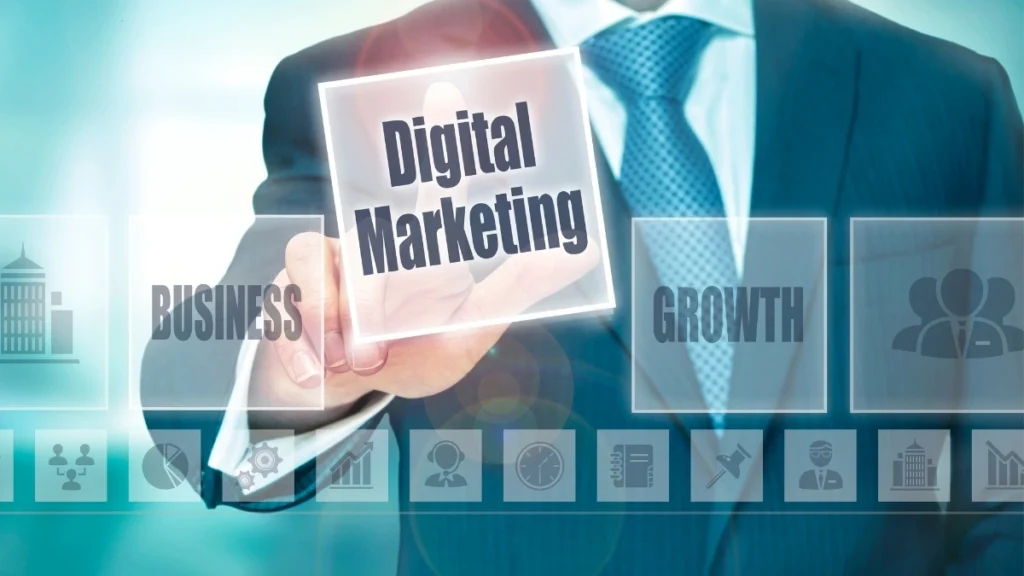
In a world where every scroll, click, and swipe holds meaning, understanding how digital marketing works can feel like learning a new language. Digital marketing in 2025 unfolds as a dynamic tapestry woven with data insights, immersive experiences, and creative sparks that light up audiences across screens. In this beginner’s guide, we’ll explore the essence of modern strategies, uncover the tools powering trends, and offer clear steps to find your place in this evolving ecosystem. Along the way, a thought whispers that progress emerges when curiosity dances with purpose, nudging us to craft meaningful messages that resonate. Ready to dive into tactics that shape brands, engage communities, and spark growth? Let’s begin this journey together. The Digital Marketing Landscape in 2025 Key Technological Drivers Imagine talking to a friend about how digital marketing feels almost sci-fi these days. AI chatbots anticipate customer needs before they even type a question. Augmented reality ads let shoppers “try on” shoes from their living rooms. Voice assistants serve up product recommendations while you’re cooking dinner. These breakthroughs are the foundation of digital marketing trends in 2025, reshaping how brands connect with people. If you’re wondering how to start a career in digital marketing, mastering AI tools and AR/VR basics will put you ahead of the curve. Consumer Behaviours and Expectations Today’s audiences expect lightning-fast responses and personalized experiences. They don’t just want a banner ad—they crave stories that speak directly to their interests. That means tapping into first-party data, tapping into social listening, and embracing zero-party data strategies to deliver hyper-relevant content. In the world of digital marketing, building trust has never been more crucial. For anyone exploring how to start a career in digital marketing, understanding these evolving customer mindsets is step one. By keeping your finger on the pulse of digital marketing trends in 2025, you’ll learn to craft messages that feel less like ads and more like helpful conversations. Also Read: Are Facebook Ads and Google Ads Dead in 2025? Core Components of Modern Digital Marketing Content Marketing Content is the heart of digital marketing: stories, blog posts, videos, and infographics that draw people in. In 2025, interactivity matters, like short tutorials, immersive visuals, and micro-learning modules. If you’re wondering how to start a career in digital marketing, sharpening your storytelling and multimedia skills will set you apart. Social Media & Community Building Social media is all about genuine conversation. Branded groups, live Q&As, and bite-sized challenges spark user-generated content and foster loyalty. To ride the wave of digital marketing trends in 2025, learn each platform’s tools and tone this foundation is key when you’re starting out. Search Engine Optimization & Voice Search SEO remains a cornerstone: it’s no longer just keywords but natural, full-question optimization for voice assistants. Craft content that answers real-world queries like “Where can I find eco-friendly sneakers?” and you’ll stay ahead of the curve and build essential skills for a career in digital marketing. Data & Personalization First-party and Zero-party Data Matter More In today’s digital world, relying on user-consented data is key. As third-party cookies phase out, marketers collect insights through website behavior, email sign-ups, polls, and preference centers. Understanding how to manage this responsibly is a vital part of learning how to start a career in digital marketing. Personalization Drives Engagement People now expect tailored experiences. From product recommendations to custom email content, marketing strategies in 2025 revolve around relevance. Learning to segment audiences and craft personalized messaging helps you stay current with digital marketing trends. AI and Automation Make It Scalable Artificial intelligence tools enable businesses to personalize content for thousands in real time. Whether it’s chatbots, dynamic ads, or smart email flows, automation is a core part of the digital marketing landscape. Privacy and Trust Are Non-Negotiable As personalization increases, so does the need for transparency. Marketers must balance customized experiences with user privacy. If you’re exploring how to get into digital marketing, understanding ethical data use will make you stand out. Emerging Channels & Formats Short-Form Video & Livestreams In today’s fast-moving online space, bite-sized video content has become a go-to format for brands. Platforms like TikTok, Reels, and Shorts are shaping how people discover, learn, and connect. Livestreaming, too, has grown into a powerful way to build transparency and engagement in real time. These formats are key elements of the evolving digital media landscape. For newcomers exploring a career in this field, gaining comfort with video storytelling and live interaction is a practical and creative starting point. Interactive Experiences Modern audiences want to participate, not just watch. That’s why interactive elements like polls, quizzes, swipeable stories, and AR try-ons are becoming staples in brand campaigns. These tools make experiences more personal and memorable. As marketing becomes more experience-driven, understanding how to build interaction into content will be a valuable asset for anyone learning the ropes in online promotion and customer engagement. Essential Tools & Platforms Marketing Automation & Workflow Tools Automation tools like HubSpot, Mailchimp, and Marketo streamline tasks such as scheduling, email campaigns, and customer journey management. Familiarity with these platforms helps you work more efficiently and is a key skill for anyone entering the digital field. Analytics & Performance Tracking Platforms like Google Analytics 4 and SEMrush offer insights into audience behavior, traffic sources, and campaign performance. Understanding how to track and interpret these metrics allows you to make informed decisions and improve results, a must for anyone starting out in digital marketing. Building a Beginner’s Action Plan Step 1: Define Your Goals Start by identifying what you want to achieve—brand awareness, website traffic, lead generation, or sales. Clear goals provide direction for all your digital efforts. Step 2: Identify Your Target Audience Understand who you’re trying to reach. Research their demographics, interests, and online behavior to tailor your content and platform choices accordingly. Step 3: Choose the Right Channels Select 1–2 platforms where your audience is most active—such as Instagram, LinkedIn, or YouTube—and focus your energy there initially. Step 4: Plan Your Content Strategy Create a
Zero to Hero in Microsoft Excel: Complete Excel Guide 2025
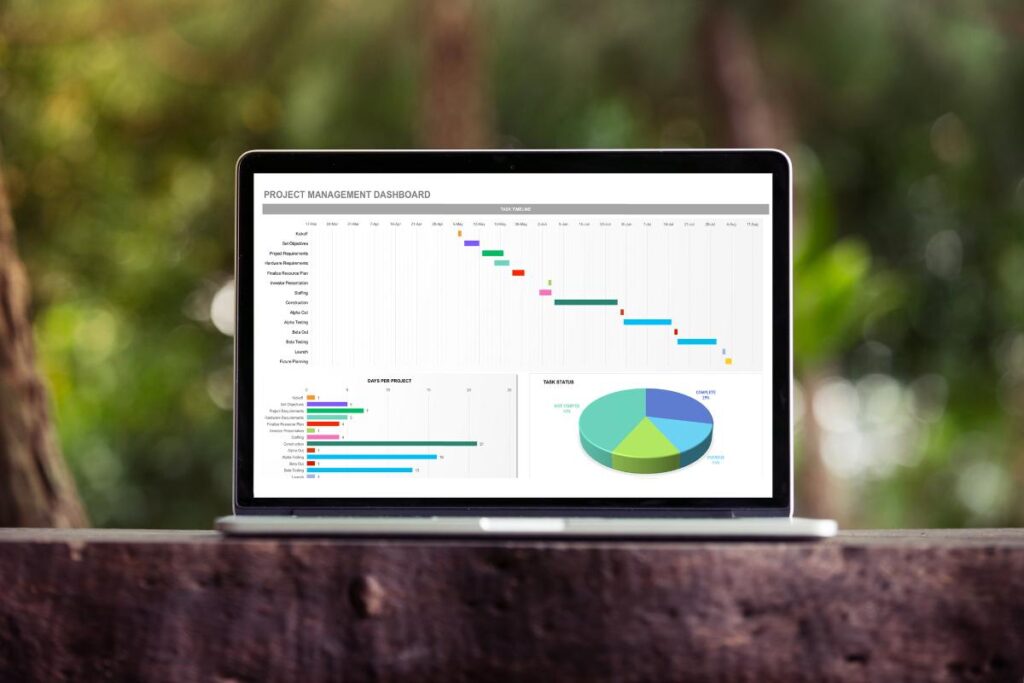
Microsoft Excel continues to be the undisputed powerhouse for data analysis, business intelligence, and productivity in 2025. Whether you are a student, working professional, or business owner, mastering Excel can elevate your efficiency and career prospects. In this complete Excel guide 2025, we walk you through the essential to advanced tools, features, and tricks that will transform you from a beginner to an Excel expert. What is Microsoft Excel and Why is It Still Relevant in 2025? Microsoft Excel is a spreadsheet program developed by Microsoft used to store, organize, and analyze data. In 2025, with constant updates and powerful integrations with Power BI, Microsoft 365, and AI tools, Excel has become more robust and relevant than ever. With enhanced real-time collaboration, automation features, and predictive analytics, it’s essential to learn Microsoft Excel from zero to hero. Getting Started with Excel: The Basics Understanding the Interface The Excel interface in 2025 includes a modern ribbon toolbar, dynamic tabs, AI assistant integration, and a customizable Quick Access Toolbar. Key areas to familiarize: Essential Keyboard Shortcuts Master these Excel shortcuts to skyrocket your speed: Mastering Microsoft Excel Formulas and Functions Excel is nothing without formulas. Knowing the most important Microsoft Excel functions will help you analyze data effectively. Top Excel Functions in 2025 Use formulas with named ranges, structured references, and dynamic arrays to simplify your calculations. Advanced Excel Techniques for 2025 1. Power Query for Data Transformation Power Query is a game-changer. Clean, merge, and transform data effortlessly without manual steps: 2. Power Pivot and DAX Power Pivot allows you to handle millions of rows and build data models. Use DAX (Data Analysis Expressions) for powerful calculations: 3. Excel VBA & Macros Automate tasks using Visual Basic for Applications (VBA): Creating Dashboards in Excel 2025 Building interactive dashboards helps visualize your data effectively. Use: Pro Tip: Use the Camera Tool to embed snapshots of charts and tables dynamically. Integrating Excel with Other Tools Excel and Power BI Send data directly from Excel to Power BI for dynamic business intelligence dashboards. Excel 2025 allows: Excel and Python 2025 introduces seamless Python integration in Excel for advanced statistical and machine learning operations. Use =PY() to run Python scripts directly. Excel and Teams Collaborate in real time using Microsoft Teams and Excel Online. Use @mentions, comments, and version history. Common Mistakes to Avoid in Excel Top Excel Learning Resources 2025 Certifications That Matter in 2025 These certifications not only validate your skills but also enhance your resume and credibility in the job market. Career Paths for Excel Experts in 2025 High-paying jobs often list advanced Excel as a mandatory skill. Upskilling in Excel opens doors to career growth. Conclusion: Your Journey from Zero to Hero in Microsoft Excel Starts Now The demand for Microsoft Excel expertise in 2025 is stronger than ever. From simple calculations to full-scale automation and dashboarding, Excel is an essential skill that offers immense value across industries. Mastering Excel isn’t just a skill—it’s a career investment. Keep practicing, automate where possible, and stay updated with new features Microsoft regularly rolls out.
Google Ads Rolls Out Image Optimization for Performance Max Campaigns
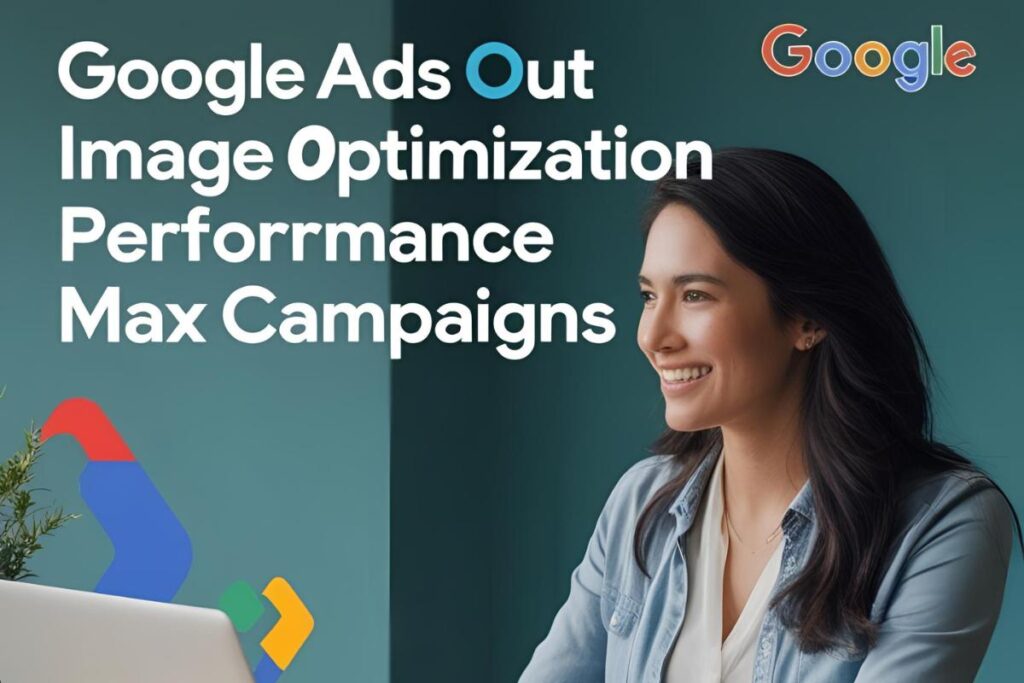
Performance Max, Google’s unified, goal-centric campaign type, has revolutionized how advertisers connect with audiences across the vast Google ecosystem. By offering a single point of access to Google’s entire inventory, spanning Search, Display, YouTube, Gmail, Discover, Image optimization, and Maps, Performance Max streamlines campaign management and maximizes reach. At its core, Performance Max leverages sophisticated automation to dynamically allocate budget and deliver ads to the most promising users at the optimal moments. The recent image optimization rollout marks a significant evolution in the platform’s capabilities, underscoring the undeniable power of visual content in modern advertising. Recognizing that compelling visuals are often the first point of contact and a crucial driver of user engagement, Google is now enhancing the way image assets are processed, delivered, and measured within Performance Max campaigns. This update goes beyond simple resizing and format adjustments; it encompasses intelligent analysis, dynamic adaptation, and actionable performance insights, empowering advertisers to harness the full potential of their visual creatives. While visual content has always played a vital role in capturing attention and conveying brand messaging, this update elevates its importance to unprecedented levels. Image assets are now subject to sophisticated algorithmic optimization, going through a process of intelligent refinement to maximize their relevance to individual users, enhance their visual appeal across diverse placements, and ultimately drive superior campaign outcomes. This algorithmic touch extends to crucial metrics such as CTR (click-through rate), a direct indicator of ad relevance, and conversion rates, the ultimate measure of campaign success. This optimization occurs seamlessly across the diverse channels integrated within Performance Max, including the expansive reach of YouTube, the visual richness of the Display Network, the personalized environment of Gmail, the intent-driven results of Search, and the discovery-oriented feed of Discover. Deconstructing the Google Ads Performance Max Image Optimization Update: A Deep Dive into AI-Powered Enhancements Google’s latest update to Performance Max image handling is underpinned by the power of AI-driven image enhancements, a suite of intelligent capabilities designed to elevate the performance of visual assets without requiring extensive manual intervention. This technological leap provides advertisers with a range of powerful tools and automated processes, including: These AI-powered upgrades are currently in the process of rolling out globally, making it imperative for digital marketers worldwide to grasp the implications and learn how to effectively leverage these new capabilities. Understanding and strategically applying these image optimization features will be crucial for maximizing ROAS (Return on Ad Spend) and achieving superior advertising outcomes in the evolving Performance Max landscape. Unlocking Superior Results: The Core Benefits of Enhanced Image Optimization in Performance Max. 1. Amplified Visual Performance Through Dynamic Adaptation Harnessing the sophisticated capabilities of machine learning, Google’s Performance Max now intelligently adapts your images in real-time based on the specific context of where they are being displayed and the characteristics of the user viewing them. Whether your ad appears on the expansive Google Display Network, the short-form video format of YouTube Shorts, or the personalized inbox of Gmail Promotions, your visual assets are dynamically optimized to ensure they appear crisp, professional, and highly engaging. This intelligent adaptation considers factors such as screen size, aspect ratio, surrounding content, and even user behavior patterns to present the most impactful visual experience 2. Enhanced Ad Relevance and Deeper Audience Engagement By meticulously tailoring images to align with user intent signals and the unique visual conventions of each platform format, Performance Max significantly enhances audience engagement. When users encounter visually relevant and aesthetically pleasing ads, they are more likely to interact with them, leading to a reduction in bounce rates (the percentage of users who leave a landing page without taking further action) and an increase in meaningful user interaction. This heightened engagement directly contributes to improved quality scores, a crucial metric that influences ad rank and cost-effectiveness, and ultimately results in lower CPCs (Cost Per Click), allowing advertisers to achieve more with their advertising budget 3. A Cohesive and Optimized Brand Experience Across Channels The image optimization update ensures that your ads maintain a consistent and visually appealing presence across multiple Google properties. This unified approach strengthens your brand identity by presenting a familiar and polished look and feel, regardless of where your audience encounters your message. By maximizing visual performance in every format, Performance Max helps to build brand recognition, foster trust, and ultimately drive better results across your entire advertising ecosystem. 4. Strategic Implementation: Mastering Image Optimization for Google Ads Performance Max To fully capitalize on the benefits of this update, advertisers need to adopt a strategic approach to their image assets: Prioritize High-Resolution Visuals The foundation of effective image optimization lies in the quality of the source material. Always upload images with a minimum resolution of 1200×628 pixels to ensure they maintain clarity and detail even when displayed on larger screens. Pay close attention to composition, keeping essential elements centered within the frame to prevent them from being cropped or obscured during automatic resizing. Avoid overlaying excessive text or graphics that could detract from the visual impact or be cut off in different placements. Google’s recommendation of a 1.91:1 aspect ratio serves as a general guideline for landscape orientations that perform well across a wide range of placements. Cultivate a Diverse Image Library To empower Google’s AI to select the most appropriate visual for each context, it’s crucial to provide a diverse range of image formats. Include square (1:1), ideal for social feeds and certain display placements; landscape (1.91:1), well-suited for website banners and video overlays; and portrait (4:5) formats, which excel in mobile environments and vertical video platforms. This variety allows the algorithm to intelligently choose the version that best fits the platform’s requirements and user viewing habits, maximizing visual impact and engagement. Maintain Clear and Prominent Branding Ensure that your logo and core brand messaging are consistently visible and remain unobstructed within your images. Opt for visuals that incorporate your brand’s color palette and typography to enhance brand recall and create a cohesive visual identity across all your advertising efforts. Subtly integrated
How to Drive Free Traffic to Your E-commerce Store

In today’s competitive digital landscape, generating free traffic to your e-commerce store is crucial for success. While paid advertising can be effective, organic traffic ensures sustainable growth without constantly increasing marketing expenses. Below, we unveil innovative and actionable strategies to help you attract visitors to your online store without spending a dime. 1. Leverage the Power of SEO Search Engine Optimization (SEO) is the backbone of free organic traffic. By optimizing your website for search engines, you increase visibility and attract users actively searching for your products. Optimize Product Pages Improve Website Speed & Mobile-Friendliness Target Low-Competition Keywords 2. Create High-Quality Blog Content A well-maintained blog can drive consistent traffic and establish authority in your niche. Types of Content That Work Best Content Promotion Strategies 3. Utilize Social Media for Viral Reach Social media platforms are goldmines for free traffic when leveraged correctly. Facebook & Instagram Pinterest & Twitter 4. Harness the Power of Email Marketing Email marketing remains a highly effective method for driving recurring traffic. Build an Engaging Email List Send Targeted Email Campaigns 5. Get Free Traffic from Online Communities Engaging with online communities positions your brand as an industry expert. Quora & Reddit Niche Forums & Facebook Groups 6. Collaborate with Influencers & Bloggers Micro-Influencer Partnerships Guest Blogging for Backlinks 7. Take Advantage of User-Generated Content (UGC) User-generated content boosts trust and drives free traffic through word-of-mouth marketing. Encourage Customer Reviews & Testimonials Create a Branded Hashtag Campaign 8. Optimize for Local & Voice Search Google My Business for Local Traffic Voice Search Optimization Final Thoughts Driving free traffic to your e-commerce store requires strategic execution across multiple channels. By leveraging SEO, content marketing, social media, email marketing, and community engagement, you can attract a steady stream of organic visitors without spending on ads. Implement these strategies consistently, and watch your store grow!
Google Updating Its ‘G’ Icon for the First Time in 10 Years
In a move that has taken the digital world by storm, Google has updated its iconic ‘G’ logo—a transformation that comes after a decade of consistency in its visual identity. This change is not just aesthetic but is strategically aligned with Google’s broader shift towards AI-driven user experiences, minimalism, and mobile-first design standards. As one of the most recognized symbols in tech history, even the smallest tweak in Google’s branding commands attention across the internet. Why Google Changed Its Icon After 10 Years The previous ‘G’ icon—an unmistakable four-color representation of Google’s brand—served as a compact identity badge across browsers, apps, and mobile devices. So, why alter something so deeply ingrained in global digital culture? Google stated that the new icon represents a more inclusive, accessible, and modern design philosophy. As Google’s services evolve to include a wider range of AI, machine learning, and voice-integrated technologies, this new logo helps align all product visuals with the future-forward branding approach. Design Evolution: What’s New in the ‘G’ Icon The new ‘G’ icon retains the original red, blue, yellow, and green colors, but with subtle yet impactful modifications: This change is a prime example of microbranding—small design tweaks with large psychological and branding impact. Keyword Spotlight: Google Logo Update 2025 To better understand the impact and optimize your own content strategy, let’s focus on SEO keywords that are trending around this update: Integrating these SEO-rich keywords in blog content, alt texts, and meta tags can help websites capitalize on the current buzz. Google’s Branding Strategy: Simplicity Meets Innovation The revamped ‘G’ icon is part of a broader shift in Google’s design language across its ecosystem, including: With these changes, Google is creating a consistent and future-ready visual identity that reflects its AI-forward philosophy. This move also ensures that the branding stays intuitive for users across devices, cultures, and age groups. How the New ‘G’ Icon Aligns with Google’s AI Vision The ‘G’ redesign is more than just a graphic update—it mirrors Google’s strategic push toward artificial intelligence integration. Google Bard, Gemini, and Search Generative Experience (SGE) are all built around cleaner UIs and smarter interfaces, and the new icon embodies this evolution. The design is meant to visually resonate with speed, innovation, personalization, and minimalistic intelligence, which are the core themes of Google’s AI-driven product development. Impact on Digital Marketing and SEO For marketers, designers, and SEO professionals, Google’s rebranding signals a powerful cue: User Reactions and Community Feedback While some users noticed the change immediately, others were confused by the subtle shift. Feedback across Reddit, X (formerly Twitter), and LinkedIn ranges from nostalgic disappointment to design praise. Designers praised the enhanced readability and accessibility. Users, however, expressed concern over “changing something iconic.” But this emotional dissonance often happens during brand evolution, and Google is no stranger to navigating public perception expertly. Comparing Old vs. New: A Visual Analysis Let’s break down a side-by-side comparison of the old and new icons: Feature Old Icon New Icon Color Scheme Red, Green, Yellow, Blue Same, but with deeper contrast Shape Rounded Serif ‘G’ Balanced Geometric ‘G’ Design Standard Flat Design Material Design 3.0 Screen Optimization Moderate High Accessibility Compliance Minimal Enhanced Contrast & Sharpness This comparison underlines that the change is not just cosmetic but functional and future-oriented. SEO Optimization: Meta Title and Description Meta Title:Google Updates Its Iconic ‘G’ Logo After 10 Years | Latest Design in 2025 Meta Description:Google unveils its new ‘G’ icon for the first time in a decade, signaling a shift toward minimalism, AI integration, and modern design standards. Discover all the changes now. How Brands Can Learn from Google’s Design Evolution This update serves as a masterclass in brand consistency and innovation. Businesses can take away several lessons: Conclusion: Google’s Iconic ‘G’ Gets Smarter, Bolder, Better Google’s decision to redesign its ‘G’ icon after a decade isn’t merely a cosmetic facelift—it’s a strategic alignment with the future of digital interaction. With minimalism, accessibility, and AI-readiness baked into the design, the new icon reaffirms Google’s position at the forefront of tech innovation.Whether you’re a designer, SEO expert, brand strategist, or everyday internet user, this change impacts the way we see, experience, and trust Google’s products across the web.
Are Facebook Ads and Google Ads Dead in 2025?
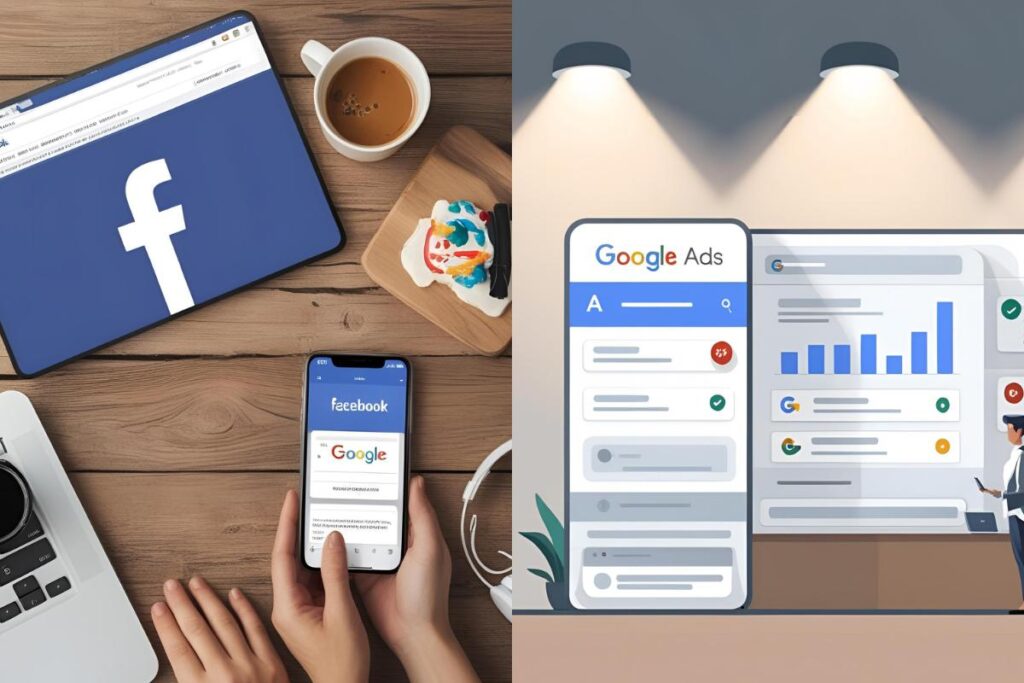
Is 2025 the End of Facebook and Google Ads? Digital marketers and advertisers are facing a wave of change in 2025. With privacy restrictions tightening, consumer behavior shifting, and AI transforming user targeting, many wonder: Are Facebook Ads and Google Ads dead in 2025? The short answer: Absolutely not. But they’ve evolved — drastically. In this detailed guide, we break down what’s changed, what’s still working, and how smart marketers can still leverage Facebook and Google Ads in 2025 for explosive growth. Understanding the Current State of Facebook Ads in 2025 Privacy-First Era & Apple’s iOS Restrictions Since the rollout of Apple’s iOS 14.5, Facebook’s ad platform has been navigating a privacy-first digital world. By 2025, Meta (Facebook’s parent company) has revamped targeting algorithms with AI-based prediction models that compensate for data loss. Ad Formats That Still Work in 2025 Facebook Ads in 2025 are not dead — they’re just different. The following formats dominate ROI today: Performance Trends Conclusion: Facebook Ads are not dead, but if you’re still running the same campaigns from 2022, you’re wasting budget. Google Ads in 2025: Still King of Intent-Based Marketing Search is Evolving, But Intent Remains King In 2025, Google Ads continues to dominate the intent-driven traffic landscape. While SERP layouts have changed (more AI snippets, fewer organic links), users still click sponsored results when looking for solutions. Smart Bidding and Automation Takeover Google has phased out manual bidding in favor of automated strategies, including: These AI-driven systems analyze hundreds of data points in real time — making Google Ads more effective, if configured correctly. YouTube and Display Ads Are Thriving Visual content continues its surge, with YouTube Ads seeing: Display Ads with remarketing audiences also convert at over 70% higher ROI than cold traffic. Conclusion: Google Ads are evolving with automation, not dying. Those who embrace data and AI-driven setups will thrive. Why Marketers Think Ads Are “Dead” in 2025 Let’s clarify something: Ads haven’t died — lazy strategies have. Here’s why many advertisers are failing: In 2025, successful campaigns are built on: Facebook Ads vs. Google Ads in 2025: What’s Better? Feature Facebook Ads Google Ads User Intent Disruption/Discovery High Intent/Search-Driven Ad Formats Reels, Stories, Carousels Text, Display, YouTube, PMax Conversion Funnel Role Top & Mid Funnel Mid & Bottom Funnel Best For Brand Awareness, Engagement Sales, Leads, Direct Conversions Learning Curve Medium High Performance Great for B2C and Retargeting Great for B2B, eCom, Local Ads Verdict: Use Facebook Ads for visibility and brand building; Google Ads for high-converting leads and sales. How to Win With Ads in 2025: Pro Strategies 1. Use AI-Powered Campaigns Smartly Both platforms now prioritize AI learning models. Feed them good data: 2. Invest in Video & UGC Content Video is the dominant medium in 2025. Winning ads use: 3. Funnel-Centric Ad Planning Build campaigns around buyer journey stages: 4. First-Party Data is Your New Superpower With cookie deprecation in full effect: 5. Combine Platforms for Best Results No one platform wins alone in 2025. The best strategies combine: Conclusion: Are Facebook and Google Ads Dead? Absolutely Not. In 2025, Facebook Ads and Google Ads are still the two most powerful digital advertising tools, but only when used strategically and adapted to the current landscape. If you’re still wondering “Are Google Ads Dead?” or “Is Facebook Ads still worth it?” — the answer lies in your execution, not the platform.Smart marketers in 2025 use automation, first-party data, video creatives, and full-funnel strategies to dominate ad performance.
The Rise of Nano and Micro-Influencers: A Game-Changer in Digital Marketing
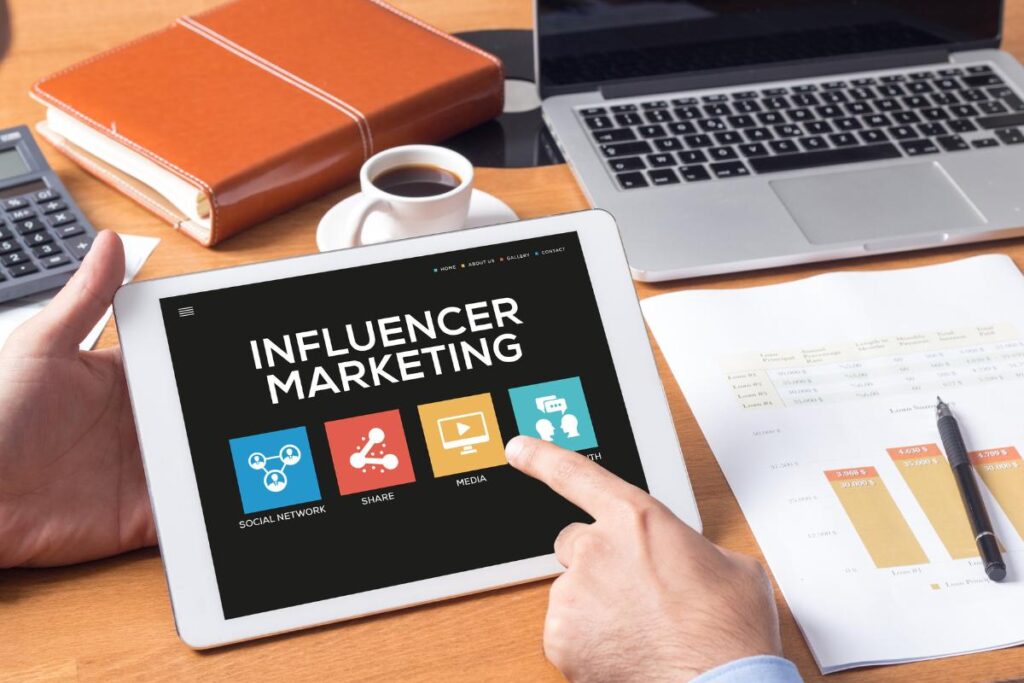
Why Nano and Micro-Influencers Are Transforming the Industry The world of influencer marketing is evolving rapidly. While mega-influencers and celebrities once dominated the space, brands are now shifting their focus to nano and micro-influencers—individuals with smaller but highly engaged audiences. This shift is driven by their authenticity, credibility, and higher engagement rates, which ultimately lead to better marketing results. Who Are Nano and Micro-Influencers? Before diving into the benefits of working with these influencers, let’s define them: Despite their smaller follower count, these influencers have strong connections with their audience, fostering trust and credibility that larger influencers often lack. Why Brands Prefer Nano and Micro-Influencers 1. Higher Engagement Rates Nano and micro-influencers enjoy significantly higher engagement rates compared to macro-influencers and celebrities. According to studies, nano-influencers can achieve an engagement rate of up to 8%, while larger influencers struggle to maintain even 2%. 2. Increased Authenticity and Trust Unlike celebrity endorsements that often feel forced, nano and micro-influencers provide genuine recommendations. Their followers trust them more because they engage in authentic, relatable conversations. 3. Cost-Effective Marketing Strategy Hiring a celebrity or macro-influencer can cost thousands of dollars per post. In contrast, working with nano and micro-influencers is much more affordable, allowing brands to maximize their ROI by collaborating with multiple influencers within the same budget. 4. Niche-Specific Targeting Nano and micro-influencers often specialize in niche markets, making them ideal for brands that want to reach a highly targeted audience. Whether it’s beauty, fitness, travel, or tech, these influencers speak directly to engaged consumers who are interested in their niche. 5. Better Conversion Rates Since their audience sees them as peers rather than celebrities, their recommendations feel more like word-of-mouth referrals. As a result, their followers are more likely to trust their opinions and take action—leading to higher conversion rates. How Brands Can Collaborate with Nano and Micro-Influencers 1. Product Gifting One of the most effective ways to work with nano and micro-influencers is through product gifting. Brands send their products in exchange for honest reviews, which can generate organic buzz and brand awareness. 2. Affiliate Marketing Programs Brands can create affiliate programs where influencers earn a commission for every sale they drive. This method not only incentivizes influencers but also ensures a measurable return on investment. 3. Sponsored Content Many brands pay influencers to create sponsored posts, videos, or stories promoting their products. These collaborations must maintain authenticity to ensure that the content feels natural and engaging. 4. Brand Ambassador Programs Establishing long-term partnerships with influencers can be more beneficial than one-off campaigns. By making influencers brand ambassadors, businesses can build stronger relationships and maintain consistent brand representation. 5. Social Media Takeovers Brands can allow influencers to take over their social media accounts for a day, offering a fresh perspective and attracting new audiences. Case Studies: Success Stories with Nano and Micro-Influencers Glossier: A Nano-Influencer Success Story The beauty brand Glossier became a powerhouse in the industry by leveraging nano and micro-influencers. Instead of spending money on celebrity endorsements, Glossier focused on everyday consumers who genuinely loved their products. The result? A cult-like following and exponential brand growth. Daniel Wellington: A Micro-Influencer Masterclass Watch brand Daniel Wellington built its empire by collaborating with micro-influencers worldwide. Their strategy of gifting watches in exchange for social media posts helped them achieve massive brand visibility and millions in revenue. The Future of Nano and Micro-Influencers in Digital Marketing As consumer trust in traditional advertising declines, the demand for authentic marketing strategies will continue to rise. Nano and micro-influencers will play a pivotal role in shaping the future of digital marketing by offering brands a cost-effective, high-engagement alternative to traditional influencer partnerships. Final Thoughts Nano and micro-influencers are no longer just an emerging trend—they are the future of influencer marketing. Their ability to foster genuine relationships, drive high engagement, and create cost-effective marketing solutions makes them an invaluable asset for brands looking to expand their digital presence. By integrating nano and micro-influencer collaborations into your marketing strategy, you can build trust, engagement, and conversions—leading to long-term business success.
Google Discover & Google Perspectives for Organic Growth

Introduction to Google Discover and Google Perspectives Google has dramatically evolved from a search engine to an intelligent discovery platform. Google Discover and Google Perspectives are two pivotal features transforming how users interact with content. While Google Discover curates content based on user interests and behavior, Google Perspectives offers a human-centric layer by showcasing personal insights from influencers, experts, and creators. To succeed in this dynamic landscape, brands and publishers must align their SEO and content strategies with how Google interprets relevance, expertise, and user engagement. Understanding Google Discover: Personalized Search Redefined Google Discover delivers personalized content recommendations directly on mobile devices, even before a query is entered. It relies heavily on machine learning and user signals, including: To be featured in Google Discover, your content needs to be engaging, visually appealing, and contextually relevant to the user’s interests. Core Ranking Factors for Google Discover Decoding Google Perspectives: Human-Centric SEO Google Perspectives is designed to highlight diverse human viewpoints on search topics, especially trending and controversial ones. It pulls content from: The goal is to prioritize lived experiences, expert commentary, and authentic conversations over generic blog content. How to Get Featured in Google Perspectives Actionable Strategies to Dominate Both Google Discover & Perspectives 1. Create Visually-Driven, Emotionally Engaging Stories Visual storytelling is key. Incorporate: Google Discover and Perspectives both prefer rich media experiences that keep users engaged. 2. Publish Topical and Trending Content with Authority Use Google Trends, Exploding Topics, and Twitter trending tabs to spot rising queries. Act quickly to create insightful, authoritative takes on these subjects, referencing data, anecdotes, or expert analysis. 3. Establish a Recognizable Author Profile Ensure every piece is associated with a verified author linked to a Google Knowledge Panel, LinkedIn, or YouTube channel. Add an author bio that reflects E-E-A-T principles, and link to other authored works. 4. Update Evergreen Content for Freshness Regularly update your best-performing content with: This keeps your articles relevant for Discover and enhances chances of resurfacing in feeds. 5. Use Web Stories for Maximum Discover Visibility Google Web Stories are mobile-first, visually engaging slides that perform exceptionally well on Discover. Use them to: They combine the power of snackable content with visual appeal—a potent mix for ranking. Technical SEO Best Practices for Discover & Perspectives Measuring Success: Analytics & KPIs To track performance on Discover and Perspectives: Conclusion: Future-Proofing Your SEO with Discover & Perspectives Success in Google Discover and Perspectives demands a shift from keyword-stuffing to user experience storytelling. By crafting authentic, high-quality content enriched with visuals and personal insights, brands can earn sustained visibility and traffic. Both features represent the future of search—a blend of AI-driven personalization and human-centered relevance. Mastering them means unlocking exponential organic growth across multiple platforms and search environments.
The Rise of AI Agents: What IT Professionals Need to Know

Artificial Intelligence (AI) is no longer a futuristic concept—The Rise of AI agents has already permeated IT infrastructures across industries. From automating routine tasks to making intelligent decisions, these agents are transforming the roles and responsibilities of IT professionals. In this article, we explore the technological foundations, business applications, strategic implications, and challenges of AI agents to provide a comprehensive roadmap for IT professionals navigating this evolving digital landscape. What Are AI Agents? A Modern Definition AI agents are intelligent systems capable of perceiving their environment, processing information, and taking actions to achieve specific goals. These systems operate autonomously or semi-autonomously using machine learning, natural language processing (NLP), and other AI methodologies. Examples include: AI agents can either be reactive (respond to stimuli) or proactive (anticipate needs and act in advance), and the most advanced systems combine both traits. The Impact of The Rise of AI Agents on IT Infrastructure AI agents are reshaping IT ecosystems in several key ways: 1. Automation of Routine IT Tasks With AI agents, manual and repetitive tasks such as ticket triaging, performance monitoring, and log analysis can be fully automated. This frees up IT staff to focus on strategic initiatives. 2. Real-Time Decision Making Modern AI agents can process massive datasets in real-time, enabling instant decisions for performance optimization, anomaly detection, and user support. 3. Proactive Problem Resolution AI agents use predictive analytics to foresee potential system failures or security breaches and resolve issues before they escalate. 4. Enhanced Cybersecurity AI-based systems can identify zero-day threats, phishing patterns, and unauthorized access with far greater precision than traditional tools. Core Technologies Powering AI Agents To understand the operational capabilities of AI agents, IT professionals must grasp the core technologies behind them: Machine Learning (ML) ML models allow agents to learn from past data and improve over time without explicit programming. Supervised, unsupervised, and reinforcement learning models are commonly used. Natural Language Processing (NLP) This enables agents to understand, interpret, and generate human language, facilitating seamless communication between systems and humans. Computer Vision For agents involved in image or video analysis (e.g., surveillance, quality checks), computer vision helps them interpret visual information accurately. Robotic Process Automation (RPA) While not “intelligent” by itself, RPA integrated with AI enables agents to execute rule-based tasks with cognitive capabilities. Business Benefits of AI Agents for IT Operations Adopting AI agents provides significant advantages: Challenges IT Professionals Must Address Despite their advantages, AI agents pose several challenges: 1. Data Privacy and Compliance AI agents often require access to sensitive data. IT teams must ensure compliance with GDPR, HIPAA, and other regulations. 2. Integration with Legacy Systems Many AI tools are cloud-native, while enterprises may still use legacy systems that require extensive customization for integration. 3. Skills Gap There is a growing need for IT professionals trained in AI, ML, and data engineering. Upskilling and cross-functional training are essential. 4. Ethical Considerations Bias in training data can lead to unintended or discriminatory outcomes. IT leaders must ensure ethical AI development and deployment. AI Agents in DevOps and IT Service Management (ITSM) AI agents are increasingly embedded in: DevOps Pipelines ITSM Platforms By enhancing these domains, AI agents reduce Mean Time to Resolution (MTTR) and increase end-user satisfaction. The Future of AI Agents: 2025 and Beyond The evolution of AI agents is accelerating, driven by breakthroughs in generative AI, multi-agent systems, and edge AI. Multi-Agent Collaboration Future systems will feature collaborative AI agents working in tandem, communicating with each other to solve complex problems across departments. Edge AI Integration AI agents will increasingly operate on the edge, bringing intelligence closer to the data source for faster processing and lower latency. AI Agents with Emotional Intelligence The next frontier includes agents capable of detecting and responding to human emotions, revolutionizing IT helpdesks and support systems. Strategic Recommendations for IT Leaders To stay competitive and future-ready, IT professionals should: Conclusion AI agents are not just tools—they’re strategic enablers for the next generation of digital transformation. For IT professionals, understanding, adopting, and optimizing these agents is no longer optional—it’s imperative. As AI continues to evolve, the success of IT operations will hinge on how effectively these intelligent agents are integrated and managed.
LinkedIn Corporation: A Deep Dive into the World’s Premier Professional Network

Introduction to LinkedIn Corporation LinkedIn Corporation, a subsidiary of Microsoft since 2016, is the world’s largest professional networking platform. With over 1 billion users in more than 200 countries, LinkedIn has become an indispensable tool for job seekers, recruiters, professionals, marketers, and businesses. Unlike other social platforms, LinkedIn’s focus is strictly professional—making it the leading space for career development, B2B marketing, lead generation, and industry thought leadership. History and Growth of LinkedIn Founded in 2002 by Reid Hoffman and officially launched in May 2003, LinkedIn started as a digital resume repository and connection tool. Over the years, it has evolved into a robust ecosystem of content, hiring solutions, learning, and business intelligence. In 2016, Microsoft acquired LinkedIn for $26.2 billion, a move that significantly accelerated the platform’s growth, functionality, and integration with tools like Microsoft Teams, Office 365, and Dynamics 365. LinkedIn Corporation in 2025: What’s Trending Now LinkedIn is currently trending on Google Trends due to several recent developments: These innovations are driving LinkedIn to not only be a professional networking site but also a content publishing platform, e-learning hub, and B2B advertising giant. Core Features of LinkedIn Corporation in 2025 1. LinkedIn Profiles: Your Digital Resume LinkedIn profiles now function as dynamic portfolios, allowing users to showcase: 2. LinkedIn Pages for Companies LinkedIn Company Pages offer extensive features for businesses, such as: 3. LinkedIn Learning With over 20,000 courses, LinkedIn Learning is the backbone of professional upskilling. The platform provides certifications in: LinkedIn’s Algorithm: How It Works in 2025 The LinkedIn algorithm has become more intelligent, focusing on engagement quality over quantity. Here’s what it prioritizes now: To win on LinkedIn, personalized storytelling and niche authority are the keys. LinkedIn Creator Mode: A Game-Changer Creator Mode has unlocked huge opportunities in 2025. Influencers, business coaches, HR leaders, and CEOs are now using: LinkedIn has also launched Creator Analytics, helping users track: Monetization on LinkedIn In 2025, LinkedIn creators can earn via: LinkedIn has introduced a Monetization Tab for verified creators, further streamlining revenue tracking. LinkedIn for B2B Marketing With over 65 million decision-makers on the platform, LinkedIn has become the go-to for B2B advertising. Top B2B marketing tools in 2025 include: Brands are leveraging video case studies, native carousels, and employee branding to build credibility. The Role of AI and Automation on LinkedIn LinkedIn is now deeply embedded with AI capabilities: Recruiters can now filter applications using AI scoring, and job seekers benefit from smart tips for profile optimization. Privacy and Security on LinkedIn In response to rising concerns about data privacy, LinkedIn has: These updates have helped LinkedIn retain trust while expanding its feature set. LinkedIn’s Future: What Lies Ahead We foresee several impactful developments by 2026: LinkedIn is no longer just a resume board—it is evolving into a career development and monetization engine. Conclusion LinkedIn Corporation stands as a monolith in the professional digital space, influencing everything from how we network to how we learn, market, and grow. With continual innovation in AI, creator tools, and business services, it remains the single most effective platform for professionals looking to expand their digital footprint.
Google Business Profiles Information Edit Rejection Notice nowadays – Full Guide to Fix It Fast
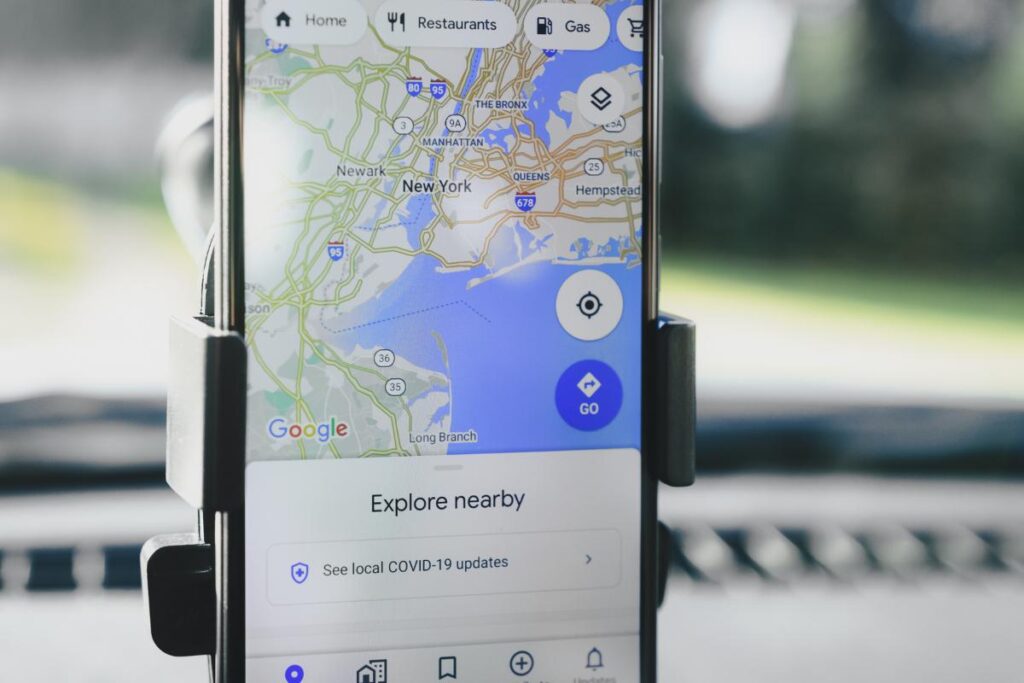
Google Business Profiles (formerly Google My Business) are critical for any local business trying to rank in Google Search and Maps. However, getting edits approved—whether it’s a change in name, address, category, or hours—has become increasingly difficult. Many businesses today receive Google Business Profile information edit rejection notices, often without clear reasons. In this guide, we unpack why your edits get rejected, how to prevent rejections, and the exact steps to fix them quickly. Why Google Business Profiles Edits Are Getting Rejected More Often In 2025, Google’s AI-driven content moderation system has become stricter than ever. Here are the top reasons why your edits are being rejected: 1. Mismatch with Verified Data Sources Google cross-verifies edits with third-party data sources such as: If your edit conflicts with these data sources, Google may reject it instantly. 2. Suspicious Activity or Bulk Changes If multiple edits are made in a short time or from unfamiliar devices/locations, Google flags the activity as suspicious behavior and may block or reverse edits. 3. Lack of Supporting Evidence Edits without accompanying images, official documents, or links to a business website are likely to get rejected. 4. Spammy or Keyword-Stuffed Business Names Adding unnecessary keywords in the business name (like “Best Dentist in New York”) can trigger an automatic rejection. Types of Google Business Profile Edits That Commonly Get Rejected Understanding which fields are most vulnerable to rejection can help you approach edits strategically. Business Name Google prefers the actual legal or signage name. Adding promotional phrases, city names, or categories often leads to rejection. Address Moving locations without updating your business website or including proof like storefront photos will trigger rejections. Phone Number Virtual phone numbers or numbers inconsistent with other directories may not pass Google’s verification. Category Changing business categories to more competitive or unrelated ones is scrutinized. Make sure your chosen category accurately reflects your core service. Operating Hours Drastic changes (e.g., 24/7 to 9-5) need justification, especially if you’re a healthcare or service-based business. How to Successfully Make Edits Without Getting Rejected 1. Update Your Website First Before making any edit on your Google Business Profile, ensure the change is reflected on your official website—especially the contact page and footer. 2. Use Consistent NAP (Name, Address, Phone) Across the Web Check and update your business listing across platforms like: Any inconsistency will flag your edit as suspicious. 3. Add Visual Proof Include images of: Attach them via the “Photos” or “Suggest an Edit” feature. 4. Use the “Suggest an Edit” Tool Strategically If your edits get rejected, you can use the Suggest an Edit feature as a logged-in Google user. Getting multiple local guides to confirm the same suggestion boosts approval chances. What to Do If Your Google Business Profile Edit Was Rejected 1. Appeal Through Support Go to Google Business Profile Help and contact support via: Explain your issue clearly and attach proof. 2. Post in the Google Business Profile Community The Google Business Profile Help Forum is moderated by product experts. Create a detailed post with screenshots and someone may escalate your case to Google staff. 3. Submit the “Business Redressal Complaint Form” If you believe your listing is being maliciously edited or blocked, you can report it through the official Business Redressal Form. 4. Monitor and Retry Strategically Wait at least 72 hours before attempting the edit again. Multiple rapid attempts can result in temporary profile suspension. Pro Tips to Ensure Google Business Edits Get Approved in 2025 Tip 1: Use Local Guide Accounts If you or someone in your team is a Level 5+ Local Guide, edits from their account are more trusted by Google’s system. Tip 2: Enable 2-Step Verification on Your Account This builds credibility and protects your profile from hijacking or unapproved edits. Tip 3: Keep Audit Logs of All Changes Document each edit attempt with a screenshot, reason, date, and method used. This helps if you escalate to support. Tip 4: Avoid Over-Editing Too many changes at once can flag your account. Space out edits and monitor each for approval before proceeding to the next. When to Seek Professional Help If you’ve repeatedly tried and failed, it’s time to consult a Google Business Profile expert or a digital marketing agency experienced in local SEO optimization. They can: Remember: A verified and updated profile directly affects your local pack ranking, click-through rate, and customer trust. Conclusion: Be Patient, Precise, and Proactive In 2025, managing a Google Business Profile requires more strategic finesse than ever. Every field you edit must be backed with solid proof, match online records, and align with Google’s strict quality guidelines. With the steps outlined above, you’ll not only fix edit rejections but also maintain a trusted and high-ranking profile that attracts more local customers.
DevOps Trends in 2025: Automation, GitOps & Platform Engineering

Introduction to DevOps Trends in 2025: A New Era of Innovation As we move deeper into the digital era, DevOps Trends in 2025 is evolving faster than ever before. What began as a cultural and operational shift toward agile software development has now matured into a robust ecosystem driven by intelligent automation, GitOps, and platform engineering. Enterprises are no longer just looking for faster release cycles — they are demanding resilient systems, scalable architectures, and streamlined developer experiences. The future of DevOps is not just about tools or practices. It’s about building a developer-first, automation-driven, and cloud-native ecosystem that supports the rapid pace of digital transformation. 1. The Rise of Intelligent Automation in DevOps Automation has always been at the heart of DevOps, but in 2025, we are witnessing a paradigm shift from basic scripting and CI/CD pipelines to intelligent, AI-powered automation. This shift is reducing human intervention, enhancing efficiency, scalability, and reliability across the software delivery lifecycle. 2. GitOps: Declarative Infrastructure at Scale GitOps has emerged as a core DevOps practice in 2025, bringing version-controlled, declarative infrastructure and application deployments to the forefront. As organizations move towards immutable infrastructure and policy-as-code, GitOps is not just a trend but a necessity for managing complex deployments. 3. Platform Engineering: Enabling Developer Productivity at Scale 2025 marks the emergence of platform engineering as the next frontier in DevOps evolution. While DevOps empowered developers, platform engineering gives them the right tools, environment, and infrastructure without compromising governance. Platform engineering is solving the balance between autonomy and standardization, transforming how teams build, test, and deploy software. 4. Security-as-Code and DevSecOps Integration Security is no longer an afterthought. In 2025, DevSecOps is fully integrated into the DevOps pipeline, emphasizing “security as code” practices. This integration ensures security is a shared responsibility embedded at every layer of the development lifecycle. 5. DevOps Observability: From Monitoring to Intelligence In 2025, observability has moved beyond logs, metrics, and traces to a new era of contextual intelligence and proactive incident management. This evolution from basic monitoring to intelligent observability is empowering teams to move faster with confidence. 6. Cloud-Native DevOps & Edge Computing The dominance of cloud-native technologies and the proliferation of edge computing are reshaping how DevOps is practiced. This shift is fueling hyper-scalability and global performance while maintaining operational control. 7. Developer Experience (DevEx) as a Strategic Priority In 2025, Developer Experience (DevEx) is central to successful DevOps adoption. Companies are investing in frictionless workflows, smarter tools, and intuitive environments to retain and empower engineering talent. Happy developers build better products, making DevEx a vital component of DevOps strategy. Conclusion: DevOps Trends in 2025 is Intelligent, Scalable, and Developer-Centric The DevOps landscape in 2025 is defined by automation-first culture, GitOps principles, platform engineering excellence, and robust security integration. As organizations adopt these practices, they are not just accelerating their software delivery—they are building resilient systems that can adapt to change, scale effortlessly, and deliver exceptional value to customers. To thrive in this new era, businesses must focus on empowering developers, integrating AI-driven automation, adopting cloud-native strategies, and redefining their delivery pipelines with observability, security, and intelligence at their core.
Instagram Launches Video Editing App: Everything You Need to Know
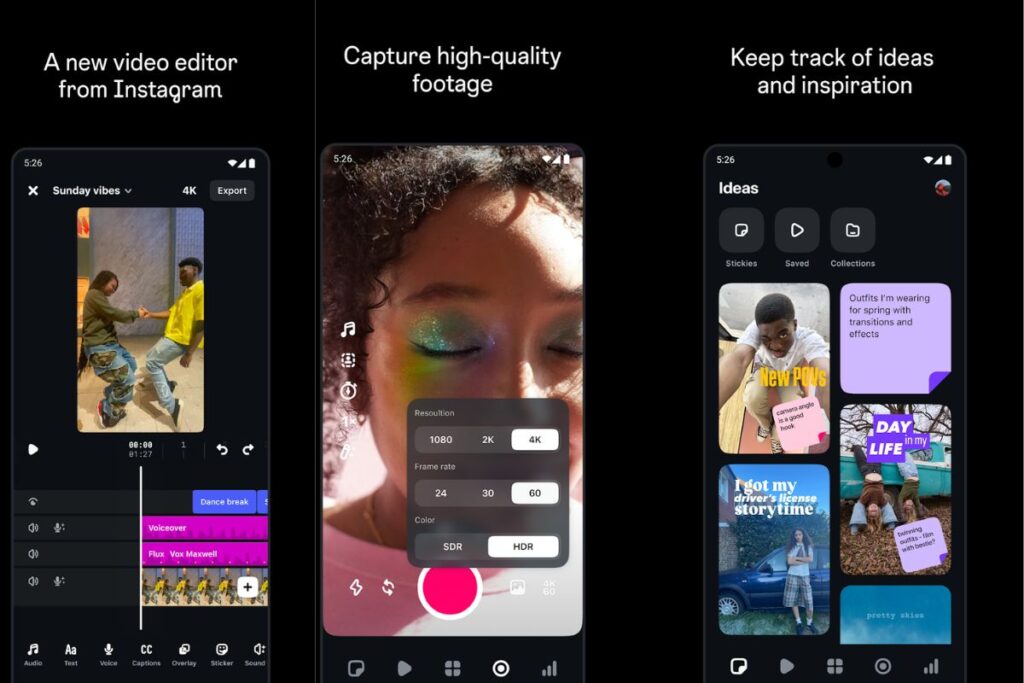
Instagram’s Bold Move: A Standalone Video Editing App to Empower Creators Instagram has taken a massive leap in the creator economy by officially launching its own video editing app. Designed to rival existing powerhouses like CapCut, InShot, and even TikTok’s native editor, this new app offers a suite of powerful, user-friendly tools aimed squarely at content creators, influencers, and marketers. Meta, Instagram’s parent company, is clearly determined to make Instagram the go-to platform not just for sharing content, but for creating viral, polished videos right from your mobile device. What Is Instagram’s New Video Editing App? Instagram’s new video editing tool—Clips (name not yet officially confirmed)—is a standalone mobile application specifically engineered for short-form and long-form video content editing. Integrated seamlessly with Instagram Reels and Stories, it empowers users to craft professional-grade videos with zero experience in advanced editing software. Key Highlights: Features That Set It Apart from Other Video Editing Apps 1. Seamless Instagram Integration The most significant advantage of Instagram’s app is how tightly it integrates with the platform itself. Unlike third-party editors, where you have to export and re-upload videos, this app allows direct publishing to Reels or Stories, preserving video quality and eliminating friction. 2. Advanced AI-Powered Editing Tools Instagram’s editor brings AI at the core of its functionality. It can automatically: This is a major win for creators who want high-quality output without spending hours on editing. 3. Templates Inspired by Top Creators Just like CapCut’s trending templates, Instagram’s app offers pre-loaded video templates modeled after viral Reels. With just a few taps, users can plug in their clips and generate eye-catching edits that mimic content from top influencers. 4. Built-In AR and Visual Effects Leveraging Meta’s AR capabilities, the app introduces next-level augmented reality filters and transitions. These effects go far beyond what’s currently available in the native Instagram app, enabling immersive and professional-grade visuals. 5. Multitrack Timeline for Audio and Video One of the most advanced features is a multitrack editing timeline that lets users layer audio, add voiceovers, insert music, and trim clips—similar to professional software like Adobe Premiere Rush or Final Cut Pro, but optimized for mobile. Why This Move Matters for Content Creators and Brands Instagram is already a dominant force in the social media ecosystem, but with the launch of this editing app, it’s now positioning itself as a one-stop platform for both content creation and distribution. Here’s how it changes the game: For brands and influencers, this is a golden opportunity to scale video production without hiring editors or using third-party apps. Comparison with CapCut and TikTok Editing Tools Feature Instagram App CapCut TikTok Editor AI Auto Captions ✅ Yes ✅ Yes ✅ Yes Integration with Instagram ✅ Seamless ❌ Manual Export ❌ Manual Upload Visual Effects and AR ✅ Advanced ✅ Good ✅ Moderate Multitrack Timeline ✅ Yes ✅ Yes ❌ Limited Templates from Influencers ✅ Curated by IG ✅ Trending Based ✅ Limited Templates Direct Monetization Support ✅ Upcoming ❌ Not Native ✅ Native via TikTok Instagram clearly has the edge in platform-native publishing and AR support, which will appeal especially to influencers and small business marketers. Implications for Social Media Marketers and Agencies Marketing professionals should take serious note of this launch. With Instagram’s new app: This tool also streamlines agency workflows, allowing for faster turnaround times and more dynamic video ads that maintain platform quality standards. Tips for Making the Most of Instagram’s Video Editing App Availability and Rollout As of now, the app is in gradual rollout, starting with selected countries including the United States, UK, India, and Australia. Users can download it via the Apple App Store and Google Play Store, and it’s expected to be available worldwide within the next quarter. Early access is currently being offered to Instagram Verified users and select content partners, but a global public release is imminent. Final Thoughts: Is This the Future of Mobile Video Editing? The release of this app by Instagram marks a new era for content creation on mobile. By offering pro-level tools in a user-friendly interface, Instagram is ensuring that creators—regardless of skill level—can produce content that is not just watchable, but unforgettable.Whether you’re a solo creator, a small business, or an agency, embracing this tool could give you a distinct competitive advantage. It’s time to rethink your video content strategy with this new asset in your toolkit.
How We Increased Website Traffic by 300% Using Only SEO

Introduction: A 300% Traffic Growth Through SEO Alone When we first embarked on our SEO journey, we had one goal in mind: to increase organic traffic without spending a dime on paid advertising. Within six months, we successfully grew our website traffic by 300% using only SEO tactics. In this article, we will unveil the exact strategies, techniques, and tools that made this growth possible, empowering you to replicate our success. Comprehensive Keyword Research: The Foundation of SEO Growth Our first and most critical step was conducting in-depth keyword research. We didn’t just look for high-volume keywords—we focused on low competition, long-tail keywords that aligned with user intent. By leveraging tools like Ahrefs, SEMrush, and Google Keyword Planner, we uncovered: We grouped keywords into topic clusters, allowing us to target broad themes while ranking for multiple related terms. This approach amplified our visibility across search queries. Creating High-Quality, Long-Form Content That Ranks Once we identified target keywords, we focused on crafting long-form, valuable content optimized for both users and search engines. Each piece of content was: We ensured each article provided complete answers to user queries, reducing bounce rates and increasing time on page—both key ranking factors. Additionally, we embedded relevant internal links to strengthen topical authority and guided visitors to other valuable content across our site. On-Page SEO Optimization: Every Detail Matters We meticulously optimized every on-page element to improve crawlability and relevance: These technical improvements contributed significantly to our improved search visibility and higher CTRs. Building High-Quality Backlinks for Authority We focused on acquiring authoritative backlinks through white-hat link-building strategies. Our approach included: Each backlink was strategically earned from high Domain Authority (DA) websites, boosting our own site’s credibility and rankings. Improving Technical SEO for Better Indexing and Speed Technical SEO was another pillar of our success. We conducted a thorough audit to resolve: We implemented lazy loading, browser caching, and CDN integration to achieve page load speeds under 2 seconds, meeting Google’s Core Web Vitals requirements. Our site structure was simplified, ensuring a logical hierarchy and shallow click depth, making it easier for search engines to index all pages efficiently. Optimizing for Mobile and User Experience Recognizing the dominance of mobile traffic, we prioritized mobile-first design. Our website was: This not only improved user experience but also positively impacted our mobile search rankings, leading to a significant portion of our traffic surge. Leveraging Content Refreshes and Updates We didn’t stop after publishing content. Every quarter, we performed a content audit to identify: By updating and enhancing old posts, we reclaimed rankings, attracted new traffic, and signaled freshness to search engines. Measuring, Analyzing, and Iterating SEO Efforts We tracked every SEO effort through Google Analytics, Google Search Console, and third-party SEO tools. Key metrics we monitored included: Armed with this data, we continuously iterated and refined our SEO strategy, doubling down on what worked and eliminating what didn’t. Conclusion: Sustainable, Scalable SEO-Driven Growth Through a combination of strategic keyword research, high-quality content creation, meticulous on-page and technical SEO, and authoritative link-building, we achieved 300% growth in organic traffic—without spending on paid ads. This growth wasn’t a fluke; it was the result of consistent, data-driven efforts aligned with Google’s best practices. You can achieve the same results by following these proven SEO strategies and committing to ongoing optimization.
Heatmaps & Scroll Maps: What They Tell You About Users

Introduction to Heatmaps and Scroll Maps Understanding user behavior is critical to optimizing any website for better engagement and conversions. Heatmaps and scroll maps are two powerful tools that visually represent user interactions, allowing us to see exactly where visitors click, hover, and how far they scroll. By leveraging these insights, we can make informed design and content decisions that directly impact user experience and business outcomes. What Are Heatmaps? A heatmap is a visual representation of data that uses colors to indicate levels of activity. On a website, heatmaps show us where users click, tap, and hover. The warmer the color (like red or orange), the higher the engagement in that area. Cooler colors (like blue or green) indicate less activity. Types of Heatmaps There are several types of heatmaps, each providing unique insights: By analyzing these heatmaps, we can identify which elements are driving engagement and which areas might need improvement. What Are Scroll Maps? Scroll maps measure how far users scroll down a page. They visually represent the drop-off points, helping us pinpoint where users lose interest and leave the page. Like heatmaps, scroll maps use a gradient of colors to show which parts of the page are most and least viewed. Why Scroll Maps Matter If key information or calls-to-action (CTAs) are placed below the average scroll depth, users may never see them. Scroll maps allow us to: Understanding scroll behavior ensures that critical elements are seen by the majority of visitors. How Heatmaps and Scroll Maps Complement Each Other While heatmaps show us where users interact, scroll maps show us how far users go. Together, they paint a complete picture of user behavior: By combining insights from both tools, we can optimize placement, prioritize content, and refine design layouts. Benefits of Using Heatmaps and Scroll Maps 1. Data-Driven Design Decisions Instead of relying on assumptions, heatmaps and scroll maps provide quantitative visual evidence. We can rearrange layouts, adjust CTAs, or refine navigation based on actual user behavior. 2. Identifying User Frustration If a heatmap shows users clicking on a non-clickable element, it signals unmet expectations. Likewise, if users stop scrolling abruptly, it might indicate poor content relevance or a design barrier. 3. Boosting Conversions By placing important elements where users are most likely to see and interact with them, we can increase conversions. Whether it’s moving a form higher up or emphasizing a CTA button, small changes guided by heatmap and scroll map data can have a big impact. 4. Validating A/B Testing Results Heatmaps and scroll maps can serve as visual validation tools for A/B tests. We can see not just which variant performed better, but why it performed better by analyzing interaction patterns. How to Implement Heatmaps and Scroll Maps Several tools are available for tracking heatmaps and scroll maps, such as Hotjar, Crazy Egg, and Microsoft Clarity. These tools are easy to set up: We recommend tracking high-traffic and conversion-focused pages first, like landing pages, pricing pages, and checkout flows. Best Practices for Interpreting Heatmaps and Scroll Maps Common Mistakes to Avoid Using Heatmaps and Scroll Maps to Improve SEO Though heatmaps and scroll maps are often viewed as UX tools, they have a direct impact on SEO: A well-optimized page that retains visitors longer and guides them to further actions signals relevance and authority to search engines. Conclusion: Transforming Insights Into Action By integrating heatmaps and scroll maps into our analytics workflow, we gain unmatched visibility into user interactions. These tools allow us to step into the user’s shoes, see what they see, and refine every pixel for better engagement, conversions, and SEO performance. When combined with other analytical data, they empower us to create websites that are not only visually appealing but intuitively functional and conversion-optimized.
Retargeting Ads: How to Bring Visitors Back to Your Website
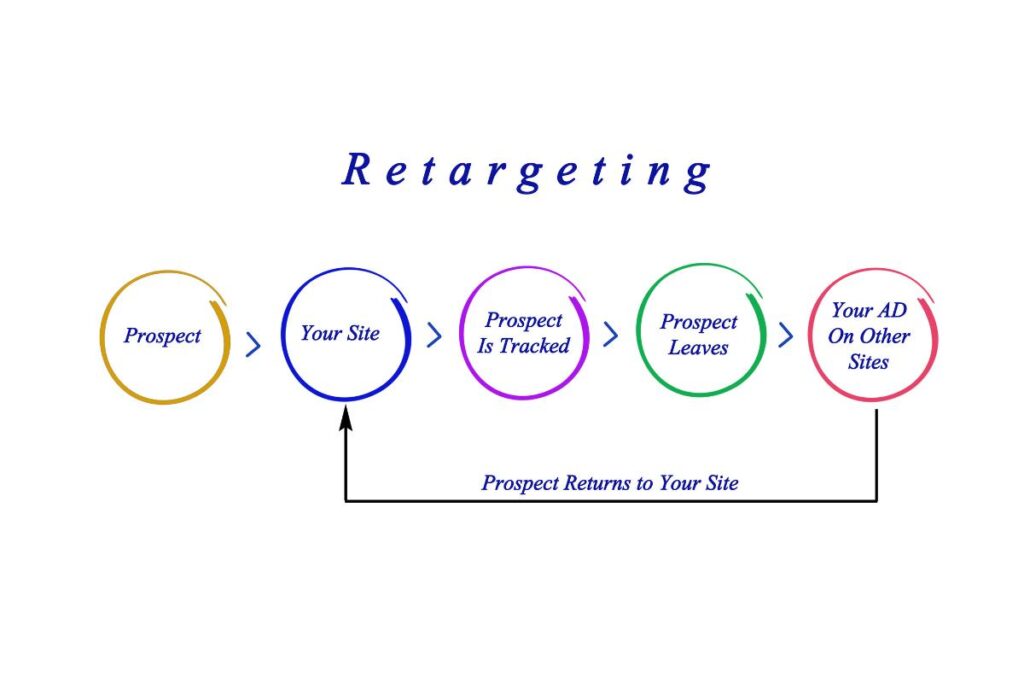
In today’s competitive digital landscape, retargeting ads have emerged as a powerful strategy to re-engage lost visitors and convert them into loyal customers. If your website receives high traffic but struggles with low conversion rates, implementing an effective retargeting strategy can bridge the gap and drive measurable results. What Are Retargeting Ads? Retargeting ads are online advertisements displayed to users who have previously visited your website but left without completing a desired action, such as making a purchase or filling out a form. By placing a tracking pixel or cookie on your site, you can follow these users around the internet and show them tailored ads designed to bring them back. This form of advertising keeps your brand top-of-mind and encourages return visits, ultimately increasing the likelihood of conversion. Why Retargeting Is Essential for Your Business Statistics show that only 2% of visitors convert on their first visit to a website. Retargeting allows businesses to reach the remaining 98% who showed interest but left without engaging. Here’s why retargeting should be a key part of your marketing arsenal: Types of Retargeting Ads To launch an effective campaign, it’s important to understand the various types of retargeting ads available: 1. Pixel-Based Retargeting This is the most common type, using a JavaScript code (pixel) placed on your website to anonymously track visitors. Once they leave your site, the pixel triggers your ads to appear as they browse other websites. 2. List-Based Retargeting This method uses contact information you already have, such as email addresses, to create a custom audience. Platforms like Facebook and Google allow you to upload these lists and show ads directly to those users. 3. Dynamic Retargeting Dynamic retargeting takes personalization a step further by showing ads based on the exact products or pages the user viewed on your site. This is highly effective for e-commerce brands looking to recover abandoned carts. 4. Search Retargeting Unlike other forms, search retargeting targets users based on keywords they’ve searched, even if they haven’t visited your site yet. This is ideal for capturing interest during the research phase. How to Set Up Retargeting Ads Successfully Launching a successful retargeting campaign involves several critical steps: Step 1: Define Your Audience Segments Not all visitors should be retargeted the same way. Segment your audience based on behaviors such as: Segmenting allows you to deliver highly relevant ads that match user intent. Step 2: Choose the Right Platform Popular platforms for retargeting ads include: Select platforms where your audience is most active to maximize exposure. Step 3: Create Compelling Ad Creative Your retargeting ads need to stand out to recapture attention. Use: Avoid generic ads; personalization increases click-through rates by 2-3x. Step 4: Set Frequency Caps Bombarding users with too many ads can lead to ad fatigue and annoyance. Set frequency caps to control how often your ads appear to the same user within a given time frame. Step 5: Monitor and Optimize Track key performance indicators (KPIs) such as: Regularly analyze data to refine targeting, pause underperforming ads, and allocate budget toward the best-performing segments. Best Practices for Retargeting Ads in 2025 To stay ahead of the competition, follow these best practices for retargeting ads: Common Mistakes to Avoid While retargeting ads are powerful, missteps can cost you. Avoid these common mistakes: By steering clear of these pitfalls, you can ensure your campaigns stay effective and cost-efficient. Conclusion: Retargeting Ads Drive Conversions In an era where online shoppers are bombarded with choices, retargeting ads are an invaluable tool to recapture attention, build trust, and guide visitors back to complete their journey. By implementing a thoughtful retargeting strategy with precise segmentation, creative optimization, and continuous monitoring, businesses can achieve higher conversion rates and greater ROI.
Understanding Google Tag Manager: A Beginner’s Guide
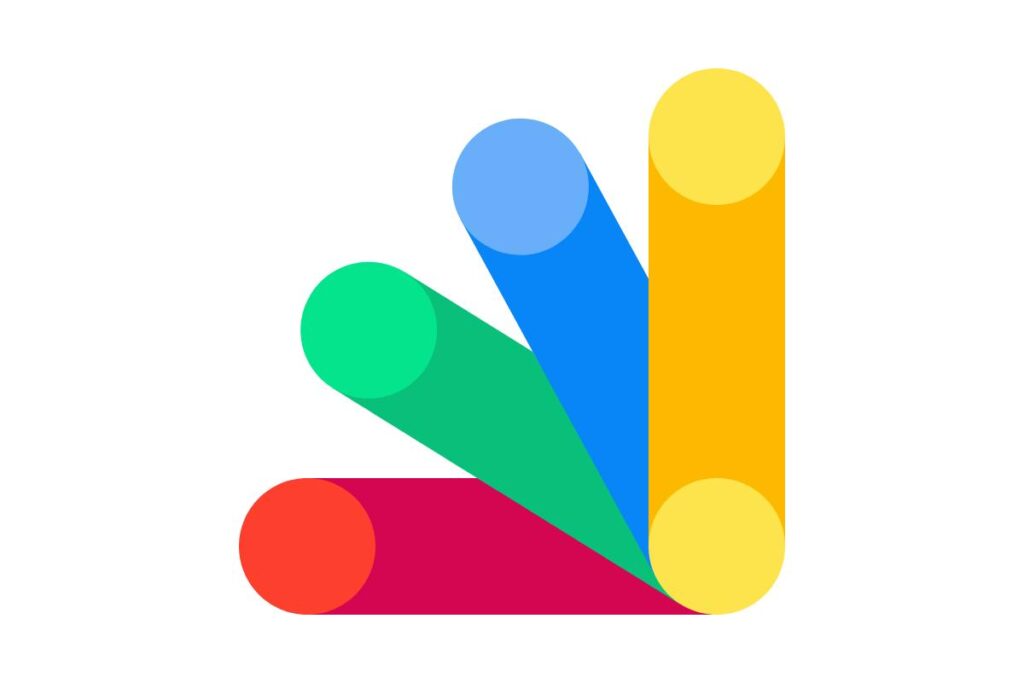
In today’s digital marketing ecosystem, staying ahead of analytics and data tracking is crucial. Google Tag Manager (GTM) empowers marketers, web developers, and business owners to efficiently manage website tags without manual coding. In this comprehensive guide, we break down the essential components of Google Tag Manager, walking you through setup, benefits, use cases, and best practices. What is Google Tag Manager? Google Tag Manager is a free tool provided by Google that allows you to add and manage snippets of code — known as tags — on your website or app. Tags help track user behavior, measure conversions, remarket to audiences, and integrate with third-party tools like Google Analytics, Facebook Pixel, and more. Instead of manually editing website code every time a tag needs updating, GTM provides a centralized platform where all tags can be managed efficiently. This streamlines your workflow, minimizes errors, and reduces dependency on developers. Key Components of Google Tag Manager Understanding GTM’s structure is fundamental to leveraging its full power. The tool consists of three primary components: By combining these elements, you can create a powerful tag deployment strategy tailored to your marketing goals. Why Use Google Tag Manager? Implementing Google Tag Manager brings several advantages: With GTM, marketers gain control and agility over their tracking needs, optimizing campaigns without technical bottlenecks. How to Set Up Google Tag Manager: Step-by-Step 1. Create a Google Tag Manager Account Start by visiting tagmanager.google.com and creating an account: 2. Install the GTM Container Code Once the container is created, GTM generates two snippets of code: These snippets must be added to every page you wish to track. 3. Configure Your First Tag Let’s configure Google Analytics 4 using GTM: Congratulations! You’ve set up your first tag. Popular Use Cases for Google Tag Manager Google Tag Manager isn’t limited to just Google Analytics. Here are popular tags commonly implemented through GTM: By leveraging GTM, businesses unlock robust analytics and tracking capabilities without cluttering their website’s codebase. Best Practices for Managing Google Tag Manager To ensure optimal performance and data integrity, follow these best practices: Following these guidelines ensures your GTM implementation remains scalable, secure, and easy to manage. Common Challenges and Troubleshooting Tips Even though GTM simplifies tag management, challenges can arise. Here’s how to address them: Resolving issues promptly ensures you maintain accurate data collection across all platforms. Google Tag Manager vs. Manual Tagging Why choose GTM over hardcoding tags into your site? Feature Google Tag Manager Manual Tagging Deployment Speed Fast Slow Version Control Built-in Requires manual backup Testing/Debugging Tools Integrated Limited Collaboration Multi-user support Developer-dependent Google Tag Manager provides a scalable, secure, and user-friendly solution for businesses of all sizes. Final Thoughts: Mastering Google Tag Manager In a world where data-driven decision-making is non-negotiable, Google Tag Manager stands as a must-have tool for modern marketers and website owners. By centralizing and simplifying tag management, GTM empowers teams to deploy sophisticated tracking strategies without relying heavily on developers. Whether you’re tracking simple page views or complex eCommerce funnels, GTM provides the flexibility, control, and scalability necessary to future-proof your analytics implementation. Don’t leave your tracking to chance—leverage the power of Google Tag Manager and unlock deeper insights today.
How to A/B Test Your Landing Page for More Conversions

In today’s competitive digital landscape, landing page optimization is crucial for driving conversions. One of the most effective ways to optimize is through A/B testing. By systematically testing different elements, we can discover what resonates best with our audience and leads to more sign-ups, purchases, or other key actions. What Is A/B Testing and Why Does It Matter? A/B testing—also known as split testing—involves comparing two versions of a web page to see which one performs better. We present version A to half of our audience and version B to the other half, then analyze the results based on predefined metrics such as conversion rate, bounce rate, or click-through rate. This approach eliminates guesswork and allows us to make data-driven decisions. Instead of relying on assumptions, we let the audience behavior dictate which design, copy, or CTA (Call-To-Action) works best. Key Elements to Test on Your Landing Page To get meaningful insights, we must focus on critical elements that impact user behavior. Here’s what we should prioritize: 1. Headlines The headline is the first thing visitors see. We should test: 2. Call-To-Action (CTA) The CTA is the gateway to conversion. Key variations include: For example, testing “Get Started Free” vs. “Start Your Free Trial” can lead to significant differences in click rates. 3. Visuals Images and videos strongly influence perceptions. We must test: 4. Form Length The number of fields in a form directly affects drop-off rates. We should compare: 5. Page Layout How content is structured matters. We can experiment with: How to Set Up an Effective A/B Test To conduct a successful A/B test, we need a clear process: Step 1: Define Your Goal Every test needs a primary goal, such as: Without a goal, we won’t know what success looks like. Step 2: Develop a Hypothesis A hypothesis outlines what we expect to happen and why. For example: “Changing the CTA button from red to green will increase clicks because green signals positivity.” This gives clarity and focus to the test. Step 3: Choose the Right Tool There are many powerful tools for A/B testing. We recommend: These platforms allow us to deploy tests without heavy coding and track results accurately. Step 4: Split Your Traffic It’s crucial to randomly split traffic so each variant receives a similar audience. Avoid running other experiments simultaneously to prevent data contamination. Step 5: Run the Test for Statistical Significance We must let the test run until we achieve statistical significance. Ending a test too early can lead to false positives or misleading conclusions. Use calculators from tools like Evan Miller’s A/B Testing Calculator to determine the required sample size. Analyzing A/B Test Results Once data is collected, we analyze: Look beyond vanity metrics. Even if clicks increase, we need to ensure qualified leads are converting, not just traffic inflating numbers. Common Mistakes to Avoid in A/B Testing Many marketers fall into these traps: Scaling Successful A/B Tests After identifying winners, we implement changes across broader campaigns. But optimization doesn’t stop there. We keep testing incremental improvements to build on previous gains. For instance, once we’ve identified the best CTA color, we can test CTA wording, followed by placement, then move to headline variations. Leveraging Multivariate Testing As we mature our optimization strategy, we might consider multivariate testing (MVT)—testing multiple variables simultaneously to see how combinations interact. While more complex, it can unlock deeper insights, especially for high-traffic pages. Conclusion: Continuous Testing Is the Key to Conversion Growth A/B testing isn’t a one-time project; it’s an ongoing process. By systematically testing and iterating, we gain a competitive edge and turn small improvements into substantial revenue growth over time.Let’s approach each test with curiosity, rigor, and a commitment to data-driven marketing excellence.
Best E-commerce Platforms for Selling Online

In today’s digital landscape, choosing the right e-commerce platform is crucial for the success of your online business. Whether you’re a small business owner, an entrepreneur, or an established retailer, selecting the best platform can significantly impact your sales, user experience, and overall growth. With countless options available, we’ve compiled a list of the best e-commerce platforms to help you make an informed decision. 1. Shopify ? The Ultimate All-in-One Solution Shopify is one of the most popular and user-friendly e-commerce platforms, offering a seamless experience for businesses of all sizes. Key Features: Best For: Small to medium-sized businesses looking for a hassle-free setup and powerful features. 2. WooCommerce ? The Best WordPress Plugin for E-commerce WooCommerce is a powerful, flexible, and free WordPress plugin that transforms any website into a fully functional online store. Key Features: Best For: Businesses already using WordPress or those needing a highly customizable solution. 3. BigCommerce ? Best for Scaling Businesses BigCommerce is known for its enterprise-level capabilities while being easy enough for small businesses. Key Features: Best For: Businesses looking to scale quickly with enterprise-level features at an affordable cost. 4. Wix eCommerce ? Best for Beginners Wix eCommerce is a great choice for beginners who need an easy, affordable, and visually appealing online store. Key Features: Best For: Small business owners and entrepreneurs who want a simple and beautiful online store without coding experience. 5. Magento (Adobe Commerce) ? Best for Large Enterprises Magento (now known as Adobe Commerce) is the most powerful, flexible, and scalable e-commerce platform available today. Key Features: Best For: Large businesses and enterprises that require a highly scalable and customizable e-commerce platform. 6. Squarespace ? Best for Creative Entrepreneurs Squarespace is an excellent option for creatives and small business owners looking for visually stunning online stores. Key Features: Best For: Artists, designers, and creative businesses looking for an aesthetically pleasing online store. 7. PrestaShop ? Best Free Open-Source Solution PrestaShop is a free, open-source platform ideal for tech-savvy business owners. Key Features: Best For: Businesses looking for a free, flexible, and self-hosted e-commerce solution. How to Choose the Best E-commerce Platform? Factors to Consider: Conclusion: Which Best E-commerce Platform is Right for You? Each Best E-commerce platform has its unique strengths, and the best choice depends on your specific business needs. Whether you prioritize ease of use, customization, scalability, or affordability, there is a perfect platform for you. If you’re a beginner, Shopify or Wix is ideal. If you need a powerful, scalable solution, Ma
Augmented Reality (AR) in Marketing: The Future of Customer Engagement

Augmented Reality (AR) is revolutionizing the marketing landscape, offering brands an unprecedented way to engage with their customers. From immersive shopping experiences to interactive advertising, AR is reshaping how consumers perceive and interact with products and services. This cutting-edge technology blends digital elements with real-world environments, creating a unique and engaging user experience. In this article, we explore how AR is transforming marketing, its benefits, successful case studies, and how businesses can leverage this technology to stay ahead in the competitive digital marketplace. The Power of Augmented Reality in Marketing The rapid advancement of AR technology has enabled marketers to provide immersive and interactive brand experiences like never before. Unlike traditional marketing methods, AR allows consumers to engage with products virtually, bridging the gap between the physical and digital worlds. Key areas where AR is making a significant impact in marketing include: Immersive Shopping Experiences: Try Before You Buy One of the most exciting applications of AR in marketing is virtual try-ons. Brands across various industries, from fashion to furniture, are using AR to allow customers to visualize products in real-world settings before making a purchase. Fashion and Beauty Industry Furniture and Home Decor Interactive Advertising: Engaging Consumers Like Never Before AR advertising transforms passive viewers into active participants, making marketing campaigns more engaging and memorable. Brands are leveraging AR-powered ads to create unique, interactive experiences that captivate consumers. AR Filters and Lenses on Social Media Gamification in Marketing AR-Powered Product Visualization: Boosting Sales and Reducing Returns Product visualization through AR significantly enhances the customer decision-making process. Customers can see how a product fits their needs without physically interacting with it, reducing hesitation and increasing conversion rates. E-commerce and Retail Automotive Industry Enhancing Customer Engagement and Brand Recall AR marketing creates memorable and engaging experiences, improving brand recall and customer retention. Businesses that adopt AR stand out from competitors and build stronger connections with their audience. Interactive Storytelling Live Events and Experiential Marketing The Future of AR in Marketing As 5G technology and AI-driven AR solutions continue to evolve, the potential for AR in marketing is limitless. Here?s what the future holds: Conclusion: Why Businesses Should Invest in AR Marketing Augmented Reality is no longer a futuristic concept?it is a powerful marketing tool that is transforming the way brands interact with consumers. Businesses that leverage AR will gain a competitive edge by offering immersive shopping experiences, interactive advertisements, and engaging customer interactions. Adopting AR in marketing not only enhances brand engagement and customer satisfaction but also boosts sales and reduces product return rates. As technology advances, AR will become an indispensable component of digital marketing strategies.
The 7 Pillars of Digital Marketing You Must Know
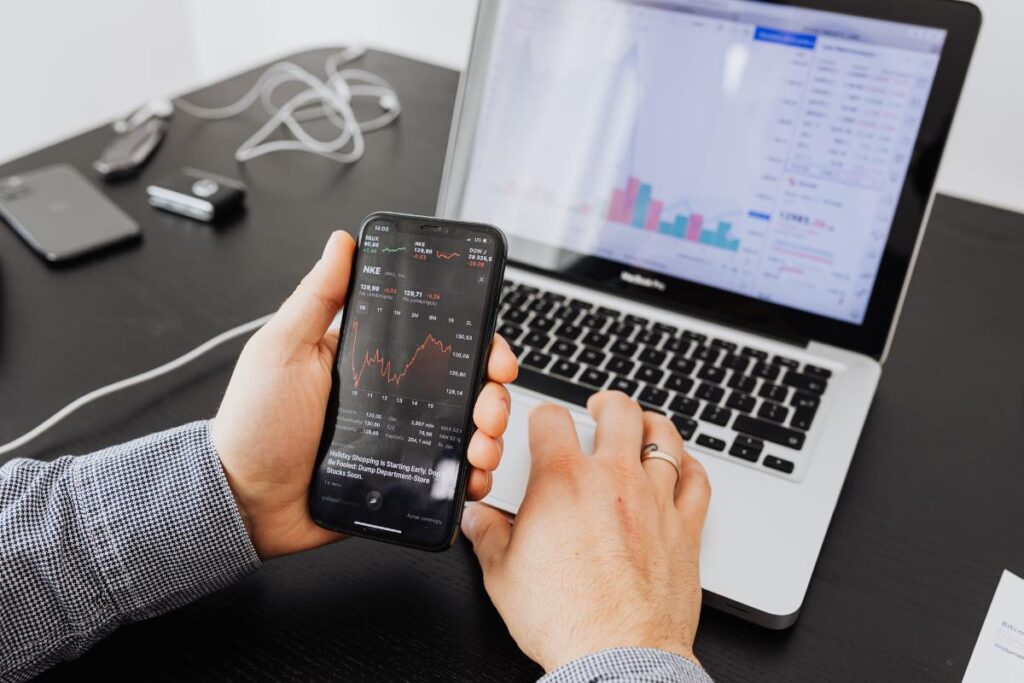
1. Search Engine Optimization (SEO) – The Foundation of Digital Success Search Engine Optimization is the cornerstone of any successful digital marketing strategy. Without a strong SEO framework, your content remains invisible in the crowded online landscape. Effective SEO involves: Mastering SEO ensures that your brand is easily discoverable and ranks prominently in search engine results pages (SERPs). 2. Content Marketing – Fueling Every Digital Strategy Content is the voice of your brand. Whether it’s blog posts, videos, infographics, or podcasts, content marketing builds trust, educates your audience, and nurtures conversions. Successful content marketing includes: A robust content strategy not only supports SEO but also positions your brand as an authority in your niche. 3. Social Media Marketing – Building Brand Identity and Engagement With billions of users across platforms, social media is a powerful channel for brand awareness, community building, and customer engagement. Key tactics in social media marketing: Social media humanizes your brand, making it more relatable and trustworthy in the eyes of your audience. 4. Pay-Per-Click (PPC) Advertising – Accelerating Results with Paid Media While organic strategies are vital, PPC delivers instant visibility and targeted traffic. Platforms like Google Ads and Meta Ads allow advertisers to reach potential customers with precision. Core elements of effective PPC campaigns: PPC ensures that your brand stays top-of-mind during high-intent purchase moments. 5. Email Marketing – Driving Conversions Through Personalized Communication Email marketing remains one of the highest ROI digital channels, offering direct access to an engaged audience. Best practices for email marketing: Strategic email campaigns nurture leads, retain customers, and drive repeat business efficiently. 6. Affiliate and Influencer Marketing – Leveraging Partnerships for Growth Collaborations with affiliates and influencers allow brands to tap into new audiences with credibility. Key components of this pillar: Through trusted partnerships, brands can achieve scalable growth and enhanced social proof. 7. Data Analytics and Conversion Rate Optimization (CRO) – Driving Smarter Decisions Data is at the heart of digital marketing. Without measurement and analysis, optimization is impossible. Essential practices include: By focusing on CRO, brands can maximize the value of every website visit, increasing sales without additional ad spend. Final Thoughts: Mastering the Digital Marketing Ecosystem To dominate in today’s digital arena, brands must synchronize all 7 pillars of digital marketing. Each pillar supports the others, creating a robust and scalable strategy that generates results across channels and customer touchpoints.Investing in each of these areas with the right tools, insights, and execution ensures that your marketing not only attracts attention but translates it into action and revenue.
How to Do Keyword Research Like a Pro
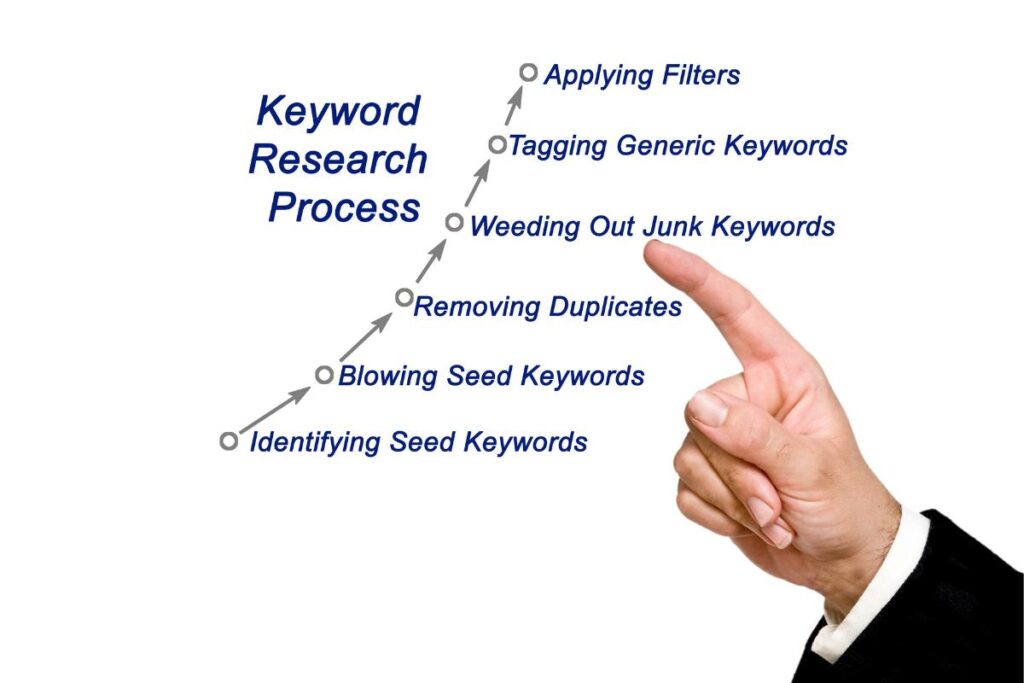
Introduction: The Foundation of Successful SEO In the evolving world of digital marketing, keyword research remains the cornerstone of effective SEO strategies. Without understanding what your audience is searching for, creating content that ranks becomes a guessing game. This article unveils a pro-level approach to keyword research, crafted to help you dominate SERPs and maximize organic traffic. Understanding Keyword Research: More Than Just Search Terms Effective keyword research isn’t just about identifying search terms. It involves understanding user intent, analyzing competitors, and building a keyword strategy that aligns with both short-term visibility and long-term SEO growth. Key Concepts to Understand: Step 1: Start With a Seed Keyword Every keyword strategy starts with a seed keyword – a broad term relevant to your niche. For instance, if you’re in the fitness industry, a seed keyword could be “home workouts.” This term will lead you to related and long-tail keyword variations. Action Steps: Step 2: Use Keyword Research Tools Like a Pro To dig deeper, leverage industry-leading tools to analyze keyword metrics. Best Tools for Keyword Research: Pro Tip: Use at least two tools to cross-verify search volume and keyword difficulty. Step 3: Identify Keyword Intent With Precision Understanding the intent behind the keyword is crucial to producing relevant content. Types of Intent: Align content format with intent: Step 4: Focus on Long-Tail Keywords for Targeted Traffic Long-tail keywords are longer, specific phrases that often have lower competition and higher conversion rates. Examples: Why it matters: Long-tail keywords bring in qualified leads who are more likely to convert, and they’re easier to rank for. Step 5: Analyze Competitor Keywords Strategically To beat your competition, you must know what they rank for. Use tools like Ahrefs Site Explorer or SEMrush Domain Overview to dissect top-ranking competitor websites. Steps to Analyze: Pro Insight: Focus on keywords with moderate competition and create content that delivers 10x more value. Step 6: Build a Keyword Map for Content Strategy Organize your keywords into a structured content map to guide blog creation and site structure. How to Build It: Result: A strategic content plan that enhances SEO and improves user experience. Step 7: Track and Refine Your Keyword Strategy SEO is not a one-time job. Continuously monitor keyword rankings and optimize accordingly. Use These Tools to Track Progress: Update your content every 3-6 months to maintain and improve rankings. Bonus Tips: Future-Proof Your Keyword Research in 2025 Voice & Mobile Optimization: Ensure your keyword usage aligns with how people search on mobile and via voice assistants. Conclusion: Keyword Research is the SEO Superpower Keyword research is not just a task—it’s a powerful growth strategy. When done like a pro, it shapes every element of your digital presence, from content creation to user targeting and SERP domination. Follow the steps, use the right tools, and always align with search intent to stay ahead of the competition.
How to Automate Your Google Ads Workflow with the ChatGPT API

Introduction to Google Ads Automation with AI Managing Google Ads campaigns can be time-consuming and complex. From keyword research and ad copywriting to bid optimization and performance tracking, the process demands precision and constant monitoring. Integrating the ChatGPT API into your Google Ads workflow introduces a powerful layer of automation, minimizing human error, saving time, and boosting campaign performance. With the help of AI, advertisers and digital marketers can now build workflows that generate ad copy, analyze campaign data, offer optimization suggestions, and even write scripts—all through the power of natural language processing. Why Use ChatGPT API for Google Ads Automation The ChatGPT API offers advanced language understanding capabilities that are ideal for automating tasks typically requiring human creativity or reasoning. Here’s how this API enhances your Google Ads workflow: Getting Started with the ChatGPT API To start automating Google Ads with ChatGPT, you’ll need access to: Step-by-Step Guide to Automate Google Ads Using ChatGPT API 1. Automating Ad Copy Generation Use the ChatGPT API to automatically create compelling ad copies. Here’s a Python example: python CopyEdit import openai openai.api_key = “YOUR_OPENAI_API_KEY” def generate_ad_copy(product_name, offer, keyword): prompt = f”Write 3 Google Ads headlines and 2 descriptions for a product called ‘{product_name}’ with an offer of ‘{offer}’ targeting the keyword ‘{keyword}’.” response = openai.ChatCompletion.create( model=”gpt-4″, messages=[{“role”: “user”, “content”: prompt}] ) return response[‘choices’][0][‘message’][‘content’] ad_text = generate_ad_copy(“AI SEO Tool”, “50% off for 3 months”, “SEO automation”) print(ad_text) This code returns ad headlines and descriptions you can directly plug into your campaigns. 2. Keyword Expansion and Grouping ChatGPT can suggest keyword variations and intelligently group them based on user intent. python CopyEdit prompt = “Suggest 10 long-tail keywords for ‘Google Ads automation tool’ and group them into 3 ad groups based on search intent.” response = openai.ChatCompletion.create( model=”gpt-4″, messages=[{“role”: “user”, “content”: prompt}] ) print(response[‘choices’][0][‘message’][‘content’]) This improves your campaign structure and boosts your Quality Score. 3. Automate Performance Reporting Generate weekly or monthly summaries of campaign performance using campaign data and ChatGPT API. python CopyEdit campaign_data = { “CTR”: “3.2%”, “Conversions”: 57, “Cost”: “$1,230”, “CPA”: “$21.58”, “Impressions”: “24,000”, “Clicks”: “768” } prompt = f”””Generate a concise summary of the following Google Ads data: CTR: {campaign_data[‘CTR’]}, Conversions: {campaign_data[‘Conversions’]}, Cost: {campaign_data[‘Cost’]}, CPA: {campaign_data[‘CPA’]}, Impressions: {campaign_data[‘Impressions’]}, Clicks: {campaign_data[‘Clicks’]}.””” response = openai.ChatCompletion.create( model=”gpt-4″, messages=[{“role”: “user”, “content”: prompt}] ) print(response[‘choices’][0][‘message’][‘content’]) This output can be used for client reports or internal reviews, formatted for presentations. 4. Dynamic Google Ads Script Writing You can ask ChatGPT to write Google Ads scripts for tasks like automatic pausing of low-performing ads: python CopyEdit prompt = “””Write a Google Ads script that pauses ads with CTR less than 1% and more than 1000 impressions in the last 7 days.””” response = openai.ChatCompletion.create( model=”gpt-4″, messages=[{“role”: “user”, “content”: prompt}] ) print(response[‘choices’][0][‘message’][‘content’]) You can copy the output and paste it into your Google Ads Scripts dashboard. Advanced Use Cases of ChatGPT API for Google Ads Audience Persona Creation ChatGPT can help you define detailed buyer personas based on your product or service, guiding your targeting and messaging strategy. Competitor Ad Analysis Feed in your competitors’ ads and prompt ChatGPT to identify unique selling points, tone of voice, and optimization strategies. Landing Page Copy Suggestions Ask the API to generate persuasive landing page content aligned with your ad message to ensure message match and improve conversion rates. Ad Schedule Optimization Insights Use your performance data to prompt ChatGPT for recommendations on the best times to run ads based on historical CTR and conversion patterns. Best Practices for Integrating ChatGPT API into Google Ads Workflow Conclusion: Embrace the Future of PPC with ChatGPT API Integrating the ChatGPT API into your Google Ads workflow opens up a new era of performance marketing automation. From crafting high-converting ad copy to dynamic script generation and real-time performance summaries, this AI-powered approach allows advertisers to scale smarter, faster, and more effectively. The best part? It gives marketers more time to focus on strategy while machine intelligence handles the grunt work. If you’re serious about staying ahead in PPC, this is the toolkit you need in your arsenal.
Why Every Business Needs Digital Marketing in 2025
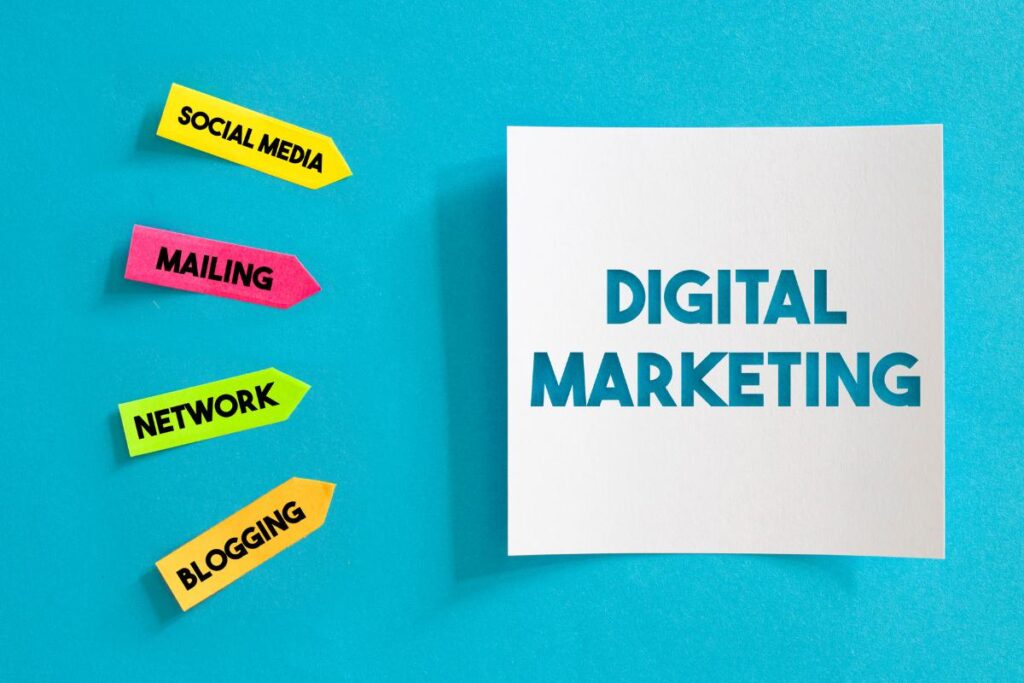
In 2025, digital marketing is no longer a luxury—it’s a necessity. As consumers continue to shift online, businesses that fail to adapt will fall behind. This is a wake-up call for brands still relying solely on traditional advertising. Whether you run a startup or a multinational company, embracing digital marketing is the key to growth, visibility, and long-term success. The Digital Shift: A Permanent Transformation The digital world has transformed consumer behavior. Mobile phones, voice search, and AI-driven platforms have redefined how users discover, engage with, and purchase from brands. In 2025, over 75% of global consumers begin their buying journey online. Businesses not leveraging digital channels are missing out on significant revenue streams and market share. Omnichannel Presence is the New Norm An omnichannel digital marketing strategy allows businesses to reach their audience across multiple touchpoints—Google search, social media, email, websites, apps, and even voice assistants. In 2025, successful companies create seamless experiences across all platforms. If your brand isn’t showing up where your customers are, your competitors certainly are. Benefits of an Omnichannel Approach: SEO in 2025: Smarter, Faster, and More Competitive Search Engine Optimization (SEO) has become more advanced than ever. Google’s algorithms now prioritize user intent, experience, and EEAT (Experience, Expertise, Authoritativeness, Trustworthiness). Ranking on the first page is not just about keywords—it’s about value. Essential SEO Strategies for 2025: Incorporating these elements will skyrocket your brand’s organic visibility. Social Media is the Digital Town Square With platforms like Instagram, TikTok, LinkedIn, and YouTube shaping consumer trends, social media marketing is more powerful than ever. In 2025, social media is not just about posting content—it’s about building interactive communities and driving commerce. Top Social Media Trends of 2025: A strong social presence drives brand loyalty, trust, and viral reach. Email Marketing: Still a Revenue Powerhouse Despite new platforms, email marketing continues to deliver one of the highest ROIs in digital marketing. With hyper-personalization and AI segmentation, businesses in 2025 are crafting tailored email campaigns that convert. Tips for Success: Investing in email means consistent communication and steady conversions. Content Marketing: Fuel for the Funnel Content is still king, but in 2025, quality and intent dominate over quantity. Consumers demand actionable, credible, and well-researched content. From blogs and podcasts to videos and webinars, content drives awareness, trust, and decision-making. Winning Content Tactics: Educational, evergreen content earns backlinks, keeps users engaged, and improves SEO. Paid Advertising: Smarter Budgeting with Higher ROI Google Ads, Facebook Ads, Programmatic Advertising, and native platforms have evolved to offer granular targeting and real-time analytics. In 2025, AI plays a significant role in optimizing ad delivery, bidding, and personalization. Key Paid Ad Innovations: When managed strategically, paid media delivers instant visibility and high returns. Data & Analytics: Make Informed Decisions Digital marketing in 2025 is all about data-driven decision-making. With tools like GA4, Hotjar, SEMrush, and HubSpot, businesses can analyze customer journeys, content performance, and ROI in real time. Key Metrics to Track: Data not only tells you what’s working but also reveals opportunities you’re missing. AI and Automation: Revolutionizing Digital Marketing AI is no longer a buzzword—it’s the backbone of digital marketing. From chatbots and predictive analytics to content creation and personalization, AI saves time and boosts performance. Practical Uses of AI in 2025: Businesses that automate wisely scale faster with fewer resources. Digital Marketing Builds Brand Credibility In a world where fake reviews and scams abound, a strong digital marketing presence establishes trust. Verified business listings, consistent branding, and user-generated content all contribute to a credible online identity. Trust-Building Elements: Customers want to buy from businesses they know, like, and trust—digital marketing makes that possible. Digital Marketing is Cost-Effective and Scalable Unlike traditional marketing, which often requires massive budgets, digital marketing is scalable. Start small with SEO and email marketing, then scale up with paid ads and automation. You can test, optimize, and grow without wasting resources. Why It’s Cost-Effective: Every dollar you invest works harder and smarter with digital tools. Conclusion: Future-Proof Your Business in 2025 As we navigate 2025, digital marketing is not optional—it’s survival. Every business, regardless of size or industry, must establish a strong online presence to compete, grow, and thrive. The digital landscape is rich with tools, platforms, and insights that empower businesses to connect with their audience, build trust, and drive revenue.Don’t wait until your competitors leave you behind. Invest in a comprehensive digital marketing strategy today and set your business up for long-term success.
Google Discover Feed Begins Surfacing Social Media Accounts and Posts

Google has quietly rolled out a monumental update to its Google Discover feed—one that is poised to redefine the intersection of search visibility, social media engagement, and content strategy. With the integration of social media accounts and posts into Discover, brands, influencers, and content creators now have an unprecedented opportunity to boost their digital presence. What is Google Discover? Google Discover is a personalized content feed curated based on a user’s search history, interests, and interactions across Google services. Unlike traditional Google Search, where users actively input queries, Discover is a push-based content experience, surfacing articles, videos, and now, social content, that Google predicts will interest the user. The New Shift: Why Social Media in Discover Matters With the recent update, users are reporting the appearance of social media profiles, particularly from platforms like Instagram, X (formerly Twitter), and TikTok, directly in their Discover feed. This is a significant algorithmic change with far-reaching implications: For brands, this marks a paradigm shift in SEO and content marketing strategies, merging the boundaries between search engine optimization and social media optimization (SMO). How This Impacts SEO and Digital Marketing Strategies 1. Enhanced Cross-Platform Visibility This integration bridges the long-standing gap between search and social platforms. If your content strategy has previously siloed SEO and social efforts, it’s time to rethink. Google is now valuing real-time, socially validated content just as much as evergreen blog posts. Key takeaway: Social engagement metrics—likes, shares, comments—may now directly influence your content’s visibility in Discover. 2. Real-Time Content Indexing Social media offers a constant stream of fresh, high-engagement content. By pulling this into Discover, Google is signaling a preference for timeliness and recency. For digital marketers, this means: 3. Algorithmic Favoritism Toward Authoritative Profiles Google has long emphasized E-E-A-T (Experience, Expertise, Authoritativeness, Trustworthiness) in content evaluation. With social profiles now featured, verified accounts, high-follower profiles, and content creators with a history of high engagement will likely benefit most. Action tip: Build out your social authority. Ensure bios are optimized with target keywords, maintain a consistent brand voice, and engage actively with your audience. 4. Richer Snippet Appearances and Previews Some users are reporting carousel previews of Instagram Reels, TikTok videos, and X threads. These rich media snippets increase click-through rates (CTR) significantly and provide a new playground for visual storytelling. 5. Mobile-First Design Imperative Since Google Discover is primarily accessed via mobile devices, all content—especially social posts—must be mobile-optimized. This includes: Mobile optimization is no longer optional; it is central to success in the new Discover ecosystem. How to Optimize Your Social Media for Google Discover 1. Focus on Relevance Over Virality Google Discover prioritizes interest-matching, not virality alone. This means your content needs to resonate with specific user preferences. 2. Harmonize Website and Social Messaging Ensure your website content and social media feed into one another: 3. Structured Metadata & Open Graph Integration Social platforms like Facebook and X rely heavily on Open Graph tags, while Google leans into structured data. To bridge both: 4. Authority and Activity Drive Inclusion The more active and authoritative your account is, the more likely it will show up in Discover. Here’s how to stay ahead: Implications for Influencers and Personal Brands For influencers and creators, this update is a golden ticket. Now, even individual creators can gain organic reach via Google’s ecosystem if their content is consistent, relevant, and engaging. Conclusion: Social SEO is the Future The inclusion of social media accounts and posts in Google Discover represents a seismic shift in digital marketing. It places organic social content squarely in the world of search engine visibility. For marketers, creators, and brands alike, the time is now to: We are entering a new era where content isn’t just optimized for clicks—but for cross-platform discoverability. Make your social strategy work harder by ensuring it feeds into your overall search presence.
Google Analytics Campaign Data Quality & Attribution Reporting Updates
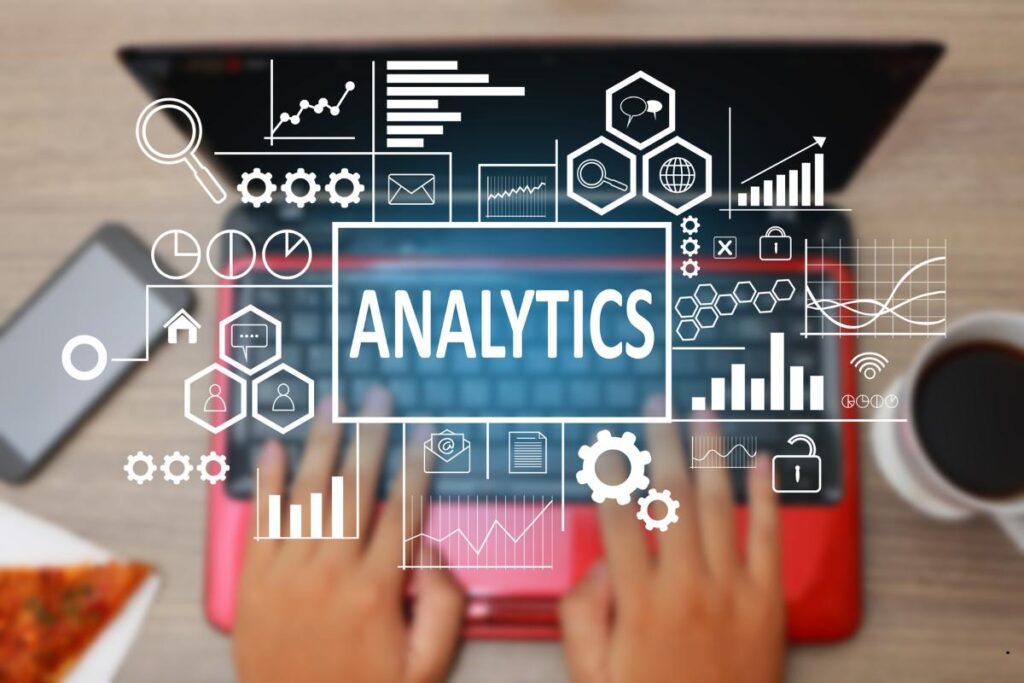
Introduction to Google Analytics Campaign Tracking Enhancements In the ever-evolving digital landscape, Google Analytics (GA) remains the backbone of performance tracking for digital marketers. Recent updates have significantly improved campaign data quality and attribution reporting, enhancing how we analyze, report, and optimize campaigns. The updates not only bring more accurate campaign tracking but also redefine how credit is distributed across various customer touchpoints. Let’s explore what’s new and how these changes can power smarter marketing decisions. What’s New in Google Analytics Campaign Data Quality (2025) Enhanced UTM Parameter Validation Google Analytics now employs automated UTM parameter validation using AI to identify inconsistencies, incorrect formats, and duplication. This upgrade helps eliminate errors at the root level, ensuring your campaign source, medium, and content parameters are correctly attributed. AI-Based Anomaly Detection Using machine learning, GA now flags unusual spikes or drops in campaign traffic, helping you quickly diagnose whether these changes are due to actual campaign performance or data collection issues. Real-Time Traffic Debugging Tools The upgraded DebugView tool in GA4 now supports campaign parameters in real time. Marketers can verify if their campaign data is being tracked correctly as soon as users interact with links. Major Attribution Reporting Updates in Google Analytics Introduction of Data-Driven Attribution as Default Google has made Data-Driven Attribution (DDA) the default attribution model across GA4 properties. This model uses machine learning to evaluate all touchpoints in a user’s journey and assigns credit accordingly. Path Exploration Enhancements Path exploration now includes customizable touchpoint filters and multi-channel funnels, allowing businesses to dissect how users navigate across sessions and devices. Attribution Time Lag Reporting GA now provides a time lag report, showing the delay between a user’s first interaction and their final conversion. This helps in setting realistic retargeting windows and expectations for campaign ROI. Best Practices to Maintain Campaign Data Quality in 2025 Standardize UTM Parameters Across Teams Create a centralized UTM structure for your organization to ensure consistency. Use templates and automated UTM builders to avoid errors that can lead to fragmented campaign data. Use URL Shorteners with Caution While URL shorteners make links more manageable, they can sometimes strip UTM parameters during redirection. Ensure your shortening tool preserves full query strings for accurate attribution. Perform Monthly Data Audits Set a schedule to review and clean your campaign data regularly. Identify and correct any anomalies, outdated campaign tags, or wrongly attributed sessions. Advanced Tips for Attribution Reporting Optimization Segment by Attribution Model GA4 allows you to compare different attribution models (e.g., first-click, linear, position-based) to see how they impact your reported conversions. This comparison can surface hidden trends in buyer behavior. Integrate Offline Conversion Tracking For businesses that receive leads online but close them offline (e.g., B2B or high-ticket services), integrating offline conversion data back into GA can complete the attribution picture. Google Discover Optimization with Accurate Attribution The Google Discover feed prioritizes accurate, engaging, and timely content. Campaigns that use clean attribution reporting are more likely to appear because the system can confidently assess user engagement and relevance. Key Takeaways from the Latest Updates Conclusion: Embrace the Future of Smarter Attribution and Campaign Reporting The 2025 updates in Google Analytics for campaign data quality and attribution reporting reflect a shift toward precision, intelligence, and automation. As we move forward, marketers must adapt by leveraging these powerful tools and best practices.By ensuring clean data inputs, understanding attribution nuances, and utilizing machine learning insights, you position your brand to win in the ultra-competitive digital landscape.
What Should You Face While Running a Google Ads Campaign and What Are the Solutions?

Introduction: Understanding the Landscape of Google Ads Running a Google Ads campaign can be one of the most effective ways to drive targeted traffic and generate conversions. However, it comes with its own set of challenges. From budget constraints to ad disapprovals, marketers often encounter several hurdles that can hinder performance and ROI. In this article, we will delve deep into the core challenges advertisers face during a Google Ads campaign and provide detailed solutions to overcome each one effectively. 1. Budget Mismanagement: Spending Without Strategy One of the most common issues advertisers face is poor budget allocation. Without a clear understanding of how much to spend and where to spend it, campaigns often either overspend or underperform. Solution: Implement Smart Budgeting Techniques 2. Poor Keyword Selection: Targeting the Wrong Audience Targeting irrelevant or overly broad keywords leads to low-quality traffic and a high cost-per-click (CPC). Solution: Conduct Thorough Keyword Research 3. Low Quality Score: Ads Not Performing Well Google assigns a Quality Score based on CTR, ad relevance, and landing page experience. A low score leads to higher CPCs and lower ad placements. Solution: Optimize for High Quality Scores 4. Poor Ad Copy: Low Engagement and CTR Ad creatives that are generic or unappealing result in low click-through rates, wasting impressions and reducing campaign effectiveness. Solution: Craft Compelling, Action-Oriented Ad Copy 5. Irrelevant Landing Pages: Traffic Without Conversions If the landing page doesn?t align with the ad content, users bounce quickly, resulting in wasted ad spend. Solution: Align Landing Pages with Ad Messaging 6. Lack of Conversion Tracking: Flying Blind Not tracking conversions means you can’t measure campaign effectiveness, leading to uninformed decisions and wasted budget. Solution: Set Up Accurate Conversion Tracking 7. Ad Disapprovals: Campaigns Getting Paused Google has strict ad policies, and any violation can lead to ad disapprovals or account suspension. Solution: Follow Google Ads Policies Carefully 8. Inefficient Bidding Strategy: Losing Auctions or Overspending Without the right bidding strategy, you may either lose key placements or overpay for clicks. Solution: Choose the Right Bidding Strategy 9. Not Leveraging Audience Targeting: Missing Potential Conversions Google Ads offers robust audience targeting tools, yet many advertisers don?t utilize them fully. Solution: Use Advanced Audience Targeting Options 10. Lack of Continuous Optimization: Set and Forget Approach Running ads without ongoing optimization leads to stagnant results and wasted opportunities. Solution: Maintain a Continuous Optimization Routine Conclusion: Mastering Google Ads is About Strategy and Agility Running a successful Google Ads campaign is not just about setting up ads. It?s about strategic execution, data-driven decisions, and continuous refinement. By identifying common problems early and applying the right solutions, businesses can dramatically improve their performance, lower their costs, and increase their return on ad spend.
What Challenges Should You Face While Running a Facebook Ads Campaign and Their Smart Solutions
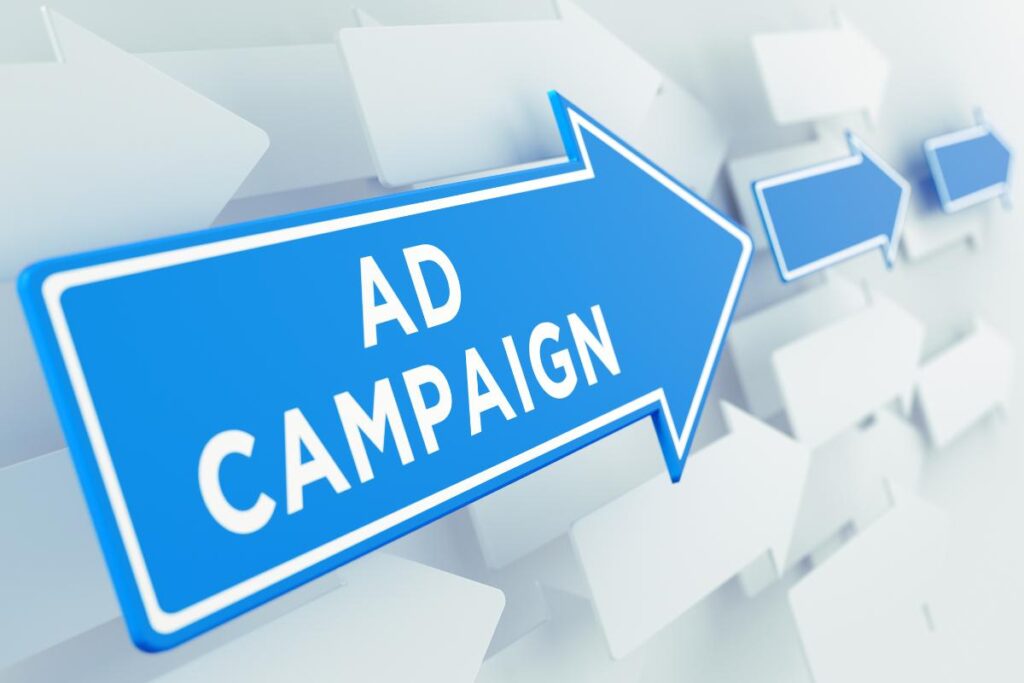
Introduction to Common Facebook Ads Campaign Challenges Running a Facebook Ads campaign can be a powerful tool for lead generation, brand awareness, and sales. But despite the immense potential, advertisers often encounter multiple hurdles that hinder results. At times, the ROI may dip, the ad reach might be stunted, or costs may surge unexpectedly. To build a winning campaign, it’s crucial to understand these challenges and resolve them proactively with strategic solutions. 1. Poor Targeting: The Root of Inefficient Facebook Ads Campaigns Challenge: The most common mistake advertisers make is vague or inaccurate audience targeting. Facebook offers detailed targeting options, yet many campaigns either cast too wide a net or miss the mark with irrelevant demographics, interests, or behaviors. Solution: We recommend creating particular buyer personas using Facebook. Audience Insights. Focus on custom audiences based on email lists, website visitors, or customer data. Also, leverage lookalike audiences to scale effectively without losing relevance. Narrow targeting always outperforms broad assumptions. 2. Low Ad Relevance Score & Engagement Challenge: A low relevance score indicates that your ad isn’t resonating with the target audience. This impacts both cost and reach. Poor engagement results in a bad algorithmic score and decreased delivery. Solution: To fix this, we focus on improving ad creatives and copy. Use eye-catching visuals, high-quality videos, and action-driven headlines. Regular A/B testing of creatives and captions allows you to refine what your audience responds to. Also, use storytelling and emotional triggers to boost interactions. 3. High Cost Per Click (CPC) or Cost Per Result Challenge: Escalating CPCs can derail even the most promising campaigns. If your ads are costing too much for each click or conversion, the ROI turns negative. Solution: Optimize your campaign by selecting the right campaign objective. Don’t use a Traffic objective if your goal is leads or purchases; use Lead Generation or Conversions instead. Also, could you test different ad placements like Facebook News Feed, Instagram Stories, or Audience Network to find lower CPC alternatives? 4. Ad Fatigue: Declining Performance Over Time Challenge: Ad fatigue occurs when your audience sees the same ad multiple times. CTR drops, conversions fall, and costs rise as the novelty wears off. Solution: Combat this with frequent ad rotations. Create multiple versions of ads for the same campaign and rotate creatives weekly. Dynamic creatives can also help by automatically mixing headlines, texts, and images for freshness. Monitor frequency metrics and pause ads nearing 3+ impressions per user. 5. Low Conversion Rate Despite High Traffic Challenge: You’re getting traffic, but it’s not converting. This implies an issue beyond Facebook, likely your landing page or funnel. Solution: Use dedicated landing pages optimized for mobile users. Keep the design clean, the CTA visible, and the messaging aligned with the ad. Use tools like Hotjar or Google Analytics to analyze drop-off points and fix UX issues. Also, install the Facebook Pixel to track conversions and optimize based on real-time data. 6. Limited Budget With No Scalability Challenge: Small budgets can restrict experimentation and reduce the learning phase. Without scalability, campaigns may stagnate. Solution: Start small but scale smart. Once your ad set hits a stable CPA, increase the budget by no more than 20% every 48 hours to avoid disrupting the learning phase. Use Campaign Budget Optimization (CBO) for efficient fund allocation across ad sets. 7. Ads Getting Disapproved Repeatedly Challenge: Frequent ad disapprovals waste time and hurt campaign momentum. Common reasons include prohibited content, misleading claims, or broken URLs. Solution: Familiarize yourself with Facebook Ads Policies. Avoid using sensational or misleading language. Double-check landing pages for functionality and policy compliance. If disapproval persists, request a manual review from Facebook support. 8. Poor Retargeting Strategy Challenge: Not using retargeting is like leaving money on the table. If you aren’t retargeting users who visited your site, engaged with your page, or viewed a video, you’re missing out. Solution: Implement layered retargeting strategies: Always exclude converted users to avoid ad waste. 9. Inaccurate Performance Tracking Challenge: If you’re not tracking the right KPIs or your tracking tools are misconfigured, you can’t make data-driven decisions. Solution: Set up the Facebook Pixel correctly and configure custom conversions. Use UTM parameters for deeper attribution insights in Google Analytics. Monitor metrics like CTR, ROAS, CPA, and Frequency daily. Dashboards in Meta Ads Manager allow real-time performance tuning. 10. Inadequate A/B Testing and Optimization Challenge: Many advertisers launch ads and let them run without continuous testing or optimization, leading to wasted spend. Solution: Always run split tests for creatives, copy, headlines, CTA buttons, and even audience segments. Run experiments for at least 3?5 days with a reasonable budget to get statistically significant results. Use the “Experiments” tab in Meta Ads Manager for structured testing. 11. Ignoring Mobile Optimization Challenge: Most Facebook users access the platform via mobile, but ads and landing pages are often desktop-first, leading to low mobile conversions. Solution: Design mobile-first ads with vertical videos, short attention-grabbing hooks, and thumb-friendly CTAs. Also, ensure your landing pages are AMP-enabled, lightweight, and mobile responsive. 12. No Clear Funnel Strategy Challenge: Launching ads without a mapped-out funnel leads to poor customer journeys. You can’t expect cold leads to convert immediately. Solution: Structure your campaign with a clear funnel: Use custom and lookalike audiences strategically at each funnel stage. Conclusion: Mastering Facebook Ads Campaign is About Smart Execution Success in Facebook Ads Campaign isn’t about spending more, it’s about spending smarter. By tackling the above challenges head-on with strategic solutions, you can transform underperforming campaigns into conversion powerhouses. Continuously monitor performance, optimize creatives, and refine targeting to maintain an edge.
7+ Best ChatGPT Alternative Tools

In the world of AI-driven communication and content creation, ChatGPT has gained massive popularity. However, it?s not the only player on the field. Whether you’re looking for more features, better pricing, or industry-specific AI tools, several ChatGPT alternative tools can match or even surpass its capabilities. In this article, we?ll dive deep into the 7+ best ChatGPT alternatives that you can use in 2025 to boost your productivity and stay ahead in the AI revolution. 1. Claude by Anthropic Claude is a next-gen AI assistant developed by Anthropic, a startup founded by ex-OpenAI employees. It focuses heavily on ethical AI usage and offers a safer, more controllable experience than ChatGPT. Key Features: Best For: Enterprises, legal professionals, and researchers seeking AI with ethical frameworks. 2. Jasper AI Jasper AI is one of the most popular tools among marketers, bloggers, and copywriters. It was built with conversion-focused content in mind and now includes Jasper Chat, a ChatGPT-like interface. Key Features: Best For: Digital marketers, agencies, and content creators who need conversion-optimized content at scale. 3. Google Gemini (Formerly Bard) Google Gemini, previously known as Bard, is Google?s flagship conversational AI built on Gemini Pro models. It integrates directly with the Google ecosystem, providing smart search and productivity integrations. Key Features: Best For: Users who are embedded in the Google ecosystem and want an AI assistant connected to the web. 4. Perplexity AI Perplexity AI is an AI-powered search engine with conversational capabilities. Unlike ChatGPT, it offers cited answers and is extremely helpful for research and fact-based inquiries. Key Features: Best For: Researchers, journalists, and knowledge workers needing real-time factual content. 5. Writesonic (Chatsonic) Writesonic combines the power of GPT with real-time web access, and its Chatsonic module is designed to be a ChatGPT alternative with internet knowledge and image generation features. Key Features: Best For: Creators who want real-time, multimedia AI content generation. 6. YouChat by You.com YouChat is an AI-powered chatbot embedded within the You.com search engine. It combines web search results with chat-style answers, offering more transparency in responses. Key Features: Best For: Users who want a private, accurate, and responsive AI search assistant. 7. Cohere Command R Cohere?s Command R+ is a powerful open-weight language model optimized for retrieval-augmented generation (RAG). It is ideal for building custom AI apps or enterprise solutions. Key Features: Best For: Developers and companies looking to integrate AI into internal systems or products. 8. Open Assistant by LAION Open Assistant is an open-source ChatGPT alternative, built by the team behind the LAION dataset. It aims to create a truly community-driven AI assistant. Key Features: Best For: Developers, hobbyists, and privacy-conscious users who want full control over their AI assistant. Which ChatGPT Alternative is Right for You? Choosing the best ChatGPT alternative depends on your unique needs: Each of these tools offers distinct advantages, whether you?re an individual creator, developer, business owner, or researcher. Final Thoughts The AI landscape is rapidly evolving, and while ChatGPT continues to lead in many areas, these alternatives present serious competition. From real-time knowledge, SEO content creation, and ethical AI, to open-source innovation, the choices are diverse and impactful. Embrace these tools and see which one best fits your workflow in 2025.
Getting Social Media Marketing Help: A Comprehensive Guide

In today’s highly competitive digital landscape, social media marketing is no longer optional—it’s essential. Brands that thrive online understand the power of leveraging social platforms to increase visibility, drive engagement, and generate leads. But navigating the complexities of social media algorithms, trends, and audience behavior requires more than just posting regularly. This is where getting professional social media marketing help becomes a game-changer. Why You Need Social Media Marketing Help Social media platforms like Facebook, Instagram, Twitter (X), LinkedIn, TikTok, and Pinterest are not just spaces for networking—they’re powerful business tools. However, using them effectively involves: Without expert guidance, businesses often find themselves stuck in a cycle of low engagement, missed opportunities, and inconsistent branding. Types of Social Media Marketing Help You Can Get 1. Social Media Agencies Hiring a full-service social media marketing agency gives you access to a team of specialists—strategists, designers, copywriters, and analysts—who collaborate to deliver a cohesive strategy tailored to your business. Agencies provide: Pros: High expertise, end-to-end serviceCons: Higher cost 2. Freelance Social Media Experts Freelancers offer flexibility and affordability for startups and small businesses. Whether you need content creation, hashtag research, or ad management, freelance social media managers can provide focused support at a reasonable cost. Pros: Budget-friendly, customizable packagesCons: May lack multi-platform support or backup if unavailable 3. In-House Social Media Manager Hiring an in-house specialist ensures dedicated attention to your brand’s voice, values, and goals. You can build an internal content calendar, run campaigns consistently, and respond to real-time engagement quickly. Pros: Full control, instant feedbackCons: Limited exposure to broader industry trends 4. Social Media Tools and Automation Platforms For those who prefer a DIY approach, there are powerful social media tools that simplify tasks like scheduling, analytics, and content curation: While these tools can’t replace human creativity, they streamline operations and boost productivity. How to Choose the Right Social Media Marketing Help Define Your Goals Start by identifying what you want to achieve: Once your goals are clear, you can determine the level of support you need. Assess Your Budget Social media help varies widely in cost. Freelancers may charge $300–$1,500/month, while agencies range from $1,500–$10,000+/month. Tools may cost $10–$300/month depending on features. Check Experience and Niche Expertise Ask to see case studies, testimonials, or portfolios. If you’re in a specific niche like real estate, fashion, or B2B SaaS, choose someone who understands that audience. Essential Services to Look For in Social Media Help Content Strategy and Calendar Planning An expert will help you build a monthly content calendar aligned with your marketing objectives, ensuring consistency and relevance. Creative Content Creation Look for professionals who can create: Paid Advertising Expertise A strong strategy should include Meta Ads, LinkedIn Ads, TikTok promotions, or Pinterest boosts for better reach and conversions. Analytics and Reporting Data is key. Monthly reports with insights on reach, impressions, engagement, and CTRs allow for continuous improvement. Common Mistakes to Avoid When Seeking Social Media Help Benefits of Getting Social Media Marketing Help When you partner with the right social media professional or team, you unlock the full potential of platforms and turn them into revenue-generating engines. Trends Shaping Social Media Marketing in 2025 Short-form Video Reigns Supreme Platforms like TikTok, Instagram Reels, and YouTube Shorts will dominate in 2025. Brands must embrace video storytelling to connect quickly and effectively. AI-Powered Content Creation AI tools like ChatGPT, Jasper, and Lumen5 can aid in caption generation, idea brainstorming, and video scripting—giving marketers a competitive edge. Community-First Strategies Consumers expect authenticity, interaction, and values alignment. Community-building through comments, live sessions, and UGC (user-generated content) will be crucial. Voice Search and Social SEO Optimizing social content for searchability on platforms is now vital. Use relevant keywords, hashtags, and alt text for every post. Final Thoughts: Take the Leap, Grow Smarter In an era where digital attention is currency, getting the right social media marketing help is a smart investment—not a cost. Whether you’re a startup or a scaling enterprise, the right strategy and support will amplify your reach, humanize your brand, and turn followers into loyal customers. Start by defining your goals, assess your needs, and seek out skilled professionals or tools that can elevate your presence across platforms. Your competitors are already doing it. Don’t get left behind.
How I Prepared for a Month of Social Media Content in One Day

Managing social media effectively is no longer just about showing up — it’s about showing up consistently with content that resonates. Preparing 30 days of content in a single day might sound overwhelming, but with the right system, tools, and mindset, it becomes a highly efficient and creative process. Here’s how we mastered the art of monthly content planning in a single power-packed day. Understanding the Power of a Social Media Content Strategy Before diving into creation, we begin by defining a crystal-clear content strategy. This involves: With a strategy in place, we don’t waste time wondering what to post. Every piece of content has a purpose. Step 1: Conducting a Monthly Brainstorming Session The first thing on our checklist is an intense brainstorming session. We gather the team (or go solo with a cup of strong coffee) and list out: By the end of this session, we usually have 35–40 raw ideas, which gives us room to refine or swap out any content mid-month if needed. Step 2: Creating a Visual Social Media Content Calendar With our ideas in hand, we map everything onto a visual content calendar using tools like Trello, Notion, or Google Sheets. Each day gets a theme: Assigning a theme per day streamlines our thought process and ensures variety. Step 3: Writing All the Captions in Batches Next, we move on to writing captions in bulk. We batch-create the copy for each post, ensuring it’s aligned with: By using AI-assisted writing tools or templates, we maintain a steady flow while optimizing for engagement and SEO. Step 4: Designing All Visual Assets We then shift to the visual part of the content. Whether using Canva Pro, Adobe Express, or Figma, we: All designs are saved in organized folders, named by date and content type, so uploading becomes seamless. Step 5: Scheduling Content on Automation Tools To avoid daily manual posting, we use tools like Meta Business Suite, Buffer, Hootsuite, or Later. With these, we: This ensures the content is published automatically, even if we’re offline or on vacation. Step 6: Repurposing Long-Form Content A major content hack we use is repurposing. For example: This reduces the workload and maximizes content reach across channels. Step 7: Monitoring and Analytics Setup Once scheduled, we set up UTM links and tracking for every CTA. This allows us to monitor: These insights inform our next month’s plan, making our strategy smarter each time. Bonus Tip: Creating an Evergreen Content Bank In addition to the scheduled content, we maintain an evergreen content bank. These are: Having this bank allows us to fill in gaps if something unexpected arises or a post needs to be replaced. Why This System Works Like a Charm By following this structured process: It’s not just about working hard — it’s about working smart. Preparing a month’s worth of content in a day is the result of strategic thinking, batch creation, and efficient scheduling. Final Thoughts Consistency is what wins in social media marketing. With one well-planned day, you can eliminate daily guesswork, show up with confidence, and deliver content that connects deeply with your audience. Try this system once, and it will transform the way you do content forever.
Make Money Online With These 10 Paid Survey Sites

In a world where flexible income opportunities are on the rise, paid survey sites have emerged as a legitimate and accessible way to make money online. These platforms offer users the chance to earn rewards, cash, and gift cards simply by sharing their opinions on products, services, and trends. Whether you’re a student, a stay-at-home parent, or someone looking to supplement your income, online surveys for money can be a valuable side hustle. Below are the 10 best paid survey sites that consistently pay and are trusted by millions of users globally. 1. Swagbucks – Best Overall Survey Site Swagbucks has been a consistent leader in the online rewards space. With over $800 million paid out to users, it’s more than just a survey site. Swagbucks is perfect for beginners who want an all-in-one platform with flexible earning options. 2. InboxDollars – Get Paid for Everyday Activities InboxDollars pays users for taking surveys, reading emails, and playing games. It’s a straightforward, user-friendly site with consistent survey availability. 3. Survey Junkie – Trusted and Transparent Survey Junkie is one of the most trusted paid survey platforms in the industry. Ideal for users looking for legit surveys that pay well and don’t waste time. 4. Toluna Influencers – Global Survey Community Toluna connects users with brands by gathering honest feedback through interactive surveys. A great choice if you’re looking for an interactive community and global earning potential. 5. Pinecone Research – High-Paying and Exclusive Pinecone Research is known for offering higher-than-average payouts per survey, often between $3 to $5. Perfect for users seeking quality over quantity and premium rewards. 6. YouGov – Influence Public Opinion YouGov surveys are often cited in major news outlets, and participants help shape public debate. Ideal for users interested in making an impact while earning extra income. 7. LifePoints – Quick and Frequent Surveys LifePoints offers a wide variety of short and snappy surveys. Perfect for those with limited time looking to earn a little extra on the go. 8. PrizeRebel – Fast and Flexible Earning PrizeRebel is a versatile platform that offers numerous ways to earn points. A solid platform for users who enjoy fast, frequent payouts. 9. Valued Opinions – Earn Up to $5 Per Survey Valued Opinions pays well for completing detailed and targeted surveys. Great for users who prefer high-reward, low-effort opportunities. 10. MyPoints – Shop, Earn, Redeem MyPoints combines cashback shopping and survey-taking for double earning potential. A good pick for users who want to earn while they shop and take surveys. Tips to Maximize Your Earnings To get the most out of these paid survey sites, follow these pro tips: Final Thoughts: Make Money Online With These 10 Paid Survey Sites Earning from paid surveys won’t make you rich overnight, but it’s a proven and accessible way to bring in some extra income, especially in your spare time. The key is to choose legit survey sites that value your time and pay consistently. Whether you’re saving for something special or simply looking to pad your budget, these top 10 survey platforms are a great place to start.
The #1 Skill That Pays More Than Gen AI In 2025

Introduction: Surpassing Gen AI – The Real Game-Changer in 2025 As Generative AI continues to disrupt industries across the board, there’s a critical shift happening beneath the surface. While tools like ChatGPT, Midjourney, and other Gen AI platforms revolutionize productivity, there’s one high-income skill that’s quietly surpassing even Gen AI in earning potential, scalability, and demand. In 2025, the skill that’s dominating every sector — from tech to marketing, finance to healthcare — is Prompt Engineering. Yes, Prompt Engineering has evolved beyond a niche discipline into a core capability that businesses are willing to pay top dollar for. While many know how to use AI, only a few know how to communicate with it effectively. What Is Prompt Engineering – And Why It Pays More Than Gen AI Jobs Prompt Engineering is the skill of crafting highly optimized and precise instructions that extract the most accurate, creative, and valuable outputs from AI systems. It bridges the gap between human intelligence and artificial intelligence — transforming raw generative potential into laser-focused results that drive revenue, save costs, and accelerate innovation. While Gen AI models are widely accessible, only prompt engineers can unlock their full potential. In 2025, enterprises no longer look for generic AI users. They need professionals who can mold AI responses to align with business goals, branding tone, legal parameters, customer psychology, and conversion science. Why Prompt Engineering Outranks Other High-Income Skills 1. Every Industry Needs It From marketing agencies needing better ad copy, to lawyers needing compliance-safe contracts, and eCommerce platforms generating product descriptions — prompt engineers are in demand everywhere. Unlike roles such as AI researchers or data scientists that require advanced degrees and years of experience, prompt engineering is accessible, learnable, and fast-scaling. 2. Low Competition, High ROI Even in 2025, only a fraction of professionals understand the nuances of prompt layering, syntax structures, context anchoring, or feedback loops. This rare combination of scarcity and business-critical application makes it one of the highest-paying freelance and full-time roles right now. Hourly rates for expert-level prompt engineers range from $150 to $500 per hour, with companies paying $10,000 to $25,000 per month for full-time positions. 3. It Multiplies the Value of All Other Skills Whether you’re in copywriting, graphic design, coding, HR, or product development, prompt engineering enhances your performance exponentially. Instead of replacing your job, it supercharges it — making you more efficient, creative, and irreplaceable. Examples of High-Paying Use Cases of Prompt Engineering in 2025 1. Marketing Agencies: Conversion-Centric Prompts Prompt engineers are helping agencies generate 10x ad variants with tested emotional triggers, brand tone consistency, and conversion optimization layers — all within seconds. A/B testing becomes lightning fast and far more strategic. 2. Software Companies: Code Optimizations Engineers use prompts to refactor code, spot vulnerabilities, and generate documentation instantly. Prompt engineers specialize in contextualizing the input for cleaner, bug-free code outputs. 3. Healthcare & Legal: Compliance-Driven Prompts In sensitive sectors, AI hallucinations are costly. Prompt engineers are building multi-step, compliance-trained prompt workflows that ensure accuracy, legality, and audit trails for generated content. Key Components of Mastering Prompt Engineering To excel in prompt engineering and out-earn AI engineers, data analysts, and even developers, you need to master several components: 1. Prompt Syntax & Structure 2. Intent Clarity & Goal Alignment 3. Iterative Prompt Design 4. Tool Ecosystem Mastery Certifications & Learning Paths That Lead to 6-Figure Prompt Engineering Roles You don’t need a Ph.D. to become a high-earning prompt engineer. But strategic learning matters. Recommended Certifications: Hands-On Projects: Who Is Hiring Prompt Engineers in 2025 Prompt engineers are no longer just hired by startups or AI labs. In 2025, roles exist across industries: Freelance Prompt Engineers Are Making 6 Figures – Here’s Proof Platforms like Upwork and Toptal show listings where skilled prompt engineers make $20,000+ per project. Some sell prompt templates, others work on retainer with marketing or SaaS firms. In many cases, they combine prompt engineering with automation tools to build end-to-end AI systems — turning them into consultants rather than mere technicians. The Future Outlook – Why Prompt Engineering is Not a Fad 1. Generative AI Will Evolve – Prompting Will Too As LLMs get more complex and multimodal, the need for skilled human-AI intermediaries will only increase. Prompt engineering will evolve into AI Communication Architecture. 2. Prompt Engineers Will Lead Teams We’ll see prompt engineers managing AI content teams, training models on enterprise data, and embedding AI logic into workflows. It’s not just a skill — it’s a leadership track. 3. Educational Institutions Are Catching Up By mid-2025, top universities are offering degree-level certifications in prompt logic, AI communication, and ethical AI prompting. Those early in the game are already ahead. Conclusion: The Highest-Income Skill of 2025 is Prompt Engineering In a world flooded with AI tools, those who can command these tools effectively are becoming the new elite workforce. If you’re looking to future-proof your career, multiply your income, and stay at the cutting edge — learning prompt engineering is non-negotiable.It pays more than Gen AI itself because it’s the key to unlocking Gen AI’s full potential.
What Problems Did You Face While Becoming a Digital Marketer?

Introduction: The Digital Marketing Dream vs. Harsh Reality The world of digital marketing often appears glamorous, full of freedom, creativity, and financial potential. However, the path to becoming a successful digital marketer is rarely a smooth one. We encountered a range of problems that tested our patience, challenged our mindset, and ultimately shaped us into industry professionals. In this blog, we share the real-life problems we faced during our journey and how we overcame them. 1. Information Overload in the Digital World One of the first problems we faced was information overload. The internet is flooded with tutorials, blogs, courses, and webinars, each claiming to be the ultimate guide to digital marketing. However, without clear direction, it’s easy to fall into the trap of: Solution: We started curating learning materials from trusted industry leaders like HubSpot, Neil Patel, Moz, and Google Skillshop. Following a structured learning path and focusing on one specialization at a time helped us reduce confusion and sharpen our skills. 2. Lack of Practical Experience Textbook knowledge does not equate to real-world application. In the beginning, we lacked hands-on experience. This gap made it hard to: Solution: We began working on personal projects, volunteering for small businesses, and offering discounted services to friends and local shops. This helped us build our portfolios, gain testimonials, and understand the nuances of real-time digital marketing. 3. Fear of Failure and Impostor Syndrome As beginners, many of us suffered from impostor syndrome. We constantly questioned our abilities, especially when comparing ourselves with seasoned marketers on LinkedIn or YouTube. The fear of failure led to: Solution: We shifted our mindset from perfection to progress. We embraced failures as learning opportunities and slowly built confidence by achieving small wins. Reading books like The Lean Startup and joining supportive communities helped us stay motivated. 4. Keeping Up with Ever-Changing Algorithms Search engine algorithms, social media algorithms, and advertising policies change frequently. Keeping up with these shifts is critical to success but also exhausting. We faced challenges like: Solution: We subscribed to newsletters from Google, Search Engine Journal, and SEMrush to stay informed. Constant experimentation and agility became core parts of our routine to adapt and pivot as needed. 5. Budget Constraints and Tool Limitations As beginners, we didn’t have the funds to invest in premium tools like Ahrefs, SEMrush, or advanced CRMs. Budget constraints limited our ability to: Solution: We utilized free or freemium tools effectively—Ubersuggest, Google Keyword Planner, Canva, Buffer, and Mailchimp became our go-to resources. As we grew, we invested our earnings into upgrading tools strategically. 6. Client Acquisition and Retention Finding our first few clients was one of the most difficult tasks. With no prior experience or testimonials, most prospects weren’t willing to take a chance on us. We also faced: Solution: We built a solid online presence on platforms like LinkedIn and Upwork. We shared case studies, optimized our profiles, and networked regularly. Building a client onboarding process and clear communication channels helped us improve retention. 7. Work-Life Balance and Burnout When starting out, we wore multiple hats—content writer, SEO expert, ad manager, social media strategist—all at once. This led to: Solution: We adopted time-blocking methods and set realistic expectations. Delegating tasks, hiring freelancers for specific roles, and prioritizing mental health helped restore balance and maintain long-term sustainability in our careers. 8. Unpredictable Results and Client Expectations Digital marketing is not magic. Yet, many clients expected instant results. Managing these expectations was tough, especially when: Solution: We learned to set expectations right from the beginning. We created data-backed projections, provided frequent reports, and educated clients about the long-term nature of marketing. Transparency became our trust-building weapon. 9. Skill Gaps in Analytics and Coding In today’s competitive landscape, being a marketer without basic understanding of analytics or HTML/CSS is a disadvantage. Initially, we struggled with: Solution: We invested time in learning Google Tag Manager, Google Analytics 4, and basic coding principles. These skills not only improved our campaigns but also enhanced our technical credibility. 10. Standing Out in a Saturated Market With millions of marketers out there, differentiating ourselves was a real struggle. Generic portfolios and content made it harder to: Solution: We identified our unique value proposition (UVP) and niche. Whether it was hospitality marketing, local SEO, or eCommerce advertising, focusing on a niche helped us speak directly to our target audience and build authority. Conclusion: What Problems Did You Face While Becoming a Digital Marketer? Every problem we faced while becoming digital marketers taught us something invaluable. From technical gaps to emotional setbacks, these challenges became stepping stones in our career journey. The world of digital marketing is dynamic, rewarding, and full of potential—but it demands resilience, adaptability, and continuous learning.
Why Search Marketing & Branding Need Each Other
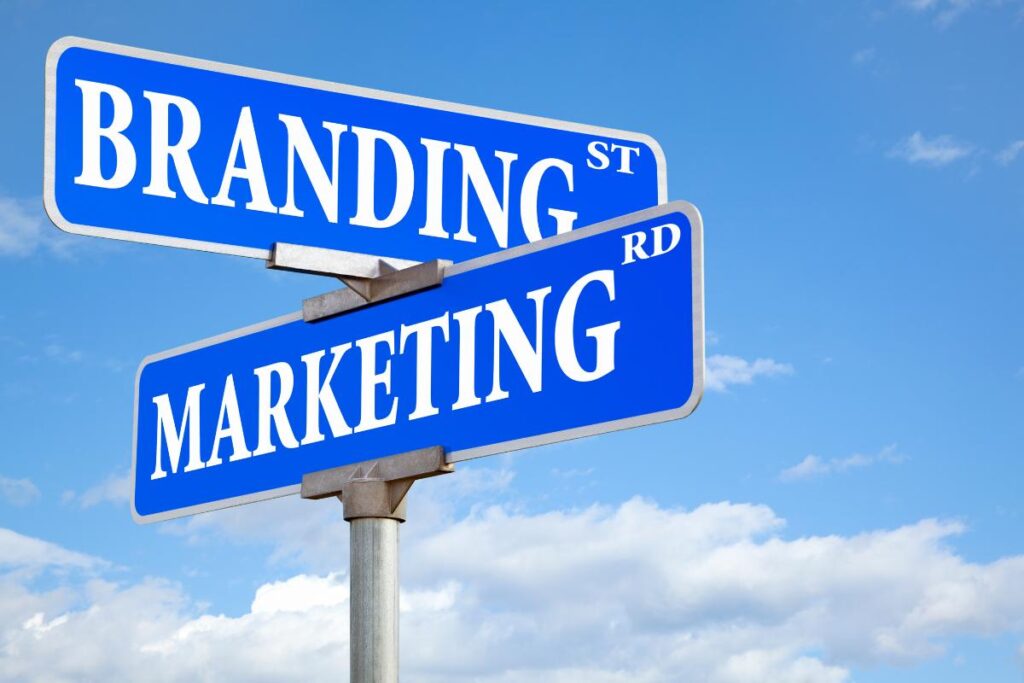
In today’s fiercely competitive digital landscape, search marketing and branding are no longer siloed disciplines. The most successful companies are discovering that when branding and search marketing work in unison, they create a powerful synergy that drives visibility, conversions, customer loyalty, and long-term growth. Too often, search teams operate in isolation from brand strategists, leading to fragmented messaging, underwhelming customer engagement, and missed performance opportunities. In contrast, when integrated properly, branding fuels more effective search campaigns, and search provides real-time feedback and insights that refine brand strategy. The Power of Integrated Messaging: Content & Creative Alignment When search marketers lack access to a robust brand strategy, content creation becomes disjointed. They might rely on keyword targeting, trends, or competitor content without truly embodying the unique voice of the brand. This inconsistency dilutes brand presence and creates confusion for users transitioning between ad clicks, landing pages, and the website. Establishing brand guidelines and creative standards equips SEO and PPC professionals with tools to build assets that are both performance-driven and brand-aligned. Search campaigns can then extend the brand story, amplifying the key messages that shape perception and build trust. Search Performance Hinges on a Strong Unique Value Proposition In search, especially paid search, performance is dictated not just by targeting the right keywords, but by how compellingly we position our offering. If the messaging is generic or price-focused, leads often bounce back to Google searching for better alternatives. A well-articulated brand proposition, rooted in customer insights and emotional value, helps set your company apart. When this value is woven into SEO metadata, ad headlines, descriptions, and landing page copy, the entire funnel becomes more efficient. Leads that enter the funnel understand the unique value, improving conversion quality and reducing wasted ad spend. Leveraging Branding for Stronger Off-Page SEO Signals Off-page SEO success doesn’t come solely from content quality or link-building tactics. Brand equity plays a pivotal role. When a brand is credible, recognizable, and carries a distinct voice, it attracts natural backlinks and brand mentions that are gold for SEO. PR campaigns, influencer outreach, and digital awareness efforts built on a solid brand strategy yield higher engagement and SEO value. Moreover, with Google’s increasing emphasis on entity recognition and E-E-A-T (Experience, Expertise, Authoritativeness, and Trustworthiness), a recognizable brand identity is vital for achieving higher rankings. Branding Bridges Cross-Functional Resources for Better SEO Execution SEO doesn’t live in a vacuum. It requires collaboration with writers, developers, UX designers, and product managers. Without a shared understanding of the brand’s voice, tone, and purpose, each function may interpret and execute differently. By embedding branding frameworks within organizational processes, search teams can align seamlessly with other departments. This reduces execution errors, shortens production timelines, and ensures a consistent customer experience across all digital touchpoints. Brand Creatives Gain Access to Measurable KPIs through Search Integration Historically, branding efforts struggled with connecting to tangible metrics. But when branding collaborates closely with search, the entire customer journey becomes visible and measurable. From impression to conversion, every touchpoint can be tracked, giving brand strategists the ability to see how messaging and identity drive results. Search analytics reveal behavioral insights—what customers are searching for, how they interact with content, what converts them. These metrics help brand teams refine narratives and validate assumptions, bringing creative strategies closer to performance indicators like ROI and customer lifetime value. Combining Search Data with Brand Research for Competitive Advantage Branding teams often rely on qualitative data, focus groups, and historical research. Meanwhile, search marketers operate in the present, using real-time keyword data, competitor analysis, and customer behavior insights. By integrating these two data streams, companies gain a multidimensional understanding of the market. Keyword data can reveal gaps in brand messaging, audience interests not yet addressed, and emerging trends. This strengthens brand positioning and creates a feedback loop between research and performance. Branding as a Living Strategy: Refinement Through Search Insights Most branding exercises are treated as static projects—something done once and revisited years later. In contrast, search marketing is inherently iterative. Campaigns are optimized weekly, even daily, based on performance data. By combining forces, branding can evolve into a continuous process. Rather than overhauling identity every 5–10 years, brands can implement ongoing refinements, updating messages and visuals that no longer resonate, guided by user engagement data from search. This agility gives businesses a competitive edge, allowing them to stay relevant and aligned with changing consumer behavior. Full-Funnel Activation and Brand Governance through Search One of the biggest pitfalls of branding projects is poor implementation. Even after months of strategic work, if the look, tone, and promise aren’t translated into ads, content, and campaigns, the brand suffers. With search teams working closely with brand strategists, there’s end-to-end visibility into execution. From choosing target keywords that align with brand values, to crafting display ads that reflect brand visuals, to optimizing landing pages for both conversions and brand consistency—every element is governed and refined. This full-funnel synergy prevents dilution, miscommunication, or inconsistency, empowering teams to bring the brand to life in every customer interaction. Final Thoughts: Branding and Search Together Drive Business Success When treated separately, search and branding can only go so far. But together, they create a strategic powerhouse that drives awareness, demand, conversions, and loyalty. Integrated strategies lead to: As digital ecosystems evolve, companies that merge search and branding into a unified strategy will lead the market, foster stronger customer relationships, and achieve scalable growth.
How to Increase Website Traffic Organically
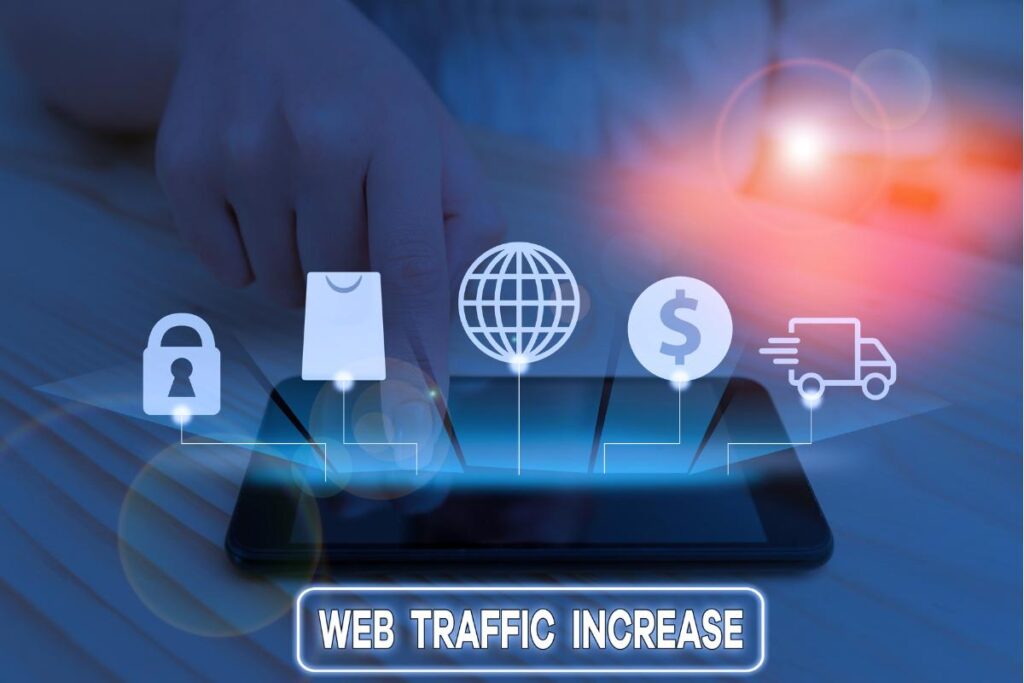
In today’s digital landscape, increasing website traffic organically is crucial for online success. With search engine algorithms evolving constantly, it is imperative to adopt strategies that ensure long-term, sustainable traffic growth. Below, we discuss the most effective ways to increase website traffic organically, using innovative and actionable techniques that help websites rank higher on Google. 1. Create High-Quality, Valuable Content Content is the backbone of any successful website. To drive organic traffic, focus on producing engaging, informative, and problem-solving content. Here’s how: 2. Optimize for SEO (On-Page & Technical SEO) Without SEO optimization, even the best content won’t rank. Follow these key SEO strategies: On-Page SEO Technical SEO 3. Leverage Social Media for Organic Growth Social media is a powerful tool to drive organic traffic to your website. Here’s how to maximize its potential: 4. Implement a Strong Link-Building Strategy Backlinks are one of the most important ranking factors for Google. Here’s how to earn high-quality backlinks: 5. Maximize User Experience (UX) and Engagement User engagement plays a significant role in SEO rankings. Here’s how to enhance UX: 6. Rank for Featured Snippets and Voice Search With the rise of voice search, optimizing for featured snippets is essential. Here’s how: 7. Utilize Email Marketing to Retain Visitors Email marketing helps drive repeat visitors to your website. Here’s how to use it effectively: 8. Use Video Content to Drive Traffic Videos have become one of the most engaging content formats. Leverage video marketing to attract traffic: 9. Participate in Online Communities and Forums Engage in relevant forums, Q&A sites, and communities to establish authority and drive traffic: 10. Monitor Analytics and Improve Performance Analyzing your website’s performance is crucial for continuous growth. Use these tools: Final Thoughts Increasing organic website traffic requires a combination of quality content, SEO strategies, social media marketing, and continuous optimization. Implement these tactics consistently to see sustainable results and improved rankings on Google.
How This Small Business Grew from $0 to $10,000/Month Using SEO

Introduction In the ever-evolving digital landscape, small businesses often struggle to gain visibility and compete with larger enterprises. However, with the right SEO strategies, even a brand-new business can grow from zero revenue to generating $10,000 per month. This case study reveals the exact steps taken to achieve this impressive milestone using search engine optimization (SEO). Step 1: Identifying the Right Niche and Keywords One of the most critical steps in scaling a business is choosing the right niche and targeting high-intent keywords. The business began by conducting thorough keyword research using tools like Google Keyword Planner, Ahrefs, and SEMrush to identify low-competition yet high-volume keywords that aligned with their industry. Key Actions: Step 2: Building a High-Quality Website with SEO in Mind A well-optimized website is crucial for SEO success. The business ensured that their site was designed for both users and search engines, focusing on speed, mobile-friendliness, and structured content. Key Website Optimizations: Step 3: Creating High-Quality, Engaging Content Content is king in SEO, and the business leveraged it to its full potential. They focused on producing high-quality blog posts, guides, and case studies that provided immense value to their audience. Content Strategy That Worked: Step 4: Mastering On-Page SEO The business paid close attention to on-page SEO elements, ensuring that every page was fully optimized to rank higher on Google SERPs. Effective On-Page SEO Tactics: Step 5: Implementing a Strong Link-Building Strategy To increase domain authority and organic rankings, the business focused on building high-quality backlinks from authoritative websites. Link-Building Techniques Used: Step 6: Leveraging Local SEO for More Visibility Since the business catered to a specific geographic location, local SEO played a huge role in their success. Local SEO Actions Taken: Step 7: Utilizing Social Media for Traffic and Engagement Social media played a vital role in driving organic traffic and building brand authority. Social Media Strategy: Step 8: Tracking Performance and Making Data-Driven Decisions One of the reasons for this business’s success was its commitment to continuous improvement based on analytics. Analytics and Adjustments: Conclusion: The Power of SEO in Business Growth By implementing a well-structured SEO strategy, this small business successfully scaled its revenue from $0 to $10,000 per month. SEO is not an overnight success—it requires dedication, strategic planning, and continuous optimization. However, when executed correctly, it can lead to sustainable, long-term business growth.
Instagram Growth Hacks: How to Increase Followers Organically
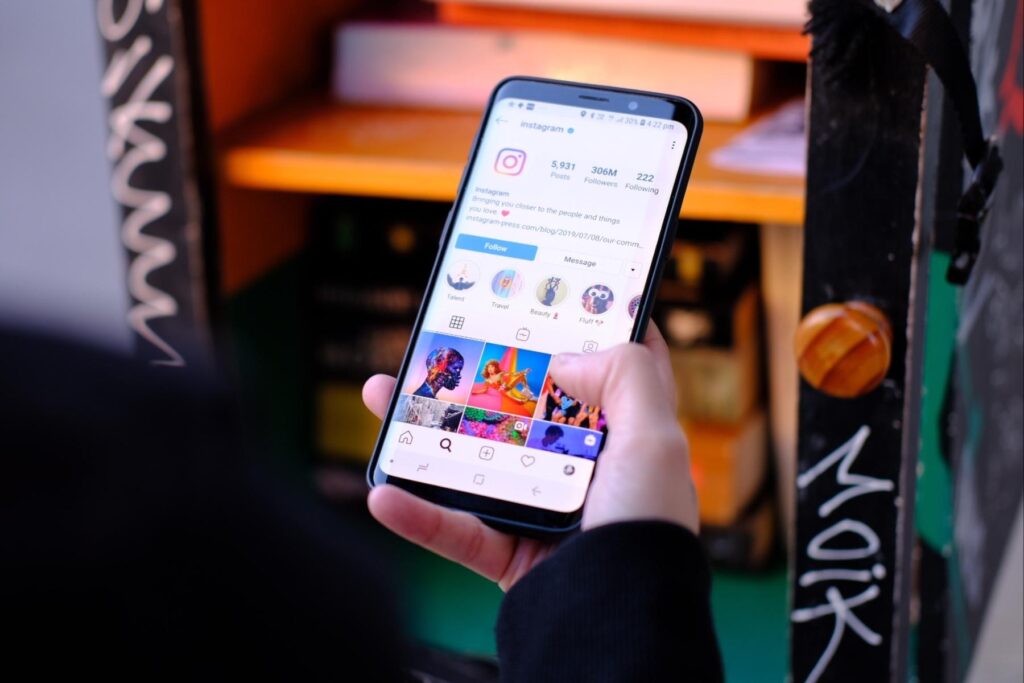
Introduction: Mastering Organic Instagram Growth in 2025 In an era where social media algorithms evolve daily, growing your Instagram followers organically requires precision, strategy, and consistency. We have curated a comprehensive, actionable guide filled with the latest Instagram growth hacks to elevate your presence, build genuine engagement, and expand your community naturally. Dive in to unlock the secrets of sustainable growth without relying on paid promotions. Understand the Instagram Algorithm (2025 Update) To increase followers organically, it is crucial to understand how the Instagram algorithm works in 2025. The platform prioritizes content based on relevance, engagement, and timeliness. Posts that spark conversations, receive shares, saves, and meaningful comments are more likely to be amplified. Optimize Your Profile for Maximum Impact Your profile is your digital storefront. An optimized profile invites visitors to follow. An attractive, well-organized profile builds trust and encourages organic follower growth. Create High-Quality, Shareable Content The foundation of organic Instagram growth is content that resonates deeply with your target audience. The more your content gets shared and saved, the more exposure you receive, naturally increasing followers. Harness the Power of Instagram Reels Instagram Reels continue to dominate engagement in 2025. Reels have the potential to go viral and introduce your content to thousands of non-followers, propelling organic growth. Strategic Use of Hashtags for Wider Reach Hashtags are still a powerful tool to boost visibility. A well-researched hashtag strategy helps your content appear in the “Explore” page and attract new followers organically. Engage Authentically With Your Audience Engagement is a two-way street. The more you engage, the more visible you become. Building genuine connections transforms followers into loyal advocates of your brand. Leverage User-Generated Content (UGC) Encourage your community to create content around your brand. UGC builds trust and expands your reach organically as followers share your brand with their networks. Collaborate With Micro-Influencers Micro-influencers offer high engagement rates and a loyal audience. Strategic collaborations introduce your profile to engaged followers, leading to organic growth. Analyze Insights and Optimize Strategy Regularly reviewing performance metrics ensures your strategies are effective. Data-driven decisions refine your approach and accelerate follower growth. Stay Consistent and Patient Organic growth requires persistence. Even the most successful accounts grew through consistent effort over time. By staying committed to your strategy, you will build an engaged, authentic audience that values your content. Conclusion: Build a Thriving Community Organically Growing your Instagram followers organically in 2025 is not only possible but also sustainable with the right strategies. Focus on delivering valuable content, fostering genuine engagement, and continuously optimizing your approach. Implement these proven Instagram growth hacks to expand your reach, strengthen your brand, and build a loyal community that supports your journey.
How to Create Viral Content Without Spending a Fortune

Unlocking Viral Potential: Crafting Content That Spreads Like Wildfire Creating viral content doesn’t require deep pockets—it requires smart strategy, creativity, and a deep understanding of audience behavior. We will guide you through actionable, budget-friendly methods to create content that captures attention, fuels engagement, and spreads organically across the web. Understand Your Audience Deeply Before crafting any content, audience research is essential. Knowing what excites, entertains, and educates your audience increases the chances of your content being shared. Keywords to focus: audience research for viral content, know your audience Leverage Trending Topics and Timely Content Capitalizing on trends is a powerful way to achieve virality without spending a fortune. Keywords to focus: trending content ideas, viral trends 2025, how to spot trending topics Craft Magnetic Headlines Your headline is the gateway to your content. Without a compelling headline, even the best content can go unnoticed. Keywords to focus: viral headlines examples, how to write catchy headlines Create Emotionally Charged Content Content that triggers emotions is far more likely to be shared. Aim to evoke joy, surprise, awe, or even mild controversy. Keywords to focus: emotional marketing, viral storytelling, emotional content creation Utilize User-Generated Content (UGC) Incorporating user-generated content not only saves money but also builds trust and community. Keywords to focus: UGC marketing strategy, user-generated viral campaigns Optimize for Social Sharing Make sharing effortless to maximize reach. Keywords to focus: social media optimization, shareable content design Repurpose Content Across Platforms Stretch the life and reach of your content by repurposing it in multiple formats. Keywords to focus: content repurposing tips, how to reuse content, multi-channel marketing Collaborate with Micro-Influencers Instead of spending heavily on big names, collaborate with micro-influencers who have loyal, engaged audiences. Keywords to focus: micro-influencer marketing, budget influencer campaigns Harness the Power of SEO and Google Discover SEO is the silent driver behind viral content, pushing it to massive organic audiences. Keywords to focus: viral SEO strategy, Google Discover optimization, SEO for viral content Measure, Analyze, and Optimize Continuous improvement is key to sustained virality. Keywords to focus: content performance metrics, optimize viral content, analytics for content creators Final Thoughts Creating viral content without draining your budget is entirely achievable with the right strategies. By understanding your audience, leveraging trends, crafting emotional and shareable content, and continuously optimizing your efforts, you can significantly increase your chances of creating impactful, viral content.
The Power of Storytelling in Social Media Marketing

In the dynamic world of social media marketing, brands constantly compete for attention. What sets successful campaigns apart is not just aesthetic visuals or clever captions — it is the art of storytelling. Storytelling in social media is not just a trend; it is the heartbeat of effective communication, helping brands forge emotional connections, inspire trust, and drive conversion. Why Storytelling Is the Backbone of Social Media Marketing Storytelling humanizes your brand. In an age saturated with content, faceless promotion rarely resonates. Storytelling allows brands to showcase their human side, create relatability, and build trust. It takes your audience beyond products and services and immerses them in experiences, values, and emotions that align with your brand identity. Emotional engagement leads to action. Scientific research supports that emotions play a vital role in decision-making. Through well-crafted narratives, brands can evoke joy, surprise, empathy, or inspiration — prompting audiences to engage, share, and convert. How Storytelling Elevates Brand Visibility 1. Increases Engagement Rates Algorithms favor content that generates interactions. Stories spark comments, likes, and shares at a higher rate than generic posts. Audiences are more likely to engage with posts that feel personal and authentic, extending organic reach and amplifying visibility across platforms. 2. Enhances Brand Recall When people remember a story, they remember the brand. Storytelling improves message retention and ensures that your audience not only recalls your content but also feels a connection to your mission and values. 3. Builds Community and Loyalty A strong narrative fosters a sense of community among followers. People gravitate toward brands that reflect their aspirations and beliefs. By consistently sharing stories that resonate, you cultivate a loyal audience who advocates for your brand. Essential Elements of Compelling Social Media Stories Authenticity Above All Audiences can detect inauthenticity instantly. Genuine stories that reflect real experiences, challenges, and successes build credibility and deepen relationships. A Strong Character Arc Every story needs a hero. Whether it’s your brand, a customer, or an employee, focus on characters that your audience can root for and relate to. Conflict and Resolution Good stories have tension. Showcasing how your brand or product solves problems provides a narrative arc that keeps audiences invested and illustrates your value proposition. Visual Storytelling Images, videos, and graphics enhance the emotional impact of your story. Use compelling visuals to draw your audience in and sustain their attention. Effective Storytelling Formats for Social Media Instagram Stories and Reels Short, snappy, and visually engaging, these formats are perfect for micro-narratives that captivate in seconds. YouTube Vlogs and Documentaries Long-form video allows for deep dives into your brand story, customer journeys, or behind-the-scenes content, building a more profound connection. LinkedIn Articles and Case Studies Professional storytelling shines on LinkedIn. Sharing thought leadership, case studies, or founder’s stories attracts B2B audiences and establishes authority. Facebook and Instagram Carousels Carousel posts guide audiences through a sequential narrative, ideal for tutorials, success stories, or showcasing product journeys. Crafting Storytelling Strategies That Convert Know Your Audience Intimately Successful storytelling begins with understanding your audience’s desires, pain points, and values. Create detailed personas to tailor narratives that speak directly to them. Align Stories With Brand Values Your stories should consistently reflect your core values and mission. Whether it’s sustainability, innovation, or customer-first service, let your principles guide your narratives. Use Data to Refine Your Stories Analyze engagement metrics to understand which stories resonate most. Adjust your content strategy to amplify successful narratives and refine less effective ones. Incorporate User-Generated Content Encourage your audience to share their stories featuring your brand. User-generated content is a powerful testimonial and adds authenticity to your brand’s narrative. Case Studies: Brands Winning with Storytelling Airbnb: Selling Experiences, Not Just Stays Airbnb masterfully tells the stories of hosts and travelers, creating an emotional connection that extends far beyond booking accommodations. Their user-centric approach has cultivated a global community and unparalleled brand loyalty. Nike: Empowerment Through Storytelling Nike consistently delivers powerful narratives that focus on perseverance, achievement, and social issues. Their “Just Do It” campaigns inspire millions, proving that emotional resonance drives engagement and sales. Dove: Championing Real Beauty Dove’s campaigns highlight authentic beauty stories, challenging stereotypes and building trust. Their storytelling empowers their audience and cements their brand as a leader in genuine, purpose-driven marketing. The Future of Storytelling in Social Media As social media evolves, so too will the methods of storytelling. Interactive stories, augmented reality (AR), and live streaming are shaping the future of narrative marketing. Brands that adapt and embrace these innovations will captivate audiences in even more immersive ways. Furthermore, AI-generated content and personalized storytelling will allow brands to tailor stories to individual users at scale, deepening engagement and driving hyper-personalized experiences. Conclusion: Unleash the Power of Storytelling Today In the noisy digital landscape, storytelling stands out as the most effective way to build lasting relationships with your audience. It transforms your marketing from transactional to emotional, from forgettable to unforgettable. By embracing authentic narratives, leveraging diverse formats, and consistently delivering value-driven stories, your brand can rise above the competition and thrive in the digital arena. Start weaving powerful stories today and watch your social media presence flourish.
Blogging Mistakes to Avoid: A Comprehensive Guide for Success

Blogging is an incredible way to share knowledge, build an audience, and generate income, but many bloggers make critical mistakes that hinder their success. Whether you’re a beginner or an experienced writer, avoiding these pitfalls will help you rank higher on Google, attract more readers, and monetize effectively. 1. Not Defining a Clear Niche Many new bloggers make the mistake of writing about too many unrelated topics. This confuses search engines and your audience, making it difficult to establish authority in a specific area. Instead, choose a clear, profitable niche and focus on creating high-quality content around it. 2. Ignoring Keyword Research SEO is the backbone of successful blogging, and ignoring keyword research is a major mistake. Without targeting the right keywords, your blog will struggle to appear in search engine results. Use tools like Google Keyword Planner, Ahrefs, or SEMrush to find low-competition, high-search-volume keywords relevant to your niche. 3. Writing Low-Quality, Unstructured Content Readers and search engines love well-organized, engaging, and in-depth content. Avoid fluff, grammatical errors, and poorly structured articles. Use subheadings (H2, H3), bullet points, and short paragraphs to enhance readability. 4. Not Optimizing for SEO SEO optimization is crucial for ranking well on Google. Some common SEO mistakes include: Ensure that every blog post follows SEO best practices to improve rankings. 5. Neglecting Consistency in Posting Google favors websites that update regularly. If you post inconsistently, your audience may lose interest, and your rankings can drop. Create a content calendar and commit to publishing new posts at least once a week. 6. Failing to Promote Blog Posts Simply publishing a blog post is not enough. Promote your content through: 7. Ignoring User Experience (UX) A slow-loading, difficult-to-navigate blog drives visitors away. Make sure your blog: 8. Not Building an Email List An email list is a powerful tool for driving traffic and monetization. Many bloggers neglect this, missing out on direct engagement with their audience. Use lead magnets (eBooks, checklists, exclusive content) to encourage sign-ups. 9. Overloading with Ads and Pop-ups Too many ads or intrusive pop-ups can frustrate visitors and increase bounce rates. Use a balanced approach by optimizing ad placements without disrupting the user experience. 10. Not Monetizing Effectively While ads are a common monetization method, there are many other ways to make money blogging, including: 11. Not Tracking Performance with Analytics Many bloggers fail to analyze their traffic and content performance. Use Google Analytics and Google Search Console to track: 12. Giving Up Too Soon Blogging is not a get-rich-quick scheme. It takes time, effort, and patience to see results. Many bloggers quit before their blogs gain traction. Stay consistent, learn from mistakes, and keep improving. Final Thoughts Avoiding these common blogging mistakes can significantly improve your chances of success. By focusing on quality content, SEO, consistency, and user engagement, you can build a profitable blog that ranks well on Google.
YouTube’s New Ad-Free Video Sharing Feature – How It Works & What You Need to Know
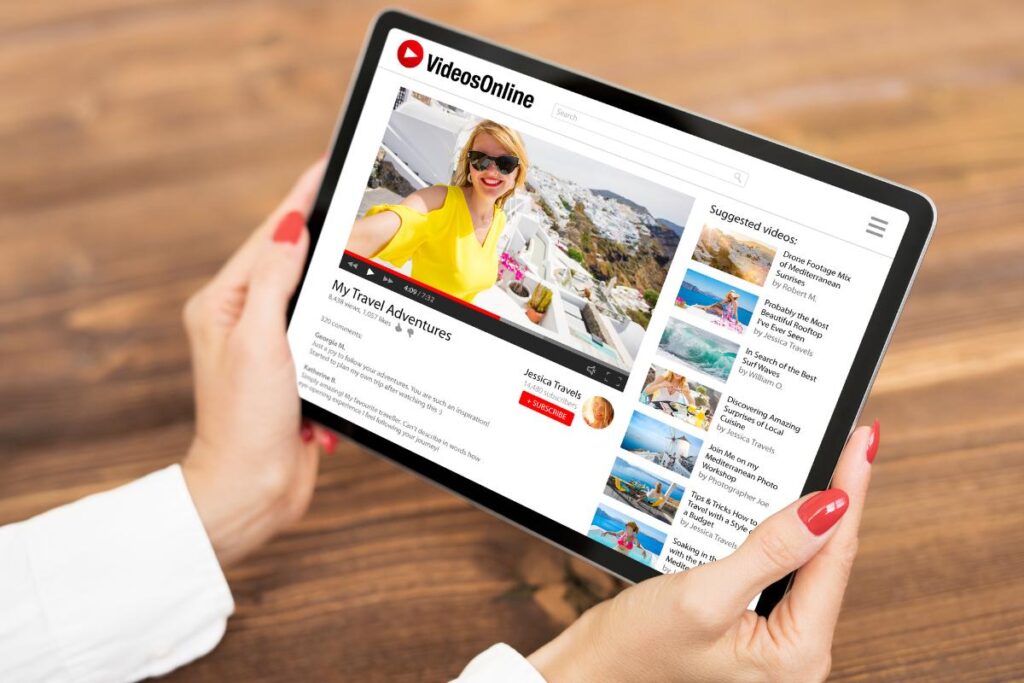
YouTube has been continuously refining its Premium subscription model to entice more users into signing up. Now, in an intriguing move, Google-owned YouTube is testing a feature that allows Premium members to share up to 10 ad-free video views per month with non-subscribers. While this sounds like an exciting development, there are limitations and uncertainties surrounding this experimental offering. YouTube’s Ad-Free Video Sharing Experiment In select countries, YouTube Premium subscribers can now share ad-free viewing experiences with others who do not have a subscription. This means that non-paying users can enjoy up to 10 ad-free video views per month if a Premium member shares a link with them. This initiative aims to give users a firsthand taste of YouTube Premium’s ad-free experience in hopes of converting them into paying subscribers. Where Is This Feature Available? Currently, YouTube is testing this feature in a limited number of countries, including: While the company has not yet confirmed a global rollout, the feature’s success in these regions may determine its expansion to more countries in the future. How YouTube’s Ad-Free Video Sharing Works YouTube has outlined a simple process for Premium members to share ad-free videos with non-subscribers. Here’s how it works: Recipients of the link must be logged into their YouTube account to access the ad-free experience. Each Premium subscriber can only share up to 10 ad-free video views per month. What’s the Catch? While this feature sounds promising, there are a few notable limitations: Additionally, YouTube has made it clear that it is actively gathering user feedback on this feature. Users can share their opinions via yt.be/help/feedback to influence its potential long-term rollout. Why Is YouTube Testing This Feature? YouTube’s push for Premium subscriptions has intensified over the past few years. The platform has been experimenting with various tactics, including: By allowing non-Premium users to experience ad-free viewing temporarily, YouTube hopes to convert more users into paying customers. YouTube Premium Subscription Costs: India vs. US If this feature convinces you to subscribe to YouTube Premium, here’s how much it costs in different regions: YouTube Premium Prices in India YouTube Premium Prices in the US Will YouTube Expand This Feature Globally? While YouTube has not officially announced a global expansion, it is highly likely that this test could lead to a broader rollout if the feature garners positive feedback. As more users demand ad-free experiences, platforms like YouTube will continue exploring innovative ways to balance user satisfaction with revenue generation. Final Thoughts YouTube’s ad-free sharing experiment is a bold move aimed at attracting more Premium subscribers. However, given the limitations, it remains to be seen whether this initiative will become a permanent offering or simply remain a short-lived test. For now, if you’re in one of the eligible countries and have a YouTube Premium membership, make the most of this feature and let your friends and family experience ad-free viewing before the offer disappears countries and have a YouTube Premium membership, make the most of this feature and let your friends and family experience ad-free viewing before the offer disappears.
Types of Digital Marketing: The Ultimate Guide to Online Success
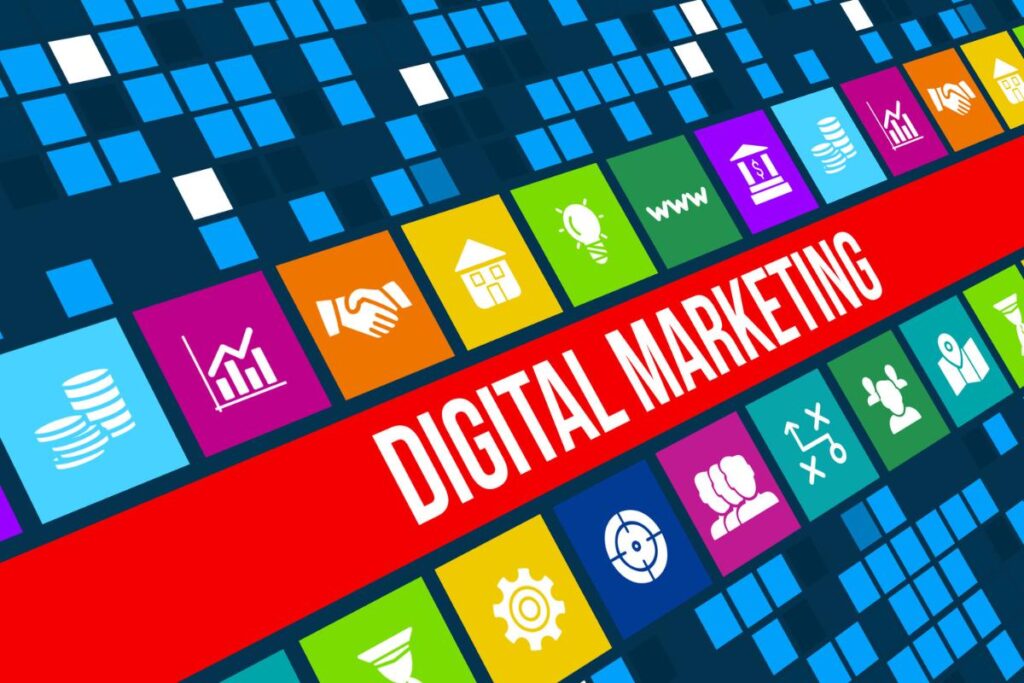
Introduction In today’s highly competitive digital landscape, businesses must leverage various digital marketing strategies to stay ahead of the competition. With consumers spending more time online, companies that fail to establish a strong digital presence risk losing significant market share. In this guide, we explore the most effective types of digital marketing and how businesses can use them to maximize their online reach and revenue. 1. Search Engine Optimization (SEO) SEO is the process of optimizing a website to improve its ranking on search engines like Google. A well-optimized website attracts organic traffic, increasing visibility and credibility. Key Components of SEO: Why It Matters? SEO is crucial because higher rankings mean more traffic, and more traffic leads to increased conversions and sales. 2. Pay-Per-Click Advertising (PPC) PPC is a form of paid advertising where businesses pay for each click on their ad. Google Ads and social media advertising platforms are popular choices. Benefits of PPC: Example: Google Ads, Facebook Ads, Instagram Ads, and LinkedIn Ads are widely used for PPC marketing. 3. Content Marketing Content marketing focuses on creating and distributing valuable, relevant, and consistent content to attract and retain a clearly defined audience. Types of Content Marketing: Why Content Marketing? A strong content marketing strategy helps businesses educate their audience, build trust, and drive organic traffic. 4. Social Media Marketing (SMM) Social media platforms such as Facebook, Instagram, LinkedIn, Twitter, and TikTok provide businesses with opportunities to connect with their audience, build relationships, and increase brand awareness. Effective SMM Strategies: Impact: SMM helps businesses build a loyal community and drive traffic to their website. 5. Email Marketing Email marketing is a direct communication strategy that involves sending personalized messages to prospects and customers. Types of Email Campaigns: Why Use Email Marketing? Email marketing generates one of the highest ROIs among digital marketing strategies, making it essential for customer retention. 6. Affiliate Marketing Affiliate marketing is a performance-based marketing model where businesses reward affiliates for driving traffic or sales through their referral links. How It Works? Example: Amazon Associates and other eCommerce affiliate programs help businesses grow without significant upfront costs. 7. Influencer Marketing Influencer marketing involves partnering with social media influencers who have a large following to promote products or services. Why Influencer Marketing Works? Example: Fashion, beauty, and tech brands frequently leverage Instagram and YouTube influencers to boost sales. 8. Video Marketing Video content has become a powerful tool for engaging audiences and increasing brand recall. Popular Video Marketing Platforms: Why Video? Videos generate higher engagement rates and improve SEO rankings by increasing dwell time on websites. 9. Mobile Marketing Mobile marketing targets users through smartphones, tablets, and mobile applications. Key Mobile Marketing Strategies: Why It Matters? With more than 50% of internet traffic coming from mobile devices, optimizing for mobile marketing is essential. 10. Marketing Automation Marketing automation uses AI-powered tools to streamline marketing tasks such as email marketing, social media posting, and lead nurturing. Benefits of Marketing Automation: Popular Tools: HubSpot, Mailchimp, Marketo, and Pardot. Conclusion Incorporating multiple digital marketing strategies is crucial for achieving online success. From SEO and PPC to content marketing and influencer collaborations, businesses must adapt to ever-evolving trends to stay competitive.By implementing these strategies effectively, businesses can increase brand visibility, drive traffic, and boost conversions.
Blog vs. Article: The Ultimate Showdown for Writers and Marketers!

Introduction: The Battle of Words! If you’re stepping into the world of content creation, you’ve probably asked yourself: What’s the difference between a blog and an article? Many people use these terms interchangeably, but they serve different purposes and impact your digital marketing strategy differently. This blog will break down the key differences between blogs and articles in a fun, engaging way while also giving you an SEO-friendly approach to use them effectively and monetize your content! 1. Definition & Purpose Blog: Your Personal Digital Diary & Marketing Magnet A blog is an informal, conversational piece of content often written in a first-person tone. It is designed to engage, inform, or entertain readers. Blogs typically: Example: “How I Grew My Travel Blog from 0 to 100K Monthly Visitors in 6 Months!” Article: A Formal & Fact-Based Information Source An article is a more structured, professional, and research-driven piece. It is usually published in magazines, newspapers, or authoritative websites. Articles: Example: “The Economic Impact of the Travel Industry in 2025.” 2. Writing Style & Tone Pro Tip: If you want to rank on Google, blogs should be conversational yet SEO-friendly, while articles should be deeply informative with strong references. 3. SEO & Monetization Potential Blog: A Goldmine for Ranking on Google Blogs are perfect for driving organic traffic and earning money through: Article: High Authority, Less SEO Power Articles are usually not optimized for SEO like blogs, making them harder to rank organically. However, they bring credibility and can be monetized through: 4. Length & Format Differences Final Verdict: Which One Should You Write? If you want to rank on Google, drive traffic, and monetize—start a blog! If you want to build credibility and authority in your niche—write articles. Ready to Start? If you’re a freelancer or blogger, mix both strategies. Use blog posts to grow your audience and articles to establish credibility. 🚀 Want to start a profitable blog? Explore our digital marketing resources and step into the world of content monetization today! This engaging approach blends SEO tactics with valuable insights to help your blog rank higher on Google. Let me know if you want adjustments or monetization strategies tailored to your niche
3 Skills To Generate $5,000+/Month In Passive Income In 2025
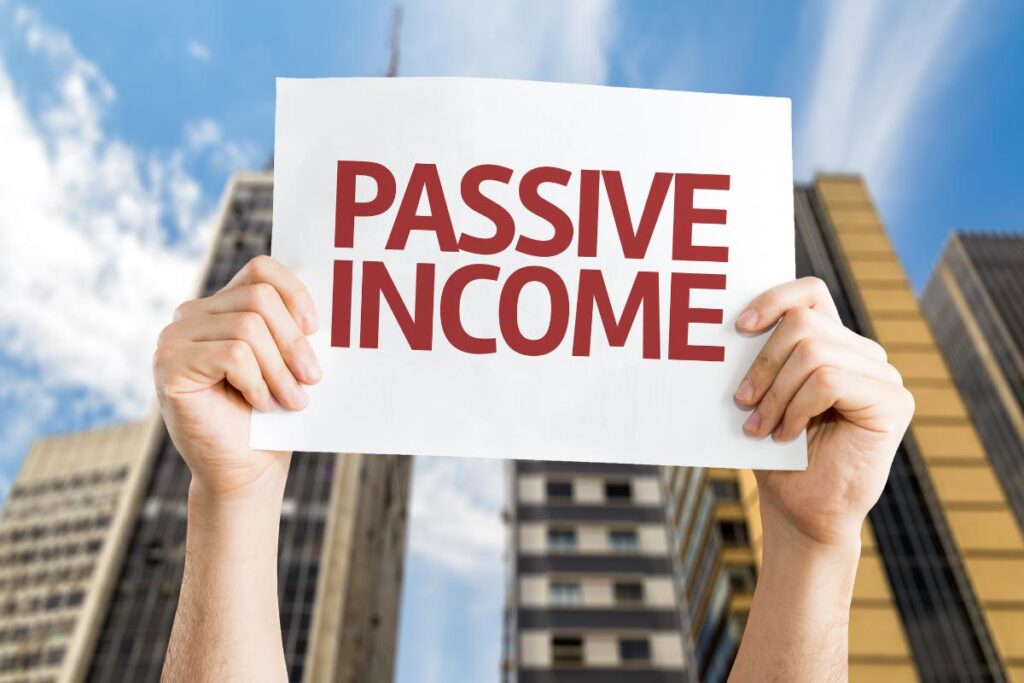
In today’s digital economy, earning passive income is no longer a pipe dream. Many professionals are now leveraging high-income skills to generate thousands of dollars each month without being tied to a traditional 9-to-5 job. With the right strategy, dedication, and knowledge, you can create a self-sustaining income stream that provides long-term financial freedom. Below, we explore the top three skills that can help you generate $5,000+ per month in passive income in 2025 and how to monetize them effectively. 1. Content Creation: Monetize Your Creativity The content industry is booming, with the global content marketing market expected to reach $107 billion by 2026. The demand for valuable and engaging content is at an all-time high, making this an ideal skill for passive income generation. Key Content Creation Skills to Learn in 2025 How to Make Passive Income with Content Creation 2. Web Design: Build and Sell Digital Assets With businesses shifting to digital platforms, web design remains a highly profitable skill. The demand for website builders, UI/UX designers, and no-code developers is skyrocketing, providing endless opportunities to earn passive income. Essential Web Design Skills for 2025 Ways to Earn Passive Income with Web Design 3. Teaching and Coaching: Share Your Expertise The e-learning industry is projected to surpass $375 billion by 2026, making online education one of the most lucrative passive income opportunities. If you have expertise in a particular field, turning that knowledge into a profitable business is easier than ever. Key Teaching and Coaching Skills for 2025 Passive Income Ideas for Teaching & Coaching Stacking These Skills for Maximum Income Instead of focusing on just one skill, consider stacking multiple passive income streams to diversify earnings. For example: By combining these skills, you can maximize income potential while reducing dependency on one revenue source. Final Thoughts: The Road to $5,000+ in Passive Income Building $5,000+ per month in passive income isn’t a get-rich-quick scheme—it requires effort, dedication, and strategic execution. However, once the initial groundwork is set, the rewards are financial freedom, flexibility, and long-term wealth generation.By learning high-demand skills, creating automated income streams, and leveraging scalable business models, you can transition from active income to earning money while you sleep.
Best Tools to Generate Free AI Images and Videos

Introduction In the era of artificial intelligence, creating stunning AI-generated images and videos has never been easier. From text-to-image tools to AI-powered video generation, numerous free platforms offer high-quality outputs without the need for technical expertise. Below, we explore the best free AI tools for generating images and videos, complete with direct links for easy access. Best Free AI Image Generators 1. Deep Dream Generator Deep Dream Generator is a powerful AI-driven image creation tool that transforms images into dreamlike, artistic visuals using neural networks. 2. Artbreeder Artbreeder allows users to create and modify images using genetic algorithms. It enables blending multiple images to produce unique artworks. 3. Runway ML Runway ML is a powerful AI-powered creative toolkit that helps users generate, edit, and animate images effortlessly. 4. Dream by Wombo Dream by Wombo is a text-to-image AI tool that transforms text prompts into stunning AI-generated artwork. 5. NightCafe Studio NightCafe Studio uses AI to generate art based on user input and multiple art styles. Best Free AI Video Generators 1. Synthesia Synthesia is an AI-powered video generator that allows users to create professional-looking videos with virtual AI avatars. 2. Lumen5 Lumen5 uses AI to transform text into engaging videos, making it perfect for content creators. 3. Pictory AI Pictory AI is an AI-powered video editing tool that can convert blog posts into engaging videos. 4. Veed.io Veed.io is an intuitive AI-based video editor that enables users to create and edit professional videos effortlessly. 5. Animoto Animoto is an easy-to-use AI-powered video maker that transforms images and clips into stunning videos. How to Choose the Best AI Tool for Your Needs When selecting an AI image or video generator, consider the following factors: Conclusion The rise of AI-powered creativity tools has revolutionized content creation. Whether you need AI-generated images or professional-quality videos, the tools listed above provide free solutions to enhance your projects. With continuous advancements in AI, these tools will only get better, offering more innovative and high-quality outputs.will only get better, offering more innovative and high-quality outputs.
AI & Automation in Digital Marketing: What’s Next?

Introduction The digital marketing landscape is evolving rapidly, and the driving force behind this transformation is Artificial Intelligence (AI) and automation. Businesses worldwide are leveraging AI-driven strategies to optimize campaigns, analyze customer data, and enhance user experiences. But what lies ahead in this AI-powered marketing era? In this article, we explore the latest trends, innovations, and future possibilities in AI and automation within digital marketing. The Role of AI in Digital Marketing Today 1. Personalization and Predictive Analytics AI has revolutionized personalization, enabling businesses to tailor content, product recommendations, and advertisements to individual users. Predictive analytics uses AI-driven insights to anticipate consumer behavior, allowing marketers to deliver relevant messaging before users even realize their needs. Brands like Amazon and Netflix have mastered AI-powered personalization, resulting in increased engagement and conversions. 2. Chatbots and Conversational AI AI-powered chatbots and virtual assistants are enhancing customer experiences by providing instant responses, 24/7 support, and seamless communication. Tools like ChatGPT, Google Bard, and IBM Watson are making interactions more human-like, improving customer satisfaction and reducing operational costs. 3. Automated Content Creation and Curation AI is changing how content is generated. Platforms like Jasper AI and Copy.ai assist marketers in creating engaging, high-quality content at scale. Automation tools analyze audience preferences and curate relevant articles, social media posts, and blog content, saving businesses time and effort. 4. Programmatic Advertising and Media Buying AI-driven programmatic advertising automates the buying and placement of digital ads, optimizing targeting, bidding, and placement in real time. Google’s AI-powered Smart Bidding adjusts bids dynamically based on user behavior, ensuring higher ROI and improved ad performance. The Future of AI & Automation in Digital Marketing 1. Hyper-Personalization Through AI-Driven Insights The future of digital marketing is hyper-personalization. AI will analyze vast amounts of data to deliver ultra-targeted content, dynamically adjusting messages based on real-time user interactions. Brands will leverage AI-powered emotion recognition and behavioral analysis to fine-tune their engagement strategies. 2. AI-Generated Video and Visual Content With the rise of video marketing, AI-generated visual content is set to dominate. Tools like Synthesia and Pictory allow brands to create realistic AI-generated videos, reducing production costs while enhancing engagement. AI-driven deepfake technology is also making waves, allowing brands to personalize video ads at scale. 3. Voice Search and AI-Powered SEO Voice search is growing exponentially, with AI-powered virtual assistants like Siri, Alexa, and Google Assistant shaping the way users search for information. Optimizing for voice search will be crucial, with marketers focusing on conversational keywords and structured data markup to improve search rankings. 4. AI-Powered Influencer Marketing AI is transforming influencer marketing by identifying the best-fit influencers for brands using data-driven insights. AI-powered analytics tools analyze engagement rates, audience demographics, and authenticity scores, ensuring brands collaborate with the most effective influencers. 5. Automated Email Marketing with AI AI is enhancing email marketing automation through predictive personalization, dynamic content recommendations, and AI-driven A/B testing. Marketers can send the right message at the right time, increasing open rates and conversions. AI-powered tools like Mailchimp and HubSpot are already utilizing these advancements. 6. Ethical AI and Privacy-First Marketing As AI grows in marketing, concerns about data privacy and ethical AI usage are becoming more prevalent. Businesses must adopt privacy-first marketing strategies, ensuring compliance with regulations like GDPR and CCPA while using AI responsibly. Conclusion: The AI-Driven Marketing Revolution The integration of AI and automation in digital marketing is redefining how brands engage with consumers. From hyper-personalization and AI-powered content to automation in customer service and advertising, the possibilities are endless. Marketers who embrace AI-driven strategies will stay ahead of the competition, unlocking new levels of efficiency, engagement, and profitability.AI is not just the future; it is the present of digital marketing. As technology advances, businesses must continuously evolve their strategies to remain relevant in an AI-powered world.
A Beginner’s Guide to Affiliate Marketing & Passive Income
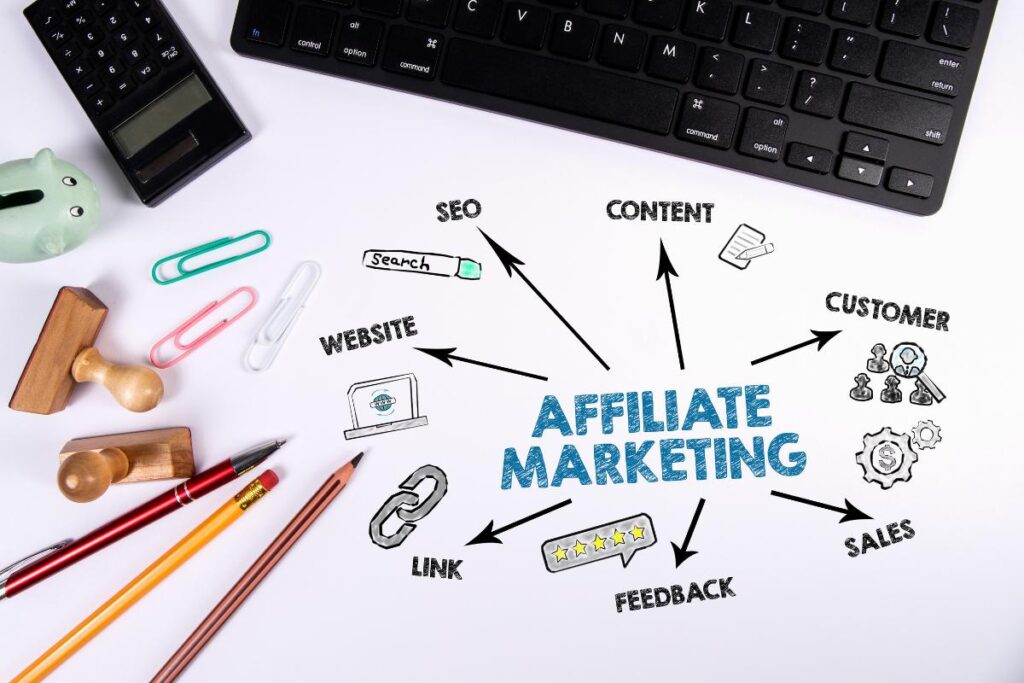
What is Affiliate Marketing? Affiliate marketing is one of the most effective ways to generate passive income online. It involves promoting products or services from a third-party company and earning a commission for each sale made through your unique affiliate link. This business model allows individuals and businesses to monetize their online presence without creating their own products. How Does Affiliate Marketing Work? Affiliate marketing follows a simple process: Why is Affiliate Marketing a Great Source of Passive Income? Affiliate marketing is an excellent way to earn passive income because, once your content is published, it can continue generating revenue for months or even years with minimal maintenance. The key benefits include: Choosing the Right Affiliate Marketing Niche Selecting the right niche is crucial for your success. Some of the most profitable affiliate marketing niches include: Best Affiliate Programs for Beginners There are numerous affiliate programs available, but some of the best ones for beginners include: How to Succeed in Affiliate Marketing To stand out in the competitive world of affiliate marketing, follow these strategies: 1. Create High-Quality Content The foundation of a successful affiliate marketing business is high-quality content. Whether you’re writing blog posts, creating videos, or sharing on social media, ensure your content is: 2. Build an Engaged Audience Building an engaged audience ensures higher conversion rates. Ways to achieve this include: 3. Master SEO for Affiliate Marketing Search engine optimization (SEO) is crucial for driving organic traffic to your affiliate content. Key SEO tactics include: 4. Use Social Proof and Reviews Consumers trust real reviews and user testimonials. To boost conversions: 5. Diversify Your Traffic Sources Relying solely on one traffic source is risky. Instead, use a mix of: Common Mistakes to Avoid in Affiliate Marketing Many beginners make critical mistakes that hinder their success. Avoid these pitfalls: How Long Does It Take to Make Money with Affiliate Marketing? Affiliate marketing is not a get-rich-quick scheme. Success depends on consistency, content quality, and marketing strategies. Generally, it can take 3 to 6 months to see small earnings and 12 to 24 months for significant passive income. Final Thoughts Affiliate marketing is a lucrative opportunity to earn passive income with minimal upfront investment. By choosing the right niche, creating valuable content, leveraging SEO, and diversifying traffic sources, you can build a sustainable and profitable affiliate business.
Use High CPC Niches – Digital Marketing is a High-Paying Niche. More US Visitors = More Earnings!
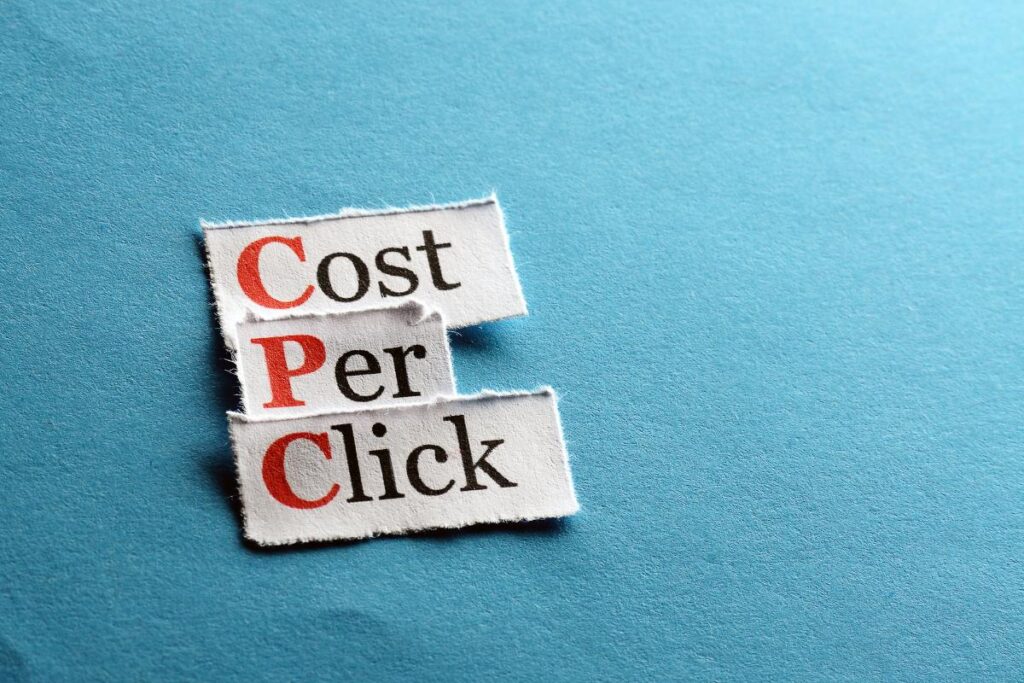
In the ever-evolving world of digital marketing, maximizing Google AdSense earnings is a top priority for content creators and marketers. One of the most effective strategies to achieve higher revenue is by targeting high CPC (Cost Per Click) niches and attracting more US visitors. The USA market offers some of the highest CPC rates, making it a lucrative avenue for publishers and advertisers alike. What is CPC and Why Does It Matter? CPC (Cost Per Click) refers to the amount advertisers are willing to pay for each click on their ads. A higher CPC means more revenue per click, directly impacting AdSense earnings. Different industries have varying CPC rates, with some niches offering exceptionally high payouts, especially in the US market. Top High CPC Niches in Digital Marketing 1. Finance and Investment ($50+ CPC) The finance industry is one of the highest-paying niches, with keywords related to loans, mortgages, insurance, and investments fetching upwards of $50 per click. Advertisers in this space are willing to pay premium rates for leads, making it an excellent niche for content creators targeting the US audience. High CPC Keywords: 2. Law and Legal Services ($60+ CPC) The legal industry is another goldmine for high CPC earnings. Law firms spend thousands of dollars on Google Ads to acquire new clients, especially for personal injury, DUI defense, and accident claims. High CPC Keywords: 3. Health and Medical ($45+ CPC) The healthcare industry is a critical sector with high advertising competition. Keywords related to health insurance, prescription drugs, and medical treatments yield significant CPC rates. High CPC Keywords: 4. Digital Marketing and Online Business ($40+ CPC) Digital marketing is a booming industry, with businesses eager to enhance their SEO, PPC, and social media strategies. Affiliate marketing, dropshipping, and paid advertising are hot topics with high CPC potential. High CPC Keywords: 5. Cryptocurrency and Blockchain ($35+ CPC) With the rise of Bitcoin, Ethereum, and NFTs, the cryptocurrency market has become one of the most competitive industries for advertising. Crypto exchanges and trading platforms invest heavily in Google Ads, driving CPC rates higher. High CPC Keywords: How to Attract More US Visitors for Higher AdSense Revenue 1. Target US-Based Keywords To increase organic traffic from the US, focus on keywords that are highly searched in the region. Use tools like Google Keyword Planner, Ahrefs, and SEMrush to identify US-centric keywords with high CPC. 2. Optimize Content for Local SEO 3. Improve Page Speed and Mobile Optimization A slow website results in high bounce rates, negatively affecting rankings and AdSense earnings. Use tools like Google PageSpeed Insights to optimize your site’s loading speed. 4. Use High-Quality Long-Form Content Google ranks in-depth, informative, and valuable content higher in search results. Aim for articles 1,500+ words that cover topics comprehensively. 5. Promote Content via Social Media and Paid Ads Leverage Facebook, LinkedIn, and Google Ads to drive targeted US traffic to your website. Running paid ad campaigns for high CPC keywords can significantly boost revenue. Final Thoughts Choosing high CPC niches and attracting US visitors can dramatically enhance your AdSense earnings. By focusing on industries like finance, law, healthcare, digital marketing, and cryptocurrency, content creators can maximize their revenue potential. Implementing effective SEO strategies, optimizing content for US audiences, and leveraging digital marketing tools can help you dominate search rankings and increase CPC earnings.
Pinterest Ads Marketing: How to Earn Money with Pinterest in the USA

Introduction to Pinterest Ads Marketing Pinterest is more than just a platform for DIY projects and inspiration boards. It is a powerful search engine that allows businesses and individuals to promote their products and services effectively. Pinterest Ads Marketing enables brands to reach millions of engaged users who are actively searching for ideas and solutions. If you’re looking to earn money with Pinterest, mastering its advertising system is essential. In this guide, we will take you through a step-by-step process of setting up Pinterest Ads and monetizing the platform effectively. Why Use Pinterest Ads? 1. High Purchase Intent Unlike social media platforms where users scroll passively, Pinterest users actively search for products, services, and ideas. This means they have a much higher intent to purchase compared to users on Facebook or Instagram. 2. Lower Competition Since Pinterest Ads are still an untapped resource for many businesses, advertising costs remain lower compared to Google and Facebook Ads. This makes it an excellent ROI-driven marketing platform. 3. Long-Term Traffic Pinterest Pins can rank for months and even years, unlike Facebook and Instagram ads that disappear once you stop paying. This means your promoted content can continue to drive traffic even after the ad campaign ends. Step-by-Step Guide to Pinterest Ads Marketing Step 1: Create a Business Account To start with Pinterest Ads, you need a Pinterest Business Account. Follow these steps: Step 2: Claim Your Website Claiming your website will allow you to access Pinterest Analytics and track the performance of your Pins. Here’s how: Step 3: Set Up Pinterest Tag A Pinterest Tag helps track website activity and ad performance. To set it up: Step 4: Define Your Target Audience Pinterest allows precise targeting based on: Step 5: Choose the Right Ad Format Pinterest offers multiple ad formats based on your campaign goals: Step 6: Create an Effective Pinterest Ad To ensure high engagement and conversions, follow these best practices: Step 7: Set Your Budget and Bidding Strategy Pinterest allows flexible budgeting options: Step 8: Monitor and Optimize Your Ads Once your ad is live, track its performance using Pinterest Analytics: Optimize your ads by: How to Earn Money with Pinterest 1. Affiliate Marketing Pinterest allows direct affiliate links in Pins. Simply: 2. Selling Digital Products Pinterest is an excellent platform for promoting e-books, courses, and templates. 3. Dropshipping & E-Commerce Run a Pinterest Ads campaign to drive traffic to your online store. Best niches: 4. Offer Pinterest Marketing Services Many businesses need Pinterest experts to manage their accounts. You can: 5. Blogging & Monetization Pinterest is a huge traffic source for bloggers. Steps to earn: Conclusion Pinterest Ads Marketing is an untapped goldmine for businesses and individuals looking to monetize their content. Whether you are an affiliate marketer, blogger, or e-commerce seller, Pinterest Ads can help you generate sustainable income with high engagement and low ad costs. Start leveraging Pinterest today and watch your revenue grow!
Pinterest & Quora Marketing – Answer Relevant Questions with Blog Links

In today’s digital landscape, leveraging Pinterest and Quora for marketing can significantly boost brand visibility, drive traffic, and improve engagement. These platforms are highly effective for content marketing, allowing businesses to establish authority, generate leads, and attract high-quality traffic. Below, we dive deep into actionable strategies for effectively marketing on both platforms. Why Use Pinterest and Quora for Marketing? Pinterest is a powerful visual discovery engine, making it perfect for businesses that rely on compelling images, infographics, and visual storytelling. With over 400 million monthly active users, Pinterest is an excellent tool for driving long-term, organic traffic to websites. Quora, on the other hand, is a question-and-answer platform where users seek expert advice. With over 300 million users per month, Quora offers a great opportunity to position your brand as an authority in your niche by answering relevant questions and linking back to your blog posts. How to Effectively Use Pinterest for Marketing 1. Optimize Your Pinterest Profile Your Pinterest profile is the first thing users see. Make sure it is optimized by: 2. Create Eye-Catching Pins The quality of your Pins determines your success on Pinterest. To maximize engagement: 3. Use SEO-Rich Descriptions Pinterest functions as a search engine, so using keywords in your pin descriptions and board titles can significantly improve visibility. Always: 4. Join and Create Pinterest Boards 5. Leverage Rich Pins Rich Pins pull additional information from your website and enhance your content’s credibility. Enable them to display details like product prices, article descriptions, and recipe ingredients. 6. Schedule Pins for Consistency Use Pinterest scheduling tools like Tailwind to automate pinning and maintain a consistent presence. How to Use Quora for Marketing 1. Optimize Your Quora Profile Before you start answering questions, make sure your profile stands out: 2. Find the Right Questions to Answer Targeting the right questions increases the effectiveness of your marketing efforts. Use these strategies: 3. Write High-Quality, Value-Driven Answers Your answers should be detailed, informative, and engaging. To make them stand out: 4. Add Blog Links Naturally While answering, strategically place links to your blog content to drive traffic. Ensure: 5. Engage with Other Users Best Practices for Using Blog Links on Pinterest & Quora 1. Create Blog-Specific Pins and Quora Answers Each blog post should have custom-designed Pinterest pins and Quora answers tailored to its topic. This ensures a cohesive content marketing strategy. 2. Use a Call-to-Action (CTA) Encourage readers to click your links by using strong CTAs like: 3. Track Performance and Optimize Use Google Analytics and Pinterest Analytics to track which pins and Quora answers are driving traffic. Optimize by: Final Thoughts Using Pinterest and Quora for marketing is a powerful way to boost website traffic, establish authority, and increase engagement. By answering relevant questions with valuable insights and linking to your blog, you can drive highly targeted organic traffic and grow your brand’s online presence effectively.
Influencer Marketing: How Brands Are Leveraging Social Media Stars

Introduction In today’s digital landscape, influencer marketing has emerged as one of the most powerful strategies for brands to connect with their target audiences. With billions of users engaging daily on platforms like Instagram, TikTok, and YouTube, brands are increasingly partnering with social media influencers to drive awareness, engagement, and sales. This article explores how brands leverage social media stars to enhance their marketing strategies, boost ROI, and establish credibility in a crowded marketplace. What is Influencer Marketing? Influencer marketing is a form of social media marketing that involves collaborating with individuals who have a significant online following and strong audience engagement. These influencers, often experts or trendsetters in their niches, help brands reach highly targeted audiences by promoting products or services authentically. Why Brands Are Investing in Influencer Marketing 1. Higher Engagement and Authenticity Unlike traditional advertisements, influencer marketing thrives on authenticity. Consumers trust recommendations from people they follow and admire. According to a recent study, 92% of consumers trust influencers more than traditional advertisements. 2. Access to Niche Audiences Social media influencers cater to specific audiences, allowing brands to tap into niche markets. Whether it’s fitness, beauty, gaming, or technology, influencers provide direct access to engaged followers who are genuinely interested in the promoted products. 3. Improved ROI and Cost-Effectiveness Compared to conventional advertising methods, influencer marketing often delivers a higher return on investment (ROI). A study by Influencer Marketing Hub found that brands earn an average of $5.20 for every $1 spent on influencer marketing. 4. Increased Social Proof and Brand Awareness Consumers are more likely to purchase a product when they see someone they trust using it. By leveraging social proof, influencer marketing helps brands establish credibility and expand their reach organically. Types of Influencers Brands Work With 1. Mega Influencers (1M+ Followers) These are celebrities or high-profile individuals with millions of followers. Brands collaborate with them for large-scale campaigns, though engagement rates may be lower due to their vast audience. 2. Macro Influencers (100K–1M Followers) Macro influencers have substantial reach and high engagement levels. They are often industry experts, vloggers, or popular social media personalities. 3. Micro Influencers (10K–100K Followers) Micro influencers have smaller, more dedicated followings and higher engagement rates. Their recommendations feel more personal and trustworthy, making them ideal for targeted marketing. 4. Nano Influencers (1K–10K Followers) These influencers have a close-knit community of followers and often generate the highest engagement rates. Brands targeting hyper-niche audiences find nano influencers highly effective. Effective Influencer Marketing Strategies for Brands 1. Defining Goals and KPIs Before launching a campaign, brands must establish clear objectives. Common goals include: 2. Choosing the Right Influencer Selecting influencers aligned with a brand’s values and audience is crucial. Key factors to consider include: 3. Crafting Compelling Campaigns Successful influencer campaigns include creative, engaging, and authentic content. Common campaign types include: 4. Leveraging Multiple Platforms Each social media platform caters to different types of content and audiences. Brands should strategically choose platforms based on campaign goals: 5. Tracking Performance and Analytics Measuring the success of an influencer campaign is essential. Brands should track: Tools like Google Analytics, Facebook Insights, and influencer marketing platforms help brands evaluate their campaign effectiveness. Case Studies: Successful Influencer Marketing Campaigns 1. Daniel Wellington’s Influencer Strategy Swedish watch brand Daniel Wellington built its brand almost entirely through influencer marketing. By collaborating with micro influencers on Instagram, they created a viral trend that significantly increased sales and brand recognition. 2. Gymshark’s Growth via Fitness Influencers Gymshark, a leading fitness apparel brand, leveraged fitness influencers and YouTubers to create an engaged fitness community, resulting in millions of dollars in revenue and brand loyalty. 3. Fenty Beauty’s Inclusive Influencer Approach Fenty Beauty, founded by Rihanna, partnered with influencers of various ethnicities and skin tones to promote its inclusive makeup range. The strategy led to massive sales and a strong, diverse customer base. The Future of Influencer Marketing With AI-driven analytics, virtual influencers, and increasing demand for authenticity, influencer marketing is evolving rapidly. Trends to watch include: Conclusion Influencer marketing has transformed the way brands connect with consumers. By partnering with the right influencers, creating engaging content, and leveraging data-driven strategies, businesses can achieve remarkable success. As the digital landscape continues to evolve, staying ahead of trends and optimizing campaigns will be key to sustained growth.
How to Run Google Ads from India for Any Campaign Targeting the USA and Other Countries
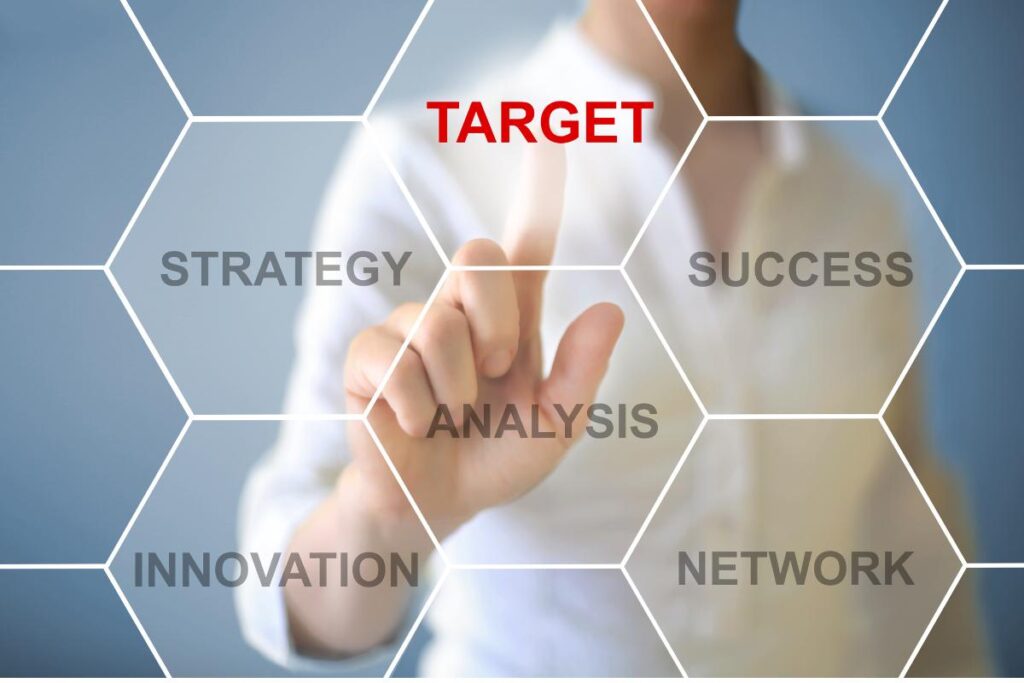
In today’s digital era, Google Ads has emerged as a crucial tool for businesses looking to expand their reach beyond borders. Many advertisers in India want to run campaigns targeting audiences in the USA and other countries, but they often face challenges related to account setup, billing, optimization, and compliance with Google’s policies. In this comprehensive guide, we will walk you through the exact steps required to successfully run Google Ads from India for campaigns targeting international markets, ensuring optimal performance and compliance. 1. Setting Up Your Google Ads Account To start running Google Ads targeting the USA, follow these steps: Choosing the Right Google Ads Account Type 2. Configuring Campaign Settings for USA Targeting a. Selecting the Right Campaign Type When running Google Ads from India targeting the USA, it’s crucial to select the appropriate campaign type: b. Setting the Right Geographic Targeting c. Setting the Correct Time Zone 3. Payment and Billing Methods for Google Ads in India One of the major concerns advertisers face is how to pay for Google Ads in India while targeting the USA. Google Ads supports multiple payment methods: a. Prepaid (Manual Payment) b. Postpaid (Automatic Payment) c. Credit Line from Google Pro Tip: To avoid payment issues, use an international debit/credit card or a Google Ads VCC (Virtual Credit Card) from providers like Entropay or Payoneer. 4. Optimizing Google Ads for Better Results in the USA a. Keyword Research for USA Audience b. Ad Copy and Language Preferences c. Ad Extensions for Better CTR 5. Complying with Google Ads Policies To avoid account suspensions or disapprovals, follow these best practices: 6. Using Google Ads VPN for Running Ads in the USA If you want to manage ads as if you were in the USA, consider using a premium VPN: 7. Tracking and Measuring Campaign Performance To improve your Google Ads performance targeting the USA, use these tracking tools: a. Google Analytics Integration b. Conversion Tracking Setup c. A/B Testing for Better Performance Conclusion Running Google Ads from India targeting the USA requires proper setup, payment optimization, ad customization, and compliance. By following the strategies outlined in this guide, you can successfully reach USA audiences, maximize conversions, and scale your business globally.For further insights, continue exploring advanced strategies and take your digital marketing success to the next level!
How to Run Facebook Ads from India for Any Campaign Targeting the USA and Other Countries
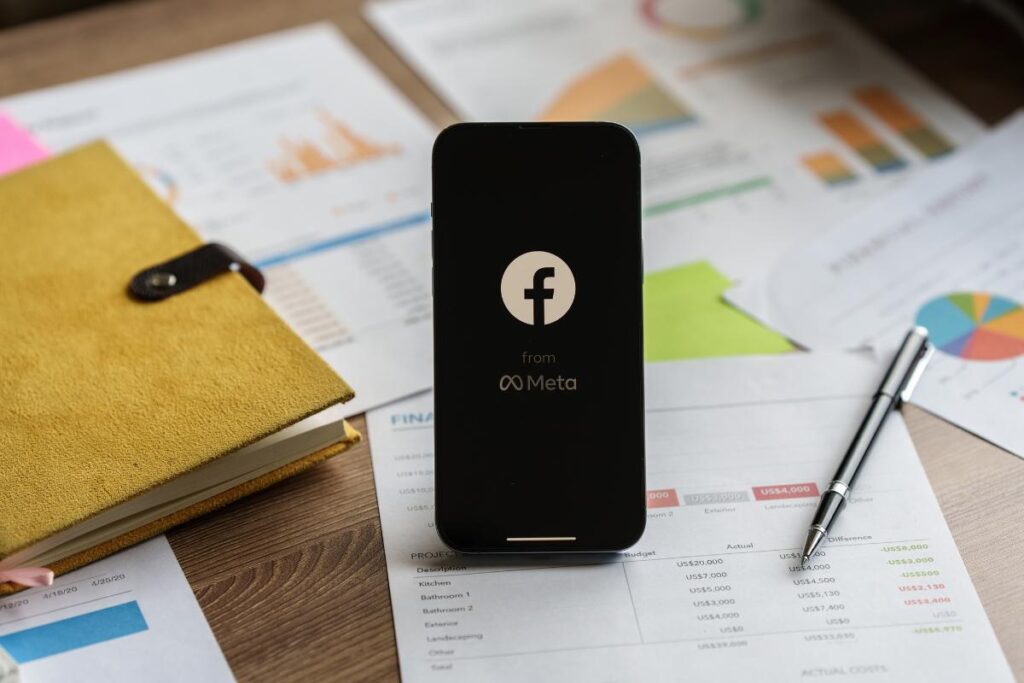
Introduction Running Facebook Ads from India to target the USA and other countries can be a highly effective strategy for businesses looking to expand their reach globally. However, setting up an ad campaign for an international audience requires a well-thought-out strategy to ensure the best return on investment (ROI). In this guide, we will walk you through how to set up and optimize Facebook Ads from India while targeting users in the USA and other foreign markets. 1. Setting Up Your Facebook Business Manager Before launching an ad campaign, you need a Facebook Business Manager account. This tool helps manage multiple ad accounts, pages, and users efficiently. Steps to Set Up Facebook Business Manager: 2. Creating an Ad Account with Correct Billing Details Since you are running ads from India targeting the USA, it is essential to configure the correct currency and payment method. Steps to Configure Billing for International Ads: Pro Tip: Use a credit card that provides international transaction benefits to reduce additional charges. 3. Selecting the Right Campaign Objective Facebook offers multiple campaign objectives based on your business goals. If your target audience is in the USA, you need to choose the objective wisely. Popular Campaign Objectives for USA Targeting: Choosing the right campaign type will directly impact your ad performance and cost-effectiveness. 4. Defining Your Target Audience A well-defined target audience ensures that your ads reach the right people in the USA. Key Targeting Parameters: Pro Tip: Use Facebook Audience Insights to analyze and refine your target audience for improved ad performance. 5. Ad Creative Best Practices for the USA Audience Since cultural preferences differ across countries, you need to tailor your ad creatives accordingly. Tips for Effective Ad Creatives: 6. Setting the Right Budget & Bidding Strategy Budgeting for International Campaigns: Pro Tip: Avoid making frequent budget changes, as it can reset the learning phase of your ads. 7. Choosing the Best Ad Placement Facebook allows ads to be displayed on multiple placements, including Facebook Feed, Instagram, Audience Network, and Messenger. Recommended Ad Placements for USA Campaigns: Using Automatic Placements initially can help Facebook optimize delivery for the best performance. 8. Analyzing & Optimizing Your Ad Campaigns Tracking and optimizing your ad performance is crucial to achieving high ROI. Key Metrics to Monitor: Optimization Strategies: Conclusion Running Facebook Ads from India for targeting the USA requires a deep understanding of audience segmentation, ad creatives, budgeting, and optimization techniques. By following the best practices mentioned in this guide, businesses can maximize their ad performance, lower acquisition costs, and achieve significant results in the international market.For those looking to scale their Facebook Ads strategy, continuous testing and optimization will play a key role in long-term success.
How to Optimize Product Listings for Higher Sales on Amazon USA
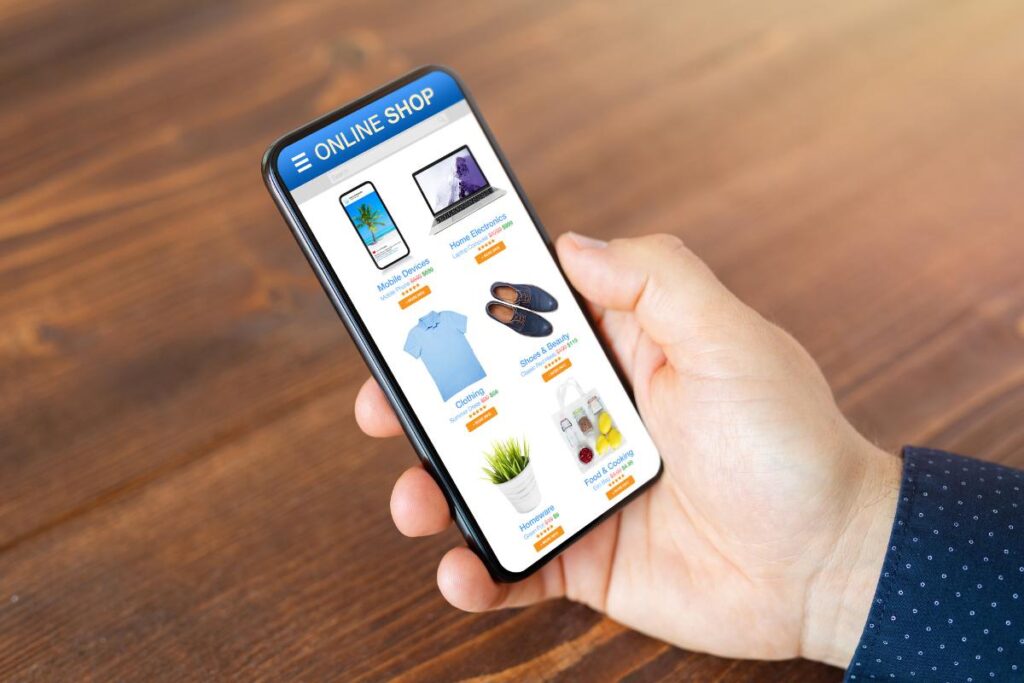
Amazon is the largest eCommerce platform in the world, and competition is fierce. If you want to maximize sales, optimizing your product listings is crucial. A well-optimized listing increases visibility, improves conversion rates, and boosts rankings on Amazon’s search results. Here’s a comprehensive guide to optimizing Amazon product listings for higher sales in the USA market. 1. Conduct In-Depth Keyword Research To ensure your product reaches the right audience, thorough Amazon SEO keyword research is essential. Use tools like Helium 10, Jungle Scout, and MerchantWords to find high-volume, relevant keywords. 2. Optimize Product Titles for Maximum Visibility Amazon’s algorithm heavily weighs product titles, so they must be keyword-rich and compelling. Best Practices for Amazon Product Titles: Example of an Optimized Title: ✅ “Wireless Noise-Canceling Bluetooth Headphones – 40H Playtime, Hi-Fi Stereo, Deep Bass, Over-Ear, Built-in Mic – Black” 3. Craft a High-Converting Product Description Your product description should be persuasive and informative. It must convince potential buyers why your product is the best choice. Key Elements of a Winning Product Description: 4. Optimize Bullet Points for Readability and Conversions Amazon allows up to five bullet points in most categories. This section is crucial for helping customers quickly scan key product benefits. Best Practices for Bullet Points: 5. Use High-Quality Images and Videos Amazon’s guidelines recommend at least six high-resolution images. Images play a huge role in conversions because customers rely on visuals when shopping online. Image Optimization Tips: 6. Leverage A+ Content (Enhanced Brand Content – EBC) If you are a brand-registered seller, take advantage of A+ Content (EBC). This feature allows you to use rich media, enhanced images, comparison charts, and brand storytelling to create visually appealing listings. Benefits of A+ Content: 7. Optimize Back-End Search Terms Amazon provides a back-end search terms field where sellers can insert additional keywords that don’t appear on the front end of the listing. Guidelines for Backend Keywords: 8. Price Competitively to Increase Sales Pricing plays a significant role in both search rankings and conversion rates. Amazon Pricing Strategies: 9. Encourage Positive Reviews and Ratings Amazon’s algorithm favors products with higher ratings and more reviews. Encourage satisfied customers to leave reviews. How to Get More Reviews: 10. Optimize for Amazon PPC (Pay-Per-Click) Advertising If you want to boost product visibility quickly, Amazon PPC advertising is a powerful tool. Amazon PPC Best Practices: 11. Utilize Amazon FBA for Better Conversion Rates Amazon’s Fulfillment by Amazon (FBA) program increases the chances of winning the Buy Box and improves shipping reliability. Benefits of Amazon FBA: Final Thoughts Optimizing your Amazon product listings requires a strategic approach. By implementing keyword-rich titles, high-quality images, A+ content, optimized descriptions, and PPC advertising, you can increase visibility, drive sales, and outrank competitors. Start optimizing your listings today to maximize your success on Amazon USA!
How to Master TikTok Ads for E-Commerce in 2025: A Guide for USA Businesses

TikTok has become an e-commerce powerhouse in recent years, providing businesses with unprecedented access to a highly engaged audience. By 2025, USA businesses leveraging TikTok ads effectively will dominate the online shopping space. With its sophisticated algorithm, interactive ad formats, and viral potential, TikTok offers endless possibilities for brands looking to maximize their ROI. This guide will help you master TikTok advertising strategies to ensure your e-commerce business thrives in 2025. Why TikTok Ads Are Crucial for E-Commerce Growth in 2025 TikTok is not just a social media app anymore—it has evolved into a full-fledged e-commerce marketplace. With more than 150 million active users in the USA alone, businesses cannot afford to ignore this platform. TikTok’s unique features, such as TikTok Shop, in-app purchases, and live shopping events, make it the perfect environment for brands to drive conversions. Key Benefits of TikTok Ads for E-Commerce: Best TikTok Ad Strategies for E-Commerce in 2025 1. Utilize TikTok’s Advanced Ad Formats TikTok continuously updates its advertising options, providing businesses with new ways to capture audience attention. Understanding these formats will be crucial for success in 2025. 2. Leverage Authentic and Trend-Based Content TikTok thrives on authenticity and trends. Creating content that feels native to the platform is key. 3. Master TikTok’s Algorithm to Boost Ad Performance To maximize ad effectiveness, businesses must align with TikTok’s algorithm. 4. Optimize Audience Targeting for Maximum ROI TikTok Ads Manager provides precise targeting options, making it easier to reach your ideal audience. 5. Tap Into TikTok Shop and Live Shopping Trends By 2025, TikTok will be an e-commerce-first platform. Integrating TikTok Shop and live shopping into your ad strategy is a must. 6. Track Key Metrics and Optimize Campaigns TikTok’s analytics tools provide valuable insights into campaign performance. To stay ahead in 2025, data-driven decision-making is crucial. Emerging TikTok E-Commerce Trends to Watch in 2025 1. AI-Powered Ad Creation TikTok is likely to introduce AI-driven tools to help businesses create high-performing ads efficiently. 2. Augmented Reality (AR) Shopping Brands can expect AR shopping experiences where users can try on products virtually before purchasing. 3. Social Commerce & Community Building Businesses will need to focus on building communities, not just selling products. 4. Sustainability & Ethical Marketing Eco-conscious consumers will prefer brands that promote sustainability and ethical business practices. Final Thoughts Mastering TikTok ads for e-commerce in 2025 requires a combination of creativity, data-driven decisions, and trend awareness. With the right strategies, audience targeting, and content creation, businesses can drive massive sales and build a loyal customer base.Start implementing these strategies today and position your brand for unmatched success in the world of TikTok e-commerce.
Google Ads Retargeting Strategies for Maximum Conversions

Introduction In the competitive landscape of digital marketing, Google Ads retargeting has emerged as a powerful strategy to boost conversions, increase brand awareness, and re-engage potential customers who have previously interacted with your website. By leveraging Google’s robust retargeting tools, businesses can strategically position their ads in front of high-intent users, ensuring a higher probability of conversion. What is Google Ads Retargeting? Google Ads retargeting (also known as remarketing) is a digital marketing strategy that enables advertisers to re-engage users who have visited their website but didn’t complete a desired action (such as making a purchase, signing up, or downloading an eBook). By using cookies and tracking pixels, businesses can display targeted ads to these users across Google’s Display Network (GDN), YouTube, Gmail, and even search results. Why is Google Ads Retargeting Crucial for Digital Marketing Success? Top Google Ads Retargeting Strategies for Maximum Conversions 1. Segment Your Audience for Precision Targeting Not all visitors have the same intent. By segmenting your audience, you can create custom retargeting lists based on their behavior and interaction levels. Some effective segmentation methods include: 2. Utilize Dynamic Retargeting for Personalized Ads Dynamic retargeting is a more advanced technique that enables businesses to show highly personalized ads based on past interactions. This is particularly effective for eCommerce stores. 3. Set Up Google Ads Remarketing Lists for Search Ads (RLSA) Remarketing Lists for Search Ads (RLSA) allows businesses to customize search ad campaigns for users who have previously visited their website. 4. Leverage YouTube & Gmail Retargeting for Maximum Exposure Expanding your retargeting efforts beyond traditional search and display networks can help reinforce brand awareness. 5. Implement Frequency Capping to Avoid Ad Fatigue One of the biggest mistakes in Google Ads retargeting is overwhelming users with excessive ads. To prevent ad fatigue and banner blindness, use frequency capping to limit the number of times your ads appear to the same user within a specified period. 6. Exclude Converted Users to Optimize Ad Spend Avoid wasting budget by ensuring converted users do not keep seeing the same retargeting ads. 7. Use Compelling Ad Copy and Strong CTAs Your retargeting ads need to stand out. Use persuasive ad copy with strong calls-to-action (CTAs) that entice users to return and convert. 8. Optimize Landing Pages for Retargeted Traffic A retargeting campaign is only as effective as the landing page experience it leads to. Ensure that: 9. A/B Test Different Retargeting Ad Variations Regularly testing different ad creatives, messaging, and formats can significantly improve retargeting performance. Test: 10. Monitor Performance & Continuously Optimize Finally, continuously analyze and adjust your Google Ads retargeting campaigns to maximize conversions. Conclusion Google Ads retargeting is an essential strategy for maximizing conversions and improving return on investment (ROI). By implementing segmented audience targeting, dynamic retargeting, RLSA, and cross-channel remarketing, businesses can effectively re-engage potential customers and drive more sales. To achieve optimal results, it’s crucial to continually test, optimize, and refine your campaigns.
Drive High-Traffic from the USA – More US Visitors = More Earnings!

In the digital world, website traffic is the lifeblood of online success. If you are looking to increase website traffic from the USA, you are on the right track to maximizing your earnings. The United States boasts a massive online audience with high purchasing power, making it an ideal target for businesses, bloggers, and content creators. In this guide, we will explore proven strategies to drive high-quality US traffic to your website and convert visitors into revenue. Why US Traffic Matters for Your Website? The United States is home to one of the largest and most engaged online audiences in the world. Here’s why focusing on US visitors can significantly boost your earnings: Proven Strategies to Drive High-Traffic from the USA 1. Optimize for US-Based SEO Keywords To rank higher on Google and attract US visitors, you need to optimize your website for US-focused keywords. Here’s how: 2. Create US-Centric Content Your content must resonate with American audiences to keep them engaged. Some effective content strategies include: 3. Leverage Social Media for US Traffic Social media is a goldmine for driving high-quality traffic from the USA. Here’s how you can use different platforms effectively: 4. Run Geo-Targeted Paid Ads Paid advertising is one of the fastest ways to attract US visitors. Here’s what works best: 5. Build US-Based Backlinks Backlinks from US-based websites improve your domain authority and search rankings. Here’s how to get them: 6. Optimize for Mobile and Voice Search With more Americans using mobile devices and voice assistants, optimizing for these platforms is crucial: 7. Target US-Based Email Subscribers Email marketing remains one of the most powerful tools for driving repeat traffic from the USA. Best practices include: 8. Use Local SEO to Attract US Audiences If your website serves a specific location in the USA, local SEO is a game-changer. Optimize by: Conclusion: More US Traffic = More Earnings! Driving high-quality traffic from the USA is the key to maximizing your website’s earnings. By implementing these strategies, you can attract engaged American visitors, boost conversions, and generate more revenue from advertising, affiliate marketing, and sales.
User Intent SEO: Why Google Prefers Helpful Content Over Keywords
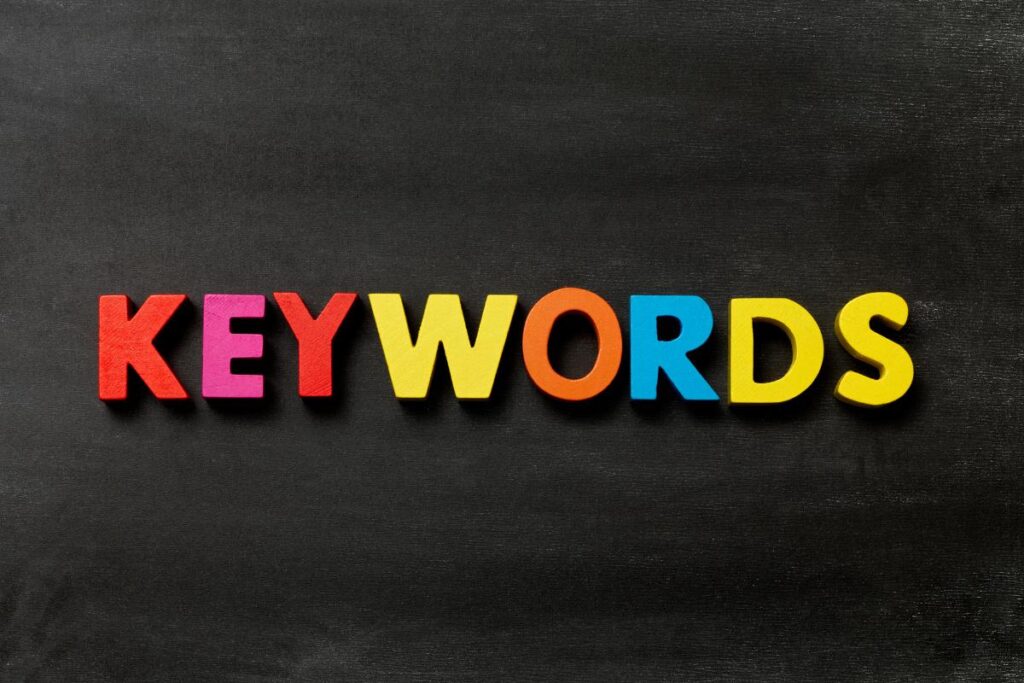
In the ever-evolving landscape of SEO (Search Engine Optimization), Google continues to refine its algorithms to prioritize user intent over keyword stuffing. While keywords remain essential, search engines have shifted their focus to helpful, informative, and engaging content that provides real value to users. This shift underscores the importance of crafting high-quality, intent-driven content that aligns with Google’s evolving ranking criteria. Understanding User Intent: The Key to SEO Success User intent refers to the purpose behind a user’s search query. Instead of merely focusing on keywords, Google aims to understand what the user truly wants and deliver results that best satisfy that intent. There are four primary types of user intent: Understanding and aligning content with user intent is crucial to higher rankings and better engagement. Why Google Prefers Helpful Content Over Keywords 1. Google’s Helpful Content Update Google’s Helpful Content Update prioritizes content written for humans, not just search engines. This update penalizes low-value, keyword-stuffed pages and promotes content that is original, in-depth, and satisfies user queries. 2. Semantic Search & NLP (Natural Language Processing) With advancements in AI and NLP, Google can now understand context, synonyms, and search intent. Instead of just scanning for exact-match keywords, Google analyzes the entire context of the content to determine relevance. 3. User Engagement Metrics Matter More Google measures engagement through metrics like dwell time, bounce rate, and click-through rate (CTR). If a page provides real value, users spend more time on it, signaling to Google that the content is useful and relevant. 4. Authority and Expertise Win Google favors content that showcases Expertise, Authoritativeness, and Trustworthiness (E-A-T). Well-researched, expert-written articles rank higher than keyword-stuffed, generic posts. How to Create Helpful, User-Centric Content That Ranks 1. Focus on Solving Problems Instead of stuffing content with keywords, address real user pain points. For example, rather than writing a generic article on “SEO tips,” create a step-by-step guide on “How to Rank #1 on Google in 2024.” 2. Use Conversational and Engaging Language Content should be written in a natural, conversational tone that resonates with readers. Avoid robotic, keyword-stuffed sentences and instead focus on providing genuine value. 3. Optimize for Featured Snippets & People Also Ask Google often pulls concise, informative answers into Featured Snippets and “People Also Ask” sections. Use structured headings, bullet points, and clear explanations to improve chances of being featured. 4. Write Comprehensive, Well-Structured Content Long-form, detailed articles tend to perform better. Ensure your content: 5. Optimize for User Experience (UX) and Readability A great user experience leads to better engagement and rankings. Ensure your content: 6. Use Natural Keyword Placement Instead of forcing keywords, integrate them organically within the content. Focus on long-tail keywords and variations that match natural user queries. 7. Keep Content Updated and Relevant Google rewards fresh, updated content. Regularly update old posts with new statistics, trends, and insights to maintain relevance. The Future of SEO: Content That Truly Helps Users As Google continues to refine its algorithms, SEO is shifting from keyword manipulation to genuine content quality. The websites that prioritize user intent, create high-value content, and provide a seamless user experience will dominate the search rankings.By understanding user behavior, leveraging structured content, and focusing on engagement, businesses can achieve sustainable SEO success in 2025 and beyond.
The Psychology of Colors: How It Affects Online Conversions

Introduction In the digital landscape, color psychology plays a pivotal role in shaping user perceptions, emotions, and behaviors. Businesses and marketers leverage the power of colors to enhance brand identity, drive engagement, and ultimately, increase online conversions. Every color evokes a different response, and understanding these nuances can be the key to optimizing your website for better user experience and higher sales. The Science Behind Color Psychology Color psychology is deeply rooted in human cognition and emotions. Studies suggest that colors have a direct impact on decision-making and can influence how users interact with websites. The right color scheme can attract attention, instill trust, and even prompt impulse purchases. Neuroscientific research reveals that color processing occurs in the brain?s visual cortex, affecting emotional responses and consumer behavior. Color can increase brand recognition by up to 80%, which directly impacts conversion rates. How Different Colors Influence Consumer Behavior 1. Red – The Color of Urgency and Passion Red is a high-energy color associated with urgency, passion, and excitement. It is often used in clearance sales, call-to-action buttons, and limited-time offers to encourage quick decision-making. Companies like Coca-Cola and Netflix use red to create a sense of excitement and urgency. 2. Blue – Trust, Security, and Reliability Blue is widely used by financial institutions, healthcare brands, and social media platforms like Facebook, LinkedIn, and PayPal. It evokes a sense of trust, stability, and calmness, making it an excellent choice for businesses that require a high level of consumer confidence. 3. Green – Nature, Health, and Growth Green symbolizes health, nature, and prosperity. It is often used in eco-friendly brands, organic products, and financial services. Companies like Whole Foods and Starbucks use green to represent sustainability and a positive, fresh experience. 4. Yellow – Optimism and Attention-Grabbing Yellow is a cheerful and energetic color that grabs attention quickly. It is commonly used in fast-food chains and promotional banners. Brands like McDonald’s and Snapchat use yellow to evoke happiness and enthusiasm. 5. Black – Luxury, Elegance, and Sophistication Black is a powerful color that signifies luxury, exclusivity, and authority. High-end brands like Chanel, Louis Vuitton, and Apple use black to convey sophistication and premium quality. 6. Orange – Excitement and Call to Action Orange blends the energy of red and the cheerfulness of yellow. It is used in call-to-action buttons and entertainment industries to create a sense of fun and enthusiasm. Brands like Amazon and Nickelodeon utilize orange to capture user attention. 7. Purple – Creativity and Royalty Purple represents luxury, creativity, and wisdom. It is often used in beauty and wellness industries. Brands like Cadbury and Hallmark use purple to appeal to an audience that values creativity and exclusivity. Using Colors to Optimize Online Conversions 1. Choosing the Right CTA Colors Your call-to-action (CTA) buttons are crucial for conversions. Research suggests that contrasting CTA colors increase conversion rates significantly. For example, red and orange buttons create urgency, while green and blue buttons promote trust and reliability. 2. Color Contrast for Readability Readability is key to keeping visitors engaged. High contrast between text and background ensures better readability. For example, black text on a white background is easier to read than dark gray on black. 3. Gender-Based Color Preferences Men and women have different color preferences, which can influence website design choices. Studies indicate that men prefer blue, black, and green, while women favor purple, blue, and green. Avoid colors like brown and orange when targeting a female audience. 4. Cultural Color Meanings Different cultures associate colors with unique meanings. For example: 5. Emotional Triggers and Branding Your brand’s color scheme should align with its core values and messaging. For instance: Case Studies on Color Psychology in Marketing Case Study 1: A/B Testing with Button Colors A study by HubSpot tested red and green CTA buttons on a website. The red button outperformed the green one by 21% in conversions, proving that color plays a crucial role in decision-making. Case Study 2: McDonald’s and Color Psychology McDonald’s uses a combination of red and yellow, which subconsciously encourages fast eating and happiness. This strategy ensures high customer turnover and repeat visits. Case Study 3: Facebook’s Blue Theme Facebook?s dominant blue color scheme is designed for trust and engagement. Since blue is also known to be less straining on the eyes, it keeps users on the platform for longer periods. Best Practices for Implementing Color Psychology in Web Design 1 Keep It Simple ? Avoid using too many colors, which can overwhelm users. 2 Use Complementary Colors ? Ensure harmony in your color palette for a professional look. 3 Prioritize Accessibility ? Make sure colorblind users can navigate your site effectively. 4 Test and Optimize ? Conduct A/B tests to determine the best color choices for your audience. Final Thoughts The psychology of colors is a powerful tool that can dramatically affect online conversions. By understanding how different colors impact consumer behavior, businesses can create visually compelling websites that drive engagement, build trust, and boost conversion rates.
The Rise of AI in Content Creation: Will Writers Be Replaced?

Introduction The rapid evolution of Artificial Intelligence (AI) in content creation is reshaping the digital landscape. AI-powered tools are now capable of generating high-quality content at unprecedented speeds, raising a crucial question: Will human writers be replaced? As AI continues to develop, its impact on content creation is undeniable. However, while AI can produce content efficiently, the human touch remains irreplaceable in certain aspects. In this article, we delve into the rise of AI in content creation, its advantages and limitations, and what the future holds for human writers. The Emergence of AI in Content Creation The integration of AI in writing has been accelerated by advanced machine learning algorithms and natural language processing (NLP) models such as GPT-4 and ChatGPT. These AI tools can write blogs, create ad copies, generate reports, and even produce creative stories. Companies are increasingly leveraging AI to automate content generation, reduce costs, and improve efficiency. Some of the most popular AI-driven writing tools include: How AI is Transforming Content Creation 1. Speed and Efficiency AI can generate thousands of words in seconds, making it an invaluable tool for businesses that require large-scale content production. Whether it is creating product descriptions or blog posts, AI ensures quick turnaround times. 2. SEO Optimization AI-driven writing tools are designed to incorporate SEO best practices, making content more likely to rank on Google. Features such as keyword analysis, topic clustering, and meta tag optimization help improve search engine visibility. 3. Cost-Effective Solution Hiring a team of writers can be expensive. AI provides a cost-effective alternative, allowing businesses to allocate resources to other areas while maintaining a consistent content output. 4. Personalization and Data-Driven Content AI analyzes user behavior, preferences, and trends to create highly personalized content. This enables businesses to tailor their messaging for specific audiences, increasing engagement and conversion rates. Limitations of AI in Content Writing While AI presents numerous advantages, it still has limitations that prevent it from fully replacing human writers. 1. Lack of Creativity and Emotional Depth AI lacks genuine emotions, experiences, and intuition, which are crucial for storytelling, persuasive writing, and deeply engaging content. While AI can mimic styles, it cannot replace human creativity and emotional intelligence. 2. Quality and Accuracy Issues Despite advancements, AI sometimes generates misleading, incorrect, or repetitive content. It struggles with complex topics that require critical thinking and expert analysis. 3. Ethical Concerns and Originality AI-generated content raises concerns about plagiarism and authenticity. Google’s algorithms favor original, well-researched content, making human-written content more valuable in the long run. 4. Limited Understanding of Context AI struggles with nuanced topics, cultural references, and subjective opinions. It often requires human intervention to refine and adjust content for better accuracy and relevance. Will AI Replace Human Writers? While AI is undoubtedly transforming the content creation landscape, it is unlikely to completely replace human writers. Instead, it will serve as a powerful assistant, enhancing efficiency while allowing writers to focus on strategic, creative, and analytical aspects of writing. The Future of AI and Human Writers The future of content writing will likely involve a hybrid approach, where AI and human writers collaborate. Businesses can leverage AI for: Meanwhile, human writers will continue to provide: Conclusion AI is revolutionizing content creation, offering speed, efficiency, and SEO optimization. However, it is not without limitations. Human writers remain indispensable for creativity, originality, and emotional connection. Instead of fearing AI, writers should embrace it as a tool to enhance productivity and innovation.The future of content creation is not about AI vs. human writers, but rather how the two can collaborate to produce the best possible content.
The Future of Web3 and Decentralized Applications (DApps)
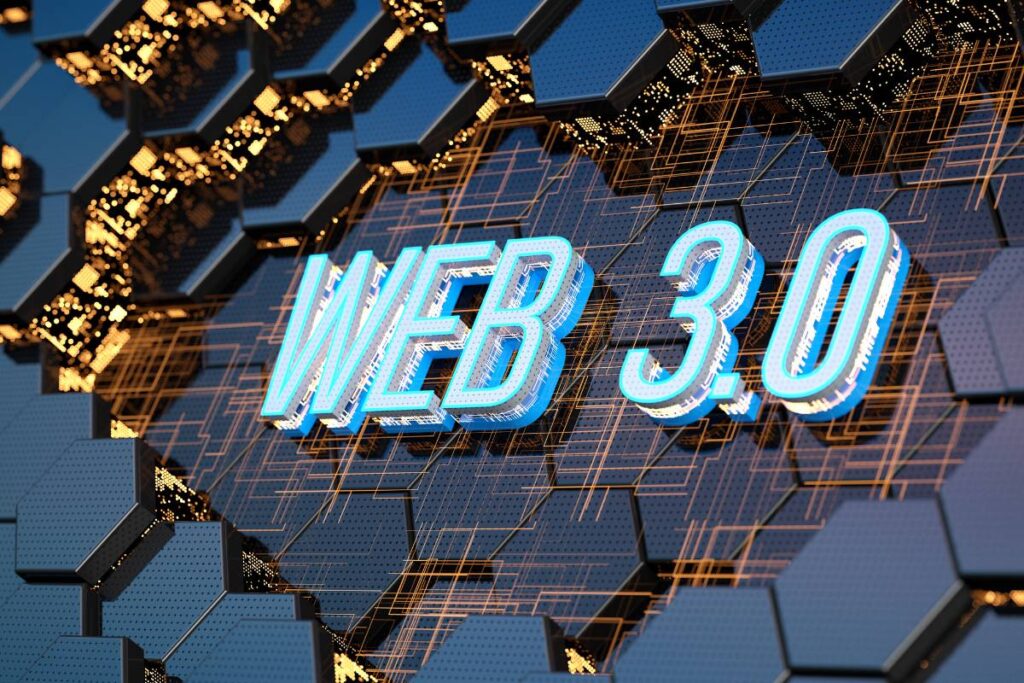
Introduction The internet is undergoing a revolutionary transformation with the rise of Web3 and Decentralized Applications (DApps). As blockchain technology evolves, the future of the internet is shifting from centralized control to a decentralized, user-empowered ecosystem. This blog explores the potential of Web3, DApps, blockchain technology, smart contracts, and their future implications. Understanding Web3 Web3 represents the third generation of the internet, built on blockchain and decentralization. Unlike Web2, which is dominated by centralized entities like Google, Facebook, and Amazon, Web3 empowers users by giving them control over their data and digital assets. Key Features of Web3: What Are Decentralized Applications (DApps)? DApps are applications that run on blockchain networks instead of centralized servers. These applications leverage smart contracts to execute transactions autonomously. Popular blockchain networks for DApps include Ethereum, Solana, Binance Smart Chain (BSC), and Polkadot. Types of DApps: The Future of Web3 and DApps The evolution of Web3 and DApps is shaping the future of the internet. Here are some significant trends and developments to expect: 1. Mass Adoption of Blockchain Technology As blockchain becomes more user-friendly and scalable, businesses, governments, and individuals will integrate Web3 solutions into daily operations. Improved layer-2 solutions and zero-knowledge rollups (ZK-rollups) will enhance scalability and transaction speeds. 2. Mainstream Integration of DeFi Traditional finance is increasingly integrating DeFi applications. Decentralized banking, lending, and trading will disrupt traditional financial models, providing users with borderless, permissionless, and low-fee financial services. 3. Enhanced User Privacy and Data Ownership Web3 prioritizes data security and user ownership. With self-sovereign identity (SSI) and decentralized identity protocols, users can control their personal data and share it selectively, reducing data breaches and exploitation by corporations. 4. The Rise of the Metaverse and Web3 Gaming Metaverse projects are integrating Web3 technology to create decentralized virtual economies. Blockchain-based gaming, NFT integration, and immersive VR/AR experiences will redefine digital interactions and ownership. 5. Regulatory Developments in Web3 Governments worldwide are working on crypto and Web3 regulations. A clear regulatory framework will help legitimize blockchain technology and encourage institutional adoption while addressing concerns like money laundering, fraud, and security risks. 6. Evolution of DAOs (Decentralized Autonomous Organizations) DAOs are decentralized governance models where decisions are made through token-based voting. Future businesses, non-profits, and even political systems may adopt DAOs, leading to community-driven decision-making. 7. Cross-Chain Interoperability The future of Web3 depends on seamless connectivity between different blockchain networks. Cross-chain solutions like Polkadot, Cosmos, and Chainlink are improving interoperability, enabling DApps to function across multiple blockchains. Challenges and Risks of Web3 and DApps Despite the promising future, Web3 and DApps face certain challenges: Conclusion: The Future is Decentralized Web3 and Decentralized Applications (DApps) are revolutionizing the internet by shifting power from centralized entities to users. While challenges exist, technological advancements and regulatory clarity will accelerate adoption. As blockchain technology, DeFi, NFTs, DAOs, and the metaverse continue to evolve, the future of Web3 promises a more transparent, secure, and user-controlled digital world. Key Takeaways: Are you ready to embrace the Web3 revolution? Share your thoughts in the comments! FAQs 1. What is Web3? Web3 is the next evolution of the internet, focusing on decentralization, blockchain technology, and user sovereignty. 2. How do DApps work? DApps run on blockchain networks and use smart contracts to execute transactions autonomously. 3. What are the benefits of Web3? Web3 offers enhanced privacy, security, financial inclusion, and digital ownership. 4. Is Web3 the future of the internet? Yes, Web3 is expected to replace centralized models with decentralized, community-driven ecosystems.5. How can I start using Web3 and DApps? To get started, you need a crypto wallet (e.g., MetaMask), cryptocurrency, and access to Web3 platforms like DeFi exchanges or NFT marketplaces.
Storytelling in Marketing: How to Make Your Brand Unforgettable

Introduction In a world overflowing with advertisements, social media posts, and brand promotions, how can a brand truly stand out? The secret lies in storytelling—a timeless art that transforms ordinary brands into unforgettable ones. When done right, storytelling in marketing doesn’t just sell a product; it creates a deep emotional connection with the audience, making them loyal advocates of your brand. This blog explores a new-age approach to storytelling that aligns with Google’s latest algorithm updates while keeping your audience engaged. The Science Behind Storytelling in Marketing Humans are wired for stories. Studies in neuroscience show that stories activate multiple areas of the brain, making experiences more memorable and emotionally resonant. When a brand tells a compelling story, it engages the audience’s emotions, logic, and values, leading to higher brand recall and trust. But not just any story will do. To make your brand unforgettable, you need strategic storytelling techniques that resonate with both your audience and search engine algorithms. Crafting an Unforgettable Brand Story 1. Find Your Brand’s Core Narrative Instead of simply listing your product’s features, answer these key questions: For example, Nike’s “Just Do It” isn’t just a slogan—it’s a narrative about perseverance, pushing limits, and overcoming challenges. Your brand needs a similar core story that aligns with your values and mission. 2. Use the Hero’s Journey Framework A great storytelling structure is The Hero’s Journey, a proven framework used in Hollywood movies and bestselling novels. By positioning your customer as the hero and your brand as their trusted guide, you create an engaging narrative that resonates deeply. 3. Inject Emotion, Authenticity, and Relatability People connect with emotions, not corporate jargon. Your stories should: For instance, Coca-Cola’s “Share a Coke” campaign turned an ordinary product into an emotional experience by personalizing bottles with customer names. Modern Storytelling Techniques for Higher Engagement & SEO Ranking To ensure your storytelling ranks on Google’s latest algorithm, integrate these key strategies: 1. Interactive Storytelling with Video & Visuals 2. UGC (User-Generated Content) Storytelling Encourage customers to share their experiences with your brand through: This creates authentic content and boosts engagement, improving SEO ranking and brand credibility. 3. SEO-Optimized Storytelling for Google Discovery Google’s latest updates favor engaging, people-first content. Optimize your storytelling by: For example, instead of a boring “About Us” page, share a story-driven blog post about your brand’s journey with high-ranking keywords. 4. Omnichannel Storytelling Strategy To maximize reach, distribute your brand story across: This multi-platform approach improves Google’s crawlability and ensures your brand story reaches different audience segments. Case Study: Brands That Mastered Storytelling 1. Airbnb – The Power of Customer Stories Airbnb doesn’t just promote accommodations—it shares real customer experiences through personal travel stories, making its brand more relatable and aspirational. 2. Apple – The Art of Minimalist Storytelling Apple focuses on experience over specifications, using emotionally driven ads that highlight creativity, innovation, and user empowerment. 3. Patagonia – Storytelling with a Cause Patagonia connects deeply with eco-conscious consumers through sustainability-driven storytelling, aligning its brand mission with environmental activism. Conclusion: Make Your Brand Unforgettable Storytelling isn’t just a marketing strategy—it’s the backbone of an unforgettable brand. By crafting a compelling, emotional, and SEO-friendly narrative, you can connect with your audience, build trust, and stand out in a crowded digital world.
Reverse SEO: How to Push Down Negative Search Results
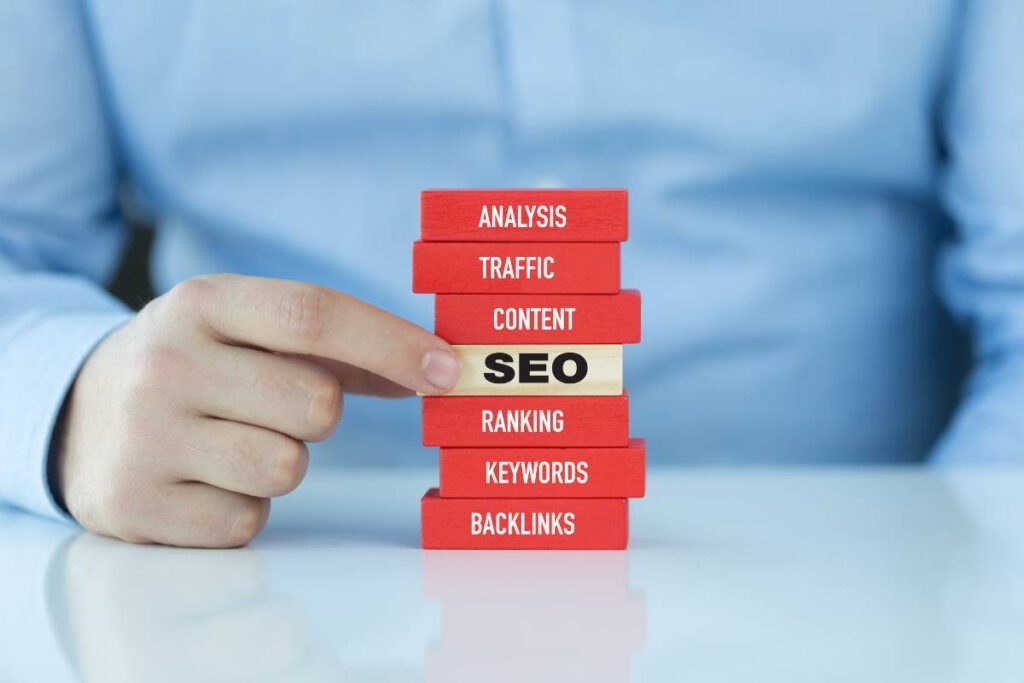
Understanding Reverse SEO and Its Importance Reverse SEO is a crucial strategy in online reputation management (ORM). It involves deliberately optimizing content to push down negative search results on Google and other search engines. Whether it’s a bad review, misleading article, or defamatory content, reverse SEO helps businesses and individuals regain control of their online image by suppressing unwanted search results. Negative search results can harm your brand reputation, influence potential customers, and even impact revenue. With search engines prioritizing fresh, relevant, and authoritative content, leveraging SEO best practices can help you take control of your search results and push harmful content down. How Does Reverse SEO Work? Reverse SEO focuses on creating and optimizing high-quality content that ranks higher than negative listings. Google’s algorithm favors relevance, authority, and engagement, so the goal is to ensure positive, optimized content outranks the negative pages. Here’s how you can effectively implement Reverse SEO: 1. Create High-Authority Content Google ranks content based on relevance, engagement, and authority. To outrank negative results, you must create content that Google considers valuable: 2. Optimize Your Website’s SEO Ensure your website is fully optimized to increase its domain authority: 3. Leverage High-Authority Domains Content published on high-authority domains ranks higher. Consider these platforms: 4. Build Strong Backlinks to Positive Content Google ranks pages based on their backlink profile. To boost positive content: 5. Social Media Optimization Social media profiles rank high in search results. Optimize your Facebook, Twitter, LinkedIn, and Instagram accounts by: 6. Create Video Content on YouTube YouTube videos rank prominently in Google search results. To leverage video content: 7. Suppress Negative Content with Web 2.0 Properties Platforms like Blogger, Tumblr, and WordPress.com allow you to create search-engine-optimized pages: 8. Wikipedia and Wikis If relevant, having a Wikipedia page can help push down negative search results. Wikipedia pages often rank on the first page of Google due to their high domain authority. 9. Utilize Online Reviews and Reputation Management Encourage positive reviews on platforms like Google My Business, Trustpilot, and Yelp. More positive reviews can overshadow negative feedback. 10. Monitor and Track Your Online Presence Use reputation management tools to track mentions of your name or brand: 11. Legal Approaches to Remove Harmful Content If negative content is defamatory or false, you can take legal action: Final Thoughts on Reverse SEO Implementing Reverse SEO requires patience, consistency, and a strategic approach. By creating high-quality content, building strong backlinks, and leveraging social media and high-authority platforms, you can effectively push down negative search results and restore your online reputation.The key to success lies in continuous monitoring and proactive reputation management. By staying ahead with SEO best practices, you can maintain a positive online presence and minimize the impact of harmful search results.
Long-Tail Keywords vs. Short Keywords: What Works in 2025?

In 2025, SEO strategies continue to evolve, and one of the biggest debates remains the effectiveness of long-tail keywords vs. short keywords. Understanding their impact is crucial for driving traffic, improving rankings, and increasing conversions. In this article, we analyze the differences, benefits, and the best practices for leveraging both in modern SEO. What Are Short Keywords? Short keywords, also known as head terms, are broad and highly competitive search phrases consisting of one to two words. Examples include: Advantages of Short Keywords Disadvantages of Short Keywords What Are Long-Tail Keywords? Long-tail keywords are longer, more specific search queries typically containing three or more words. Examples include: Advantages of Long-Tail Keywords Disadvantages of Long-Tail Keywords Short Keywords vs. Long-Tail Keywords: Which Works Best in 2025? 1. Competition & Ranking Potential Short keywords remain highly competitive, making them difficult for small to mid-sized businesses to rank for. Long-tail keywords, however, provide faster ranking opportunities due to lower competition. 2. Search Intent Alignment Long-tail keywords align better with user intent, helping businesses attract qualified leads rather than generic visitors. 3. Voice Search & AI SEO With the rise of voice search and AI-powered search engines, long-tail keywords become even more crucial in 2025. Voice assistants like Siri, Alexa, and Google Assistant process natural language queries, which are typically longer. 4. Content Marketing & Topic Clusters Modern SEO prioritizes topic clusters, where a pillar page targets a broad keyword, and supporting content targets long-tail keywords. This strategy enhances content relevance and search visibility. Best Practices for Using Short and Long-Tail Keywords in 2025 1. Combine Both for Maximum Reach While long-tail keywords drive targeted traffic, short keywords improve brand awareness. A balanced SEO strategy should incorporate both. 2. Optimize for Conversational Search Queries Due to the rise of AI chatbots, Google’s MUM update, and voice search, focusing on natural, question-based phrases improves rankings. 3. Use AI & Keyword Research Tools Leveraging tools like Google Keyword Planner, Ahrefs, SEMrush, and Surfer SEO helps identify high-value keywords with the best ranking potential. 4. Focus on Semantic SEO Google’s algorithms increasingly rely on semantic understanding, meaning your content should be optimized for related keywords, synonyms, and topic relevance rather than just individual keywords. 5. Implement Structured Data Markup Schema markup helps search engines better understand content, improving chances of ranking in rich snippets and featured results. Final Verdict: What Should You Prioritize in 2025? If you’re looking for high-volume traffic and brand awareness, incorporating short keywords into your strategy remains essential. However, for higher conversion rates, easier rankings, and precise audience targeting, long-tail keywords should be your primary focus.SEO success in 2025 is all about understanding search intent, leveraging AI-driven SEO strategies, and balancing short and long-tail keywords effectively.
How to Use ChatGPT for Digital Marketing in 2025: The Future of AI-Powered Strategies

Introduction Digital marketing in 2025 is evolving rapidly, and AI-driven tools like ChatGPT are at the forefront. Unlike traditional methods, AI is reshaping the way businesses engage with audiences, optimize campaigns, and drive conversions. But with countless blogs already covering this topic, how can you leverage ChatGPT in an innovative way that aligns with Google’s latest algorithm updates? This blog explores fresh, actionable strategies to help you stay ahead in the digital marketing game. 1. Content Creation That Ranks on Google Google’s latest algorithm prioritizes content that is: How to Use ChatGPT: 2. Hyper-Personalized Marketing Campaigns Personalization is key to higher engagement and conversions. ChatGPT helps marketers: How to Use ChatGPT: 3. SEO-Enhanced Keyword Strategy SEO in 2025 is about understanding user intent rather than just stuffing keywords. ChatGPT can: How to Use ChatGPT: 4. Voice Search & Conversational AI Optimization With voice search on the rise, conversational AI is critical for digital marketing success. How to Use ChatGPT: 5. Social Media Domination with AI Social media algorithms in 2025 favor engagement and authenticity. ChatGPT can help: How to Use ChatGPT: 6. AI-Powered Analytics & Decision Making Data-driven marketing is essential, and AI can automate analytics interpretation. How to Use ChatGPT: Conclusion ChatGPT is not just a content tool; it’s a game-changer for digital marketers in 2025. By leveraging AI for content creation, SEO, social media, personalization, and analytics, businesses can stay ahead in an ever-evolving digital landscape. Start integrating ChatGPT into your strategy today and watch your marketing efforts reach new heights. What’s Next? Are you ready to supercharge your digital marketing with AI? Let us know how you plan to use ChatGPT in your marketing strategy!
How to Start a Blog and Make Money in 2025 (Step-by-Step Guide)

Blogging remains one of the most profitable and sustainable ways to make money online. Whether you’re looking to build a personal brand, generate passive income, or turn blogging into a full-time career, this guide will walk you through every essential step. Follow our comprehensive, step-by-step approach to launching a successful blog that ranks well on Google and generates revenue in 2025. Step 1: Choose the Right Niche Selecting the right niche is crucial for blogging success. A profitable niche should meet the following criteria: Popular Blog Niches for 2025: Step 2: Pick a Blogging Platform and Domain Name Best Blogging Platforms for 2025: How to Choose a Domain Name: Step 3: Set Up Web Hosting Your blog needs reliable hosting to load fast and perform well. Choose a hosting provider that offers: Best Web Hosting Providers for Bloggers in 2025: Step 4: Install and Customize WordPress Once your hosting is set up, install WordPress and configure it: Step 5: Create High-Quality Content Types of Blog Content That Rank Well in 2025: SEO Tips for Writing Blog Posts: Step 6: Drive Traffic to Your Blog Best Traffic Sources for Blogs: Step 7: Monetize Your Blog Proven Ways to Make Money Blogging in 2025: Step 8: Track Performance and Optimize Use these tools to measure and improve your blog’s success: Final Thoughts Starting a blog in 2025 is one of the best ways to earn money online. By selecting a profitable niche, optimizing for SEO, creating high-quality content, and using multiple monetization methods, you can build a blog that generates sustainable income.
How to Set Up Your First Google Ads Campaign

Google Ads is one of the most powerful advertising platforms available today, allowing businesses to reach potential customers precisely when they are searching for relevant products or services. Setting up your first Google Ads campaign may seem daunting, but by following a structured approach, you can create a highly effective campaign that delivers results. In this guide, we will walk you through every step in great detail. Step 1: Create a Google Ads Account Before you can launch your campaign, you need a Google Ads account. Follow these steps: Once your account is set up, you’re ready to create your first campaign. Step 2: Choose the Right Campaign Type Google Ads offers various campaign types. Choose the one that aligns with your business goals: For beginners, a Search Campaign is the best option as it targets users actively searching for your services. Step 3: Define Your Campaign Goals Clearly define what you want to achieve: Google Ads will tailor campaign settings based on your selected goal. Step 4: Select Your Target Audience To ensure your ads reach the right people, define your target audience: Precise targeting helps optimize ad spend and improve conversion rates. Step 5: Perform Keyword Research Keywords determine when your ad appears. Use tools like Google Keyword Planner to find relevant keywords with high search volume and low competition. Best Practices for Keyword Selection: Step 6: Set Your Budget and Bidding Strategy Your budget determines how much you’re willing to spend daily on ads. Google provides different bidding strategies: For beginners, Maximize Clicks is a good starting point before switching to more advanced strategies. Step 7: Create Compelling Ad Copy Your ad copy is crucial in attracting clicks. Follow these best practices: Example of a high-performing ad: Headline 1: Affordable Digital Marketing ServicesHeadline 2: Boost Your Business Today!Description: Get expert digital marketing solutions tailored to your needs. Contact us for a free consultation!CTA: Learn More. Step 8: Design a High-Converting Landing Page A well-optimized landing page increases conversions. Your landing page should: Step 9: Launch and Monitor Your Campaign Once everything is set up, launch your campaign and monitor key metrics: Regularly analyze data and optimize bids, keywords, and ad copy for better performance. Step 10: Optimize for Better Results Final Thoughts Setting up a Google Ads campaign requires careful planning, but by following these steps, you can create a highly successful campaign that drives quality traffic and conversions. Consistent monitoring and optimization will help maximize your return on investment. Frequently Asked Questions (FAQs) 1. How much should I spend on my first Google Ads campaign? Your budget depends on your goals and industry. Start with at least $10-$20 per day and adjust based on performance. 2. How long does it take for Google Ads to show results? It usually takes a few days for ads to start performing, but optimization may take a few weeks for significant results. 3. Can I run Google Ads without a website? Yes, you can run campaigns that generate calls or app downloads without a website, but a landing page improves conversions. 4. What is a good Quality Score in Google Ads? A Quality Score of 7 or higher is considered good. It helps reduce costs and improves ad placements. 5. Can I pause my Google Ads campaign anytime? Yes, you can pause, edit, or restart your campaign at any time without losing data.
How to Rank Without Backlinks: The New SEO Approach
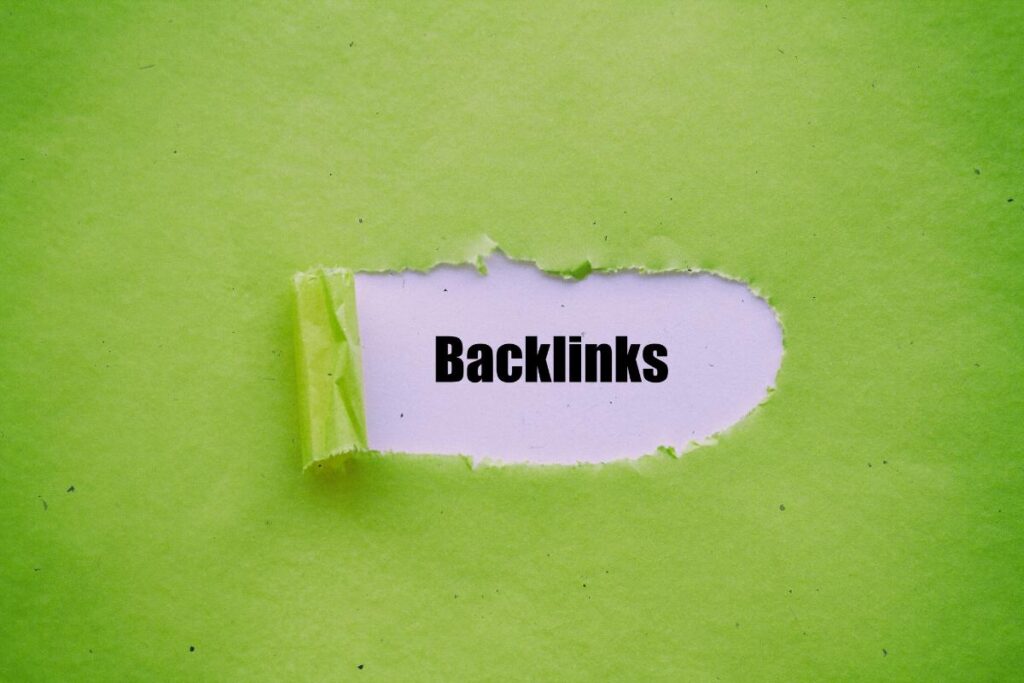
In the ever-evolving landscape of search engine optimization (SEO), backlinks have long been considered one of the most powerful ranking factors. However, the game has changed. Google’s algorithms have become more sophisticated, prioritizing user experience, content relevance, and technical SEO over sheer link quantity. If you want to rank on Google without relying on backlinks, you must adopt a modern SEO strategy that focuses on content quality, user intent, and site optimization. 1. High-Quality, In-Depth Content That Satisfies Search Intent The foundation of ranking without backlinks lies in producing exceptional content that thoroughly answers the search query. Google’s algorithms, including RankBrain and BERT, analyze content based on relevance, readability, and user satisfaction. Strategies to Create Content That Ranks: 2. Keyword Optimization and Semantic SEO Keyword research remains essential, but modern SEO goes beyond just placing keywords in the text. Google now understands synonyms, related terms, and the context in which words are used. Best Practices for Keyword Optimization: 3. Technical SEO Enhancements for Higher Rankings Technical SEO plays a crucial role in ensuring that search engines can crawl, index, and understand your website. Even without backlinks, technical optimizations can significantly improve rankings. Key Technical SEO Factors to Focus On: 4. User Experience (UX) and Engagement Metrics Google tracks user engagement signals such as bounce rate, dwell time, and CTR (Click-Through Rate) to determine content relevance. A high-quality user experience leads to better rankings. Ways to Enhance UX and Engagement: 5. Zero-Click Searches and Featured Snippets Google now prioritizes instant answers through featured snippets, People Also Ask boxes, and knowledge panels. Ranking for these means you can get traffic without backlinks. How to Optimize for Featured Snippets: 6. Leveraging Social Media and Brand Authority While social signals aren’t direct ranking factors, they influence SEO indirectly by boosting brand authority and driving traffic. Social Media SEO Tips: 7. Local SEO for Organic Visibility For businesses targeting local audiences, Google My Business (GMB) and local SEO are crucial even without backlinks. Local SEO Strategies: Final Thoughts Ranking on Google without backlinks is not only possible—it’s the new SEO frontier. By focusing on content quality, keyword optimization, technical SEO, and user engagement, you can achieve high search rankings organically.
How to Prepare for a Digital Marketing Interview and Commonly Asked Questions

Introduction Digital marketing is a rapidly evolving field, and securing a job in this competitive industry requires thorough preparation. Employers look for candidates with technical skills, strategic thinking, creativity, and analytical ability. Whether you are a fresher or an experienced professional, understanding the most frequently asked interview questions and how to answer them effectively can help you land your dream job. In this guide, we will walk you through key areas of digital marketing, essential preparation tips, and the top interview questions to expect, along with expert answers that will set you apart from other candidates. How to Prepare for a Digital Marketing Interview 1. Research the Company and Its Digital Presence Before stepping into an interview, make sure you: 2. Master Core Digital Marketing Concepts Employers expect candidates to be well-versed in fundamental concepts, including: 3. Brush Up on SEO Knowledge SEO is a critical skill in digital marketing interviews. Be prepared to discuss: 4. Get Hands-On Experience with Tools Familiarity with industry tools is a huge advantage. Practice using: 5. Prepare Real-World Case Studies Interviewers often ask for practical examples. Be ready to: Common Digital Marketing Interview Questions and Best Answers 1. What is Digital Marketing? Answer: Digital marketing is the practice of promoting products or services using online platforms such as search engines, social media, email, and websites. It includes SEO, PPC, content marketing, social media marketing, and analytics. 2. What Are the Latest Digital Marketing Trends? Answer: Some emerging trends include AI-driven marketing, voice search optimization, video marketing, influencer marketing, and interactive content like polls and quizzes. 3. What is the Difference Between SEO and SEM? Answer: SEO (Search Engine Optimization) focuses on organic search rankings, while SEM (Search Engine Marketing) includes paid advertising like Google Ads. SEM delivers instant visibility, while SEO is a long-term strategy. 4. How Do You Improve a Website’s SEO? Answer: Improving SEO involves: 5. What Metrics Do You Track in Digital Marketing? Answer: Key metrics include: 6. How Do You Measure the Success of a Content Marketing Campaign? Answer: A successful content marketing campaign is measured by: 7. How Do You Run a Successful PPC Campaign? Answer: 8. What Are Your Favorite Digital Marketing Tools? Answer: Some of the best tools I use are: 9. How Do You Stay Updated With Digital Marketing Trends? Answer: I stay updated by: 10. What Would You Do If a Digital Marketing Campaign Fails? Answer: If a campaign fails, I would: Final Thoughts Preparing for a digital marketing interview requires a mix of technical expertise, hands-on experience, and strategic thinking. By mastering core concepts, staying updated with trends, and practicing real-world scenarios, you can confidently impress hiring managers and land your ideal role.
How to Do an SEO Audit for Your Website (Complete Checklist)
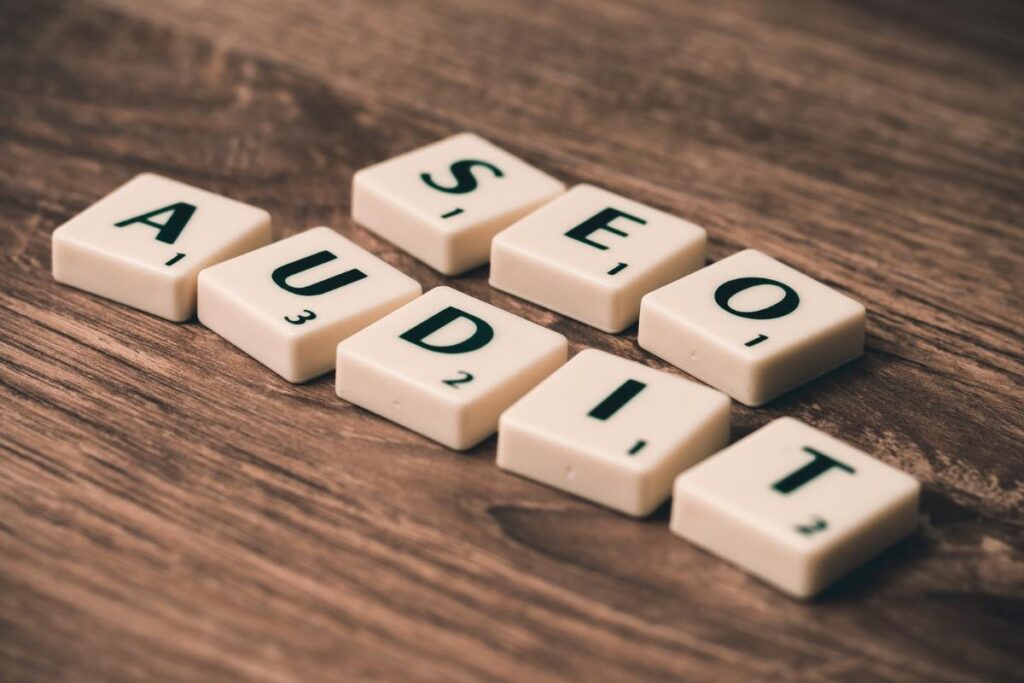
A comprehensive SEO audit is essential for ensuring your website is optimized for search engines and user experience. This guide will walk you through a detailed, step-by-step checklist to help you identify and fix SEO issues, improve rankings, and boost organic traffic. 1. Perform a Technical SEO Audit 1.1 Check Website Crawlability and Indexability 1.2 Fix Site Speed and Performance Issues 1.3 Optimize Mobile-Friendliness 1.4 Secure Your Website (HTTPS) 2. Conduct an On-Page SEO Audit 2.1 Optimize Meta Titles and Descriptions 2.2 Improve URL Structure 2.3 Check for Duplicate Content 2.4 Optimize Header Tags (H1, H2, H3) 2.5 Enhance Content for SEO 3. Conduct an Off-Page SEO Audit 3.1 Analyze Backlink Profile 3.2 Assess Social Media Presence 4. Improve User Experience (UX) for SEO 4.1 Reduce Bounce Rate 4.2 Improve Navigation & Site Structure 4.3 Optimize for Dwell Time 5. Local SEO Audit (For Businesses with Physical Locations) 5.1 Optimize Google My Business Listing 5.2 Build Local Citations 6. Conduct a Content Audit 6.1 Update and Refresh Old Content 6.2 Identify Keyword Gaps 7. Check Technical Issues with Structured Data & Schema Markup 7.1 Implement Schema Markup 7.2 Ensure Proper Open Graph & Twitter Cards 8. Monitor SEO Performance Regularly 8.1 Track SEO Metrics 8.2 Set Up Alerts for SEO Issues By following this comprehensive SEO audit checklist, you can identify and resolve SEO issues, improve search rankings, and drive more organic traffic to your website.
How to Create a Google Ads Business Manager Account

Why You Need a Google Ads Business Manager Account A Google Ads Business Manager Account (previously known as Google Ads Manager Account or MCC – My Client Center) is an essential tool for businesses and agencies that manage multiple Google Ads accounts. This powerful platform allows users to control multiple ad accounts from a single dashboard, streamlining operations and improving efficiency. Step-by-Step Guide to Creating a Google Ads Business Manager Account Step 1: Visit the Google Ads Manager Website To create your Google Ads Business Manager Account, navigate to the official Google Ads Manager website. Step 2: Sign in to Your Google Account Ensure you are signed into a Google Account associated with your business. If you do not have a Google Account, you must create one before proceeding. Step 3: Click on ‘Create a Manager Account’ Step 4: Choose Account Type Step 5: Submit and Confirm After entering the required information, click “Submit.” Google will then confirm the creation of your Google Ads Business Manager Account. Step 6: Set Up Billing Information To run ads, you need to configure your billing details. Step 7: Link Existing Google Ads Accounts If you already manage multiple Google Ads accounts, you can link them to your new Google Ads Business Manager Account: Step 8: Add Users and Manage Permissions A major benefit of Google Ads Business Manager is the ability to collaborate with your team. Advanced Features to Optimize Your Google Ads Business Manager Account 1. Automate Reporting and Insights 2. Use Automated Rules for Efficiency 3. Leverage Audience Targeting 4. Optimize Budget Allocation Common Issues and Troubleshooting Tips 1. Verification Issues 2. Linking Issues 3. Payment and Billing Problems 4. Account Suspension or Restrictions Final Thoughts Creating and managing a Google Ads Business Manager Account is a game-changer for businesses looking to scale their online advertising efforts efficiently. By following this detailed guide, you can set up your account, optimize campaigns, and improve overall performance.
How to Create a Business Portfolio in Meta Business Suite and Business Manager
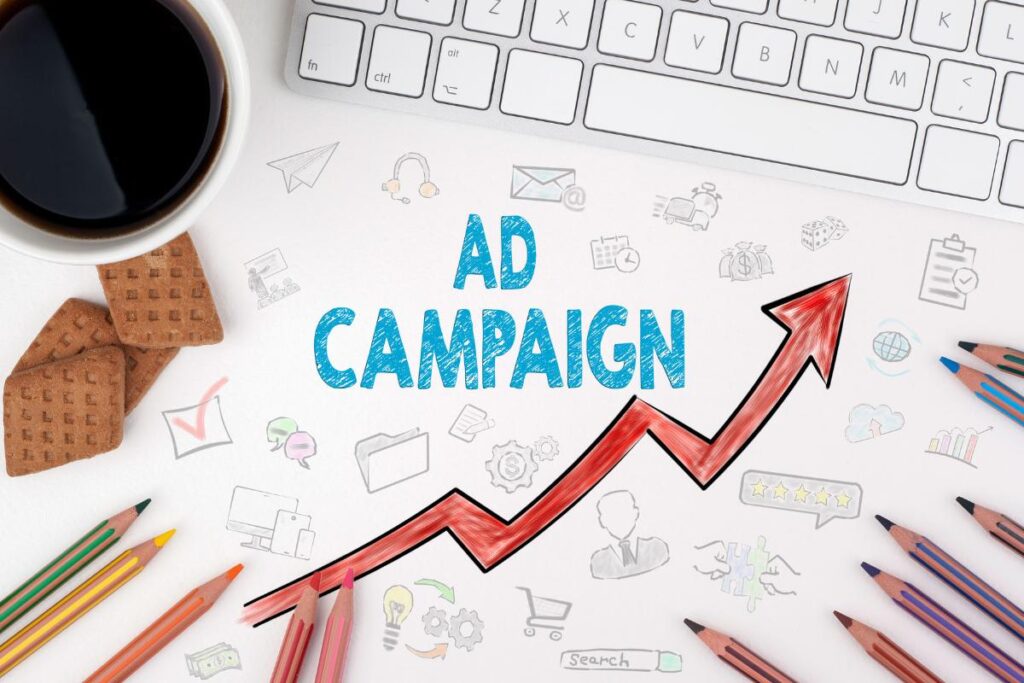
In today’s digital world, Meta Business Suite and Meta Business Manager provide businesses with a powerful way to manage their online presence. Creating a business portfolio within these platforms allows businesses to oversee multiple pages, ad accounts, and business assets in one place. Whether you are a digital marketer, entrepreneur, or business owner, this step-by-step guide will help you set up and optimize your Meta Business Portfolio effectively. What is Meta Business Suite and Business Manager? Meta Business Suite Meta Business Suite is an all-in-one platform that allows businesses to manage Facebook and Instagram pages, schedule posts, analyze insights, and respond to messages efficiently. Meta Business Manager Meta Business Manager, on the other hand, is a tool designed to help businesses control their digital assets, manage permissions for team members, and securely handle advertising accounts. By setting up a Business Portfolio in these platforms, you can streamline your social media management, ensuring that all your marketing efforts are well-organized. Step 1: Set Up Meta Business Manager 1.1 Create a Meta Business Manager Account 1.2 Add Your Business Assets Once your Meta Business Manager account is created, you need to add business assets such as Facebook Pages, Ad Accounts, and Instagram Accounts. Step 2: Set Up Meta Business Suite Once your Business Manager is set up, the next step is to configure Meta Business Suite to manage content, insights, and audience interactions. 2.1 Connect Your Facebook and Instagram Accounts 2.2 Assign Roles and Permissions Having a structured team with assigned roles ensures efficient workflow and security. Step 3: Organize Your Business Portfolio 3.1 Create Business Asset Groups Business Asset Groups help in organizing multiple business pages, ad accounts, and catalogs. 3.2 Set Up Business Verification To gain full access to Meta’s tools and services, verifying your business is crucial. Step 4: Optimize Your Business Portfolio for Growth 4.1 Use Meta Insights for Performance Tracking Meta Business Suite provides insightful analytics that help in optimizing content and ad performance. 4.2 Leverage Meta Ads Manager for Advertising Running targeted Facebook and Instagram Ads through Meta Business Suite enhances audience reach and conversions. 4.3 Enable Automated Messaging and Customer Support Providing quick responses to customer inquiries builds trust and enhances engagement. Step 5: Maintain and Scale Your Business Portfolio 5.1 Regularly Update Business Information Keeping your business details accurate and up-to-date ensures credibility. 5.2 Expand with New Business Assets As your business grows, adding new assets helps in scaling operations. 5.3 Secure Your Business Portfolio Protecting your business assets is crucial for preventing unauthorized access. Conclusion Creating and managing a business portfolio in Meta Business Suite and Business Manager is essential for any business looking to enhance its digital presence. By following these steps, businesses can effectively manage their online assets, optimize marketing strategies, and drive higher engagement and conversions. Staying updated with Meta’s latest tools and features will further ensure success in social media management.
Gamification in Digital Marketing: The New Secret to User Retention
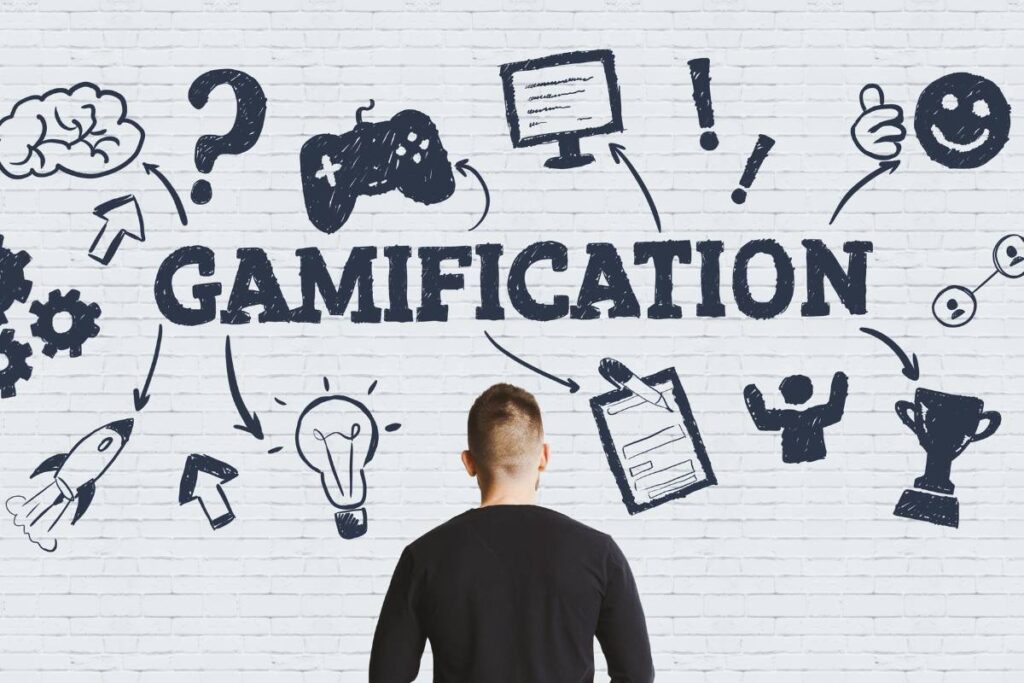
In the fast-evolving world of digital marketing, brands are constantly searching for innovative strategies to boost user engagement and retention. One of the most effective and increasingly popular techniques is gamification. By integrating game-like elements into marketing campaigns, brands can significantly enhance customer interactions, increase loyalty, and drive conversions. What is Gamification in Digital Marketing? Gamification involves incorporating game mechanics, psychology, and design elements into non-gaming environments to make user interactions more engaging. It can take many forms, including point-based reward systems, challenges, badges, leaderboards, quizzes, and interactive storytelling. Why is Gamification Effective? Gamification taps into fundamental human psychology: Innovative Gamification Strategies for Digital Marketing 1. Interactive Rewards and Loyalty Programs Brands can gamify loyalty programs by introducing tiered memberships, points, and milestone rewards. Instead of offering simple discounts, brands can design engaging challenges where users earn points for completing specific actions like purchases, referrals, or social shares. Example: Starbucks Rewards gamifies customer purchases by offering stars for each order, which can be redeemed for free products and exclusive perks. 2. Quizzes and Interactive Content Quizzes, personality tests, and trivia challenges can drive user engagement by making marketing content more personalized and interactive. Example: BuzzFeed’s quizzes attract millions of users by making them feel involved and curious about the results. Brands can leverage similar mechanics to guide users toward specific products or services. 3. Spin-to-Win Campaigns A simple yet effective strategy is the “spin the wheel” feature on websites where users can win discounts, coupons, or special deals. This small addition increases excitement and boosts conversion rates. Example: E-commerce websites like Shopify stores frequently use spin-to-win pop-ups to capture emails and enhance user engagement. 4. Leaderboards and Competition-Based Marketing Encouraging friendly competition through leaderboards, challenges, and contests can increase brand engagement and word-of-mouth marketing. Example: Nike Run Club encourages fitness enthusiasts to participate in challenges, track their progress, and compete with friends, fostering strong brand loyalty. 5. Augmented Reality (AR) & Virtual Reality (VR) Integration With advancements in AR and VR, brands can create immersive gamified experiences to engage customers in unique ways. Example: IKEA Place AR app allows users to virtually place furniture in their homes, creating an interactive and gamified shopping experience. 6. Storytelling Through Gamification Rather than simply selling products, brands can use interactive storytelling to engage users. Choose-your-own-adventure-style campaigns make users feel like active participants in a brand’s journey. Example: Duolingo keeps users engaged in language learning through storytelling, progress bars, and achievement badges. 7. Gamified Social Media Engagement Social media contests, hashtag challenges, and interactive posts keep users engaged with a brand’s digital presence. Brands can offer rewards for sharing content, tagging friends, or completing specific actions. Example: Instagram challenges like #InMyFeelingsChallenge went viral, proving how gamification can drive social media engagement and virality. How to Implement Gamification in Your Digital Marketing Strategy Step 1: Understand Your Audience Step 2: Set Clear Goals Step 3: Choose the Right Gamification Elements Step 4: Integrate Across Marketing Channels Step 5: Track, Analyze, and Optimize Future of Gamification in Digital Marketing With AI, blockchain, and Web3 technologies, gamification will become even more interactive. NFT-based rewards, metaverse experiences, and AI-powered personalization will redefine customer engagement. Brands that leverage these innovations early will gain a significant competitive edge. Final Thoughts Gamification is no longer just a trend—it’s a powerful tool that enhances user retention, engagement, and brand loyalty. Whether through interactive rewards, quizzes, social media challenges, or AR experiences, incorporating game elements into digital marketing can significantly boost your brand’s success. The key is to create a seamless, fun, and rewarding experience that keeps users coming back.
E-E-A-T SEO: How to Build Authority and Trust in 2025

In the ever-evolving world of search engine optimization (SEO), E-E-A-T (Experience, Expertise, Authoritativeness, and Trustworthiness) is a critical factor for ranking high on Google. As Google’s algorithms become more sophisticated, websites must establish credibility and trust to secure top positions in search engine results. In 2025, implementing E-E-A-T SEO strategies is more essential than ever. This article will guide you through building authority and trust to dominate search rankings. What is E-E-A-T in SEO? E-E-A-T is an integral part of Google’s Search Quality Evaluator Guidelines and stands for: Google uses E-E-A-T to assess the credibility of websites, particularly those that belong to YMYL (Your Money, Your Life) categories, such as finance, health, and law. Strengthening these factors can significantly enhance your website’s SEO performance. Why is E-E-A-T Crucial for SEO in 2025? Google continuously refines its algorithms to prioritize high-quality content that provides value to users. With AI-generated content flooding the internet, search engines are now emphasizing trust and authenticity more than ever. A strong E-E-A-T profile can: How to Build Authority and Trust with E-E-A-T SEO 1. Showcase Experience and Expertise To establish experience and expertise, content creators must demonstrate real-world knowledge and hands-on insights. Strategies include: 2. Optimize Author and Site Credentials Google values content written by industry experts. To enhance credibility: 3. Build Authoritative Backlinks High-quality backlinks from trusted domains signal authority to search engines. Effective link-building strategies include: 4. Prioritize Content Quality and Relevance Creating high-quality content that aligns with user intent is key to SEO success. Best practices include: 5. Improve Website Trustworthiness Google ranks trustworthy sites higher in search results. To build trust: 6. Leverage Social Proof and User Engagement Engagement metrics influence how Google perceives a website’s authority. Boost user interaction by: 7. Optimize for Google’s Helpful Content Update With Google’s focus on helpful content, optimizing for user-centric content is essential. Follow these guidelines: 8. Strengthen On-Page SEO and Technical Optimization Beyond content quality, technical SEO plays a role in E-E-A-T compliance. Ensure: The Future of E-E-A-T in SEO As AI and machine learning reshape search algorithms, websites must prioritize authenticity, transparency, and credibility. The future of SEO lies in: Final Thoughts: Mastering E-E-A-T for SEO Success In 2025, E-E-A-T SEO is the cornerstone of high search rankings. By demonstrating experience, expertise, authority, and trust, businesses can enhance their online reputation, attract organic traffic, and outperform competitors.Implement these strategies now to future-proof your SEO efforts and dominate Google’s SERPs.
Chat with Customers from Your Business Profile: A Complete Guide
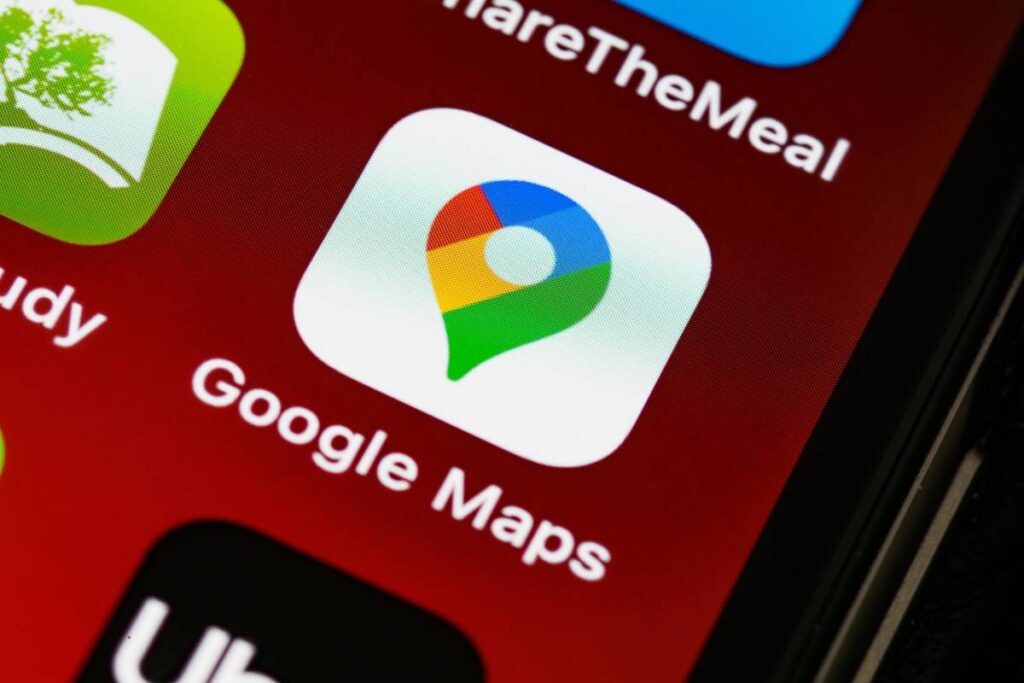
In today’s digital landscape, customer engagement is the key to business success. One of the most effective ways to interact with potential customers is through chat options available on your Google Business Profile. Businesses can enable text messaging or WhatsApp chat, allowing customers to ask questions, learn about services, and make informed purchasing decisions quickly. This guide walks you through everything you need to know about adding and managing chat options on your Business Profile, ensuring you maximize engagement and conversions. Why Enable Chat on Your Google Business Profile? Adding chat functionality to your Google Business Profile offers several benefits: How to Add or Edit Chat Options on Your Business Profile Step-by-Step Guide to Enabling Chat on Google Business Profile Follow these steps to enable text messaging or WhatsApp chat: Note: If both text messaging and WhatsApp options are enabled, only the text messaging option will be visible to customers. Optimizing Your Chat Feature for Better Engagement 1. Respond Promptly A delayed response can result in lost opportunities. Make sure to enable notifications and respond to messages as quickly as possible. 2. Use Automated Responses Set up greeting messages and FAQs to handle common inquiries efficiently. 3. Keep Responses Professional and Friendly Your tone should reflect professionalism while maintaining a warm and approachable attitude. 4. Provide Clear and Concise Answers Customers appreciate quick and precise information. Avoid unnecessary fluff in responses. 5. Encourage Customer Engagement Use chat to invite customers to visit your website, book appointments, or avail special offers. Frequently Asked Questions (FAQs) Q1: Can multiple Business Profiles use the same WhatsApp number? Yes, different Business Profiles can use the same WhatsApp link, allowing multiple locations of the same brand to communicate effectively. Q2: Are performance metrics available for chat interactions? Currently, Google does not provide chat-specific performance analytics, but tracking customer inquiries manually can help measure effectiveness. Q3: Can I disable chat after enabling it? Yes, you can turn off the chat option at any time by accessing your Business Profile and editing the chat settings. Q4: What regions support Google Business Profile chat? Chat features are available in select regions. If you do not see the option, Google may not yet support it in your country. Final Thoughts Adding a chat option to your Google Business Profile is a game-changer for customer engagement. It allows businesses to connect with potential customers effortlessly, answer their questions instantly, and enhance their overall experience. By leveraging text messaging or WhatsApp chat, you can establish trust, improve response times, and ultimately drive more sales. Ensure you keep your chat responses prompt, professional, and customer-focused to make the most of this feature.
